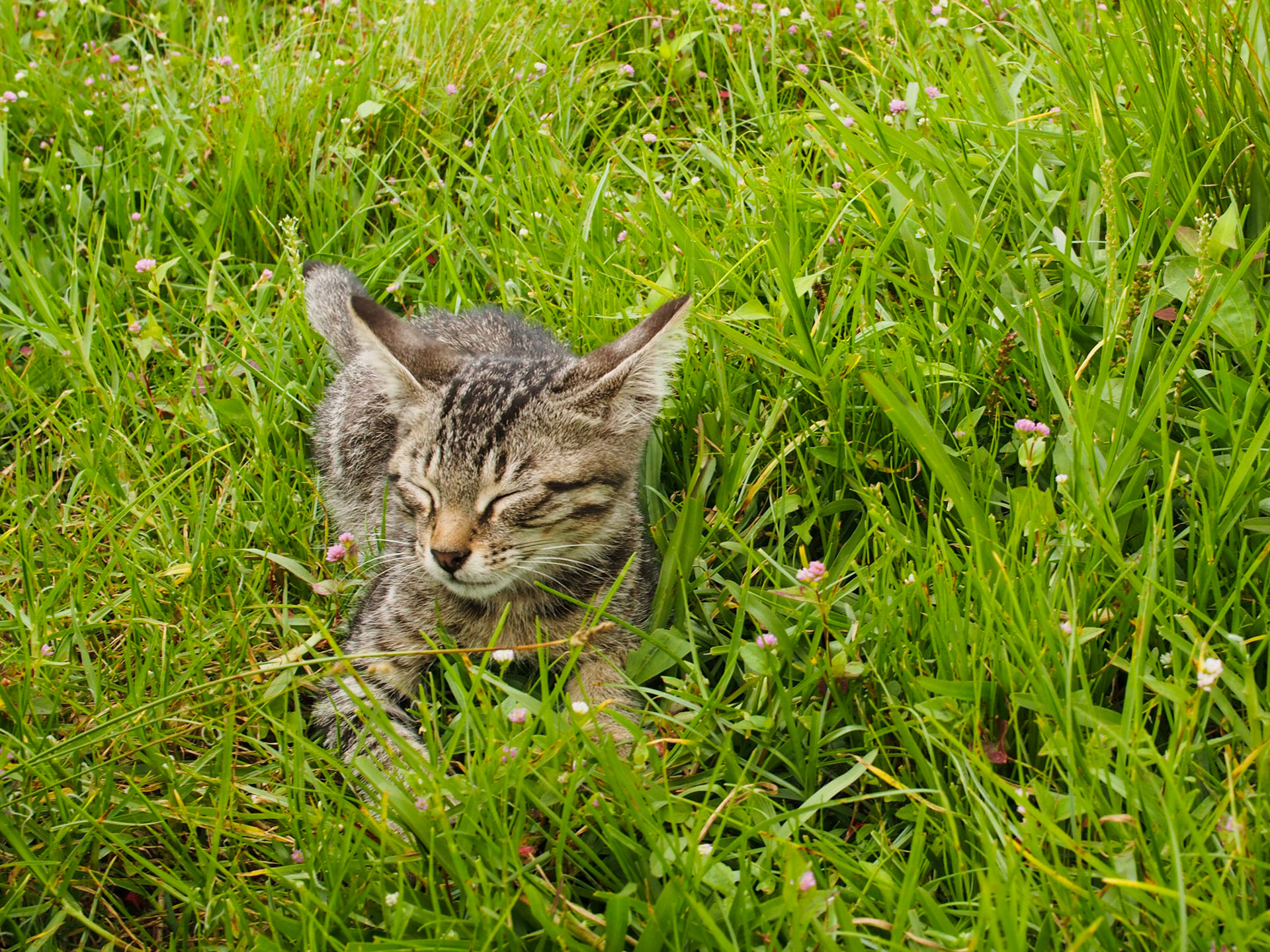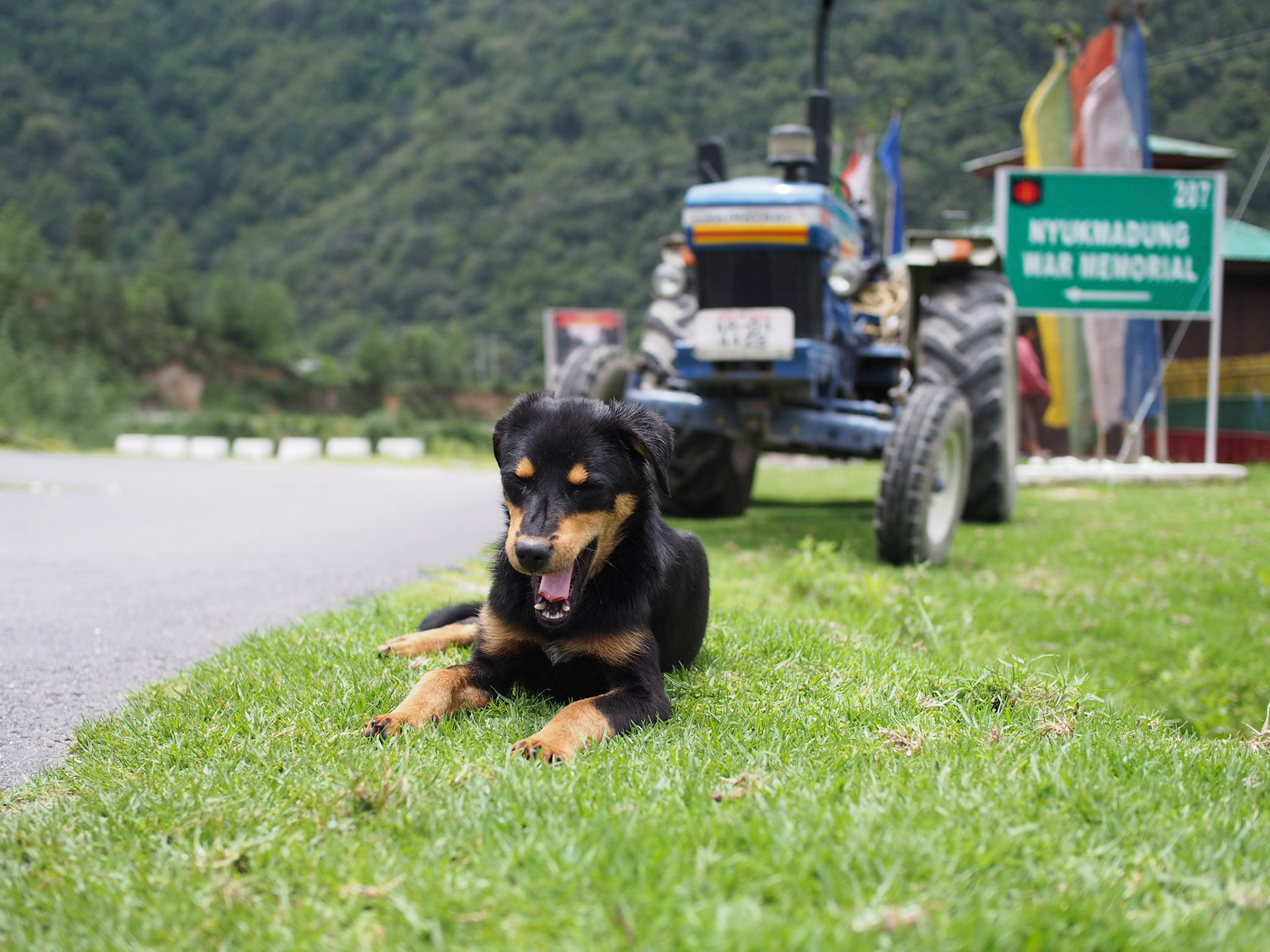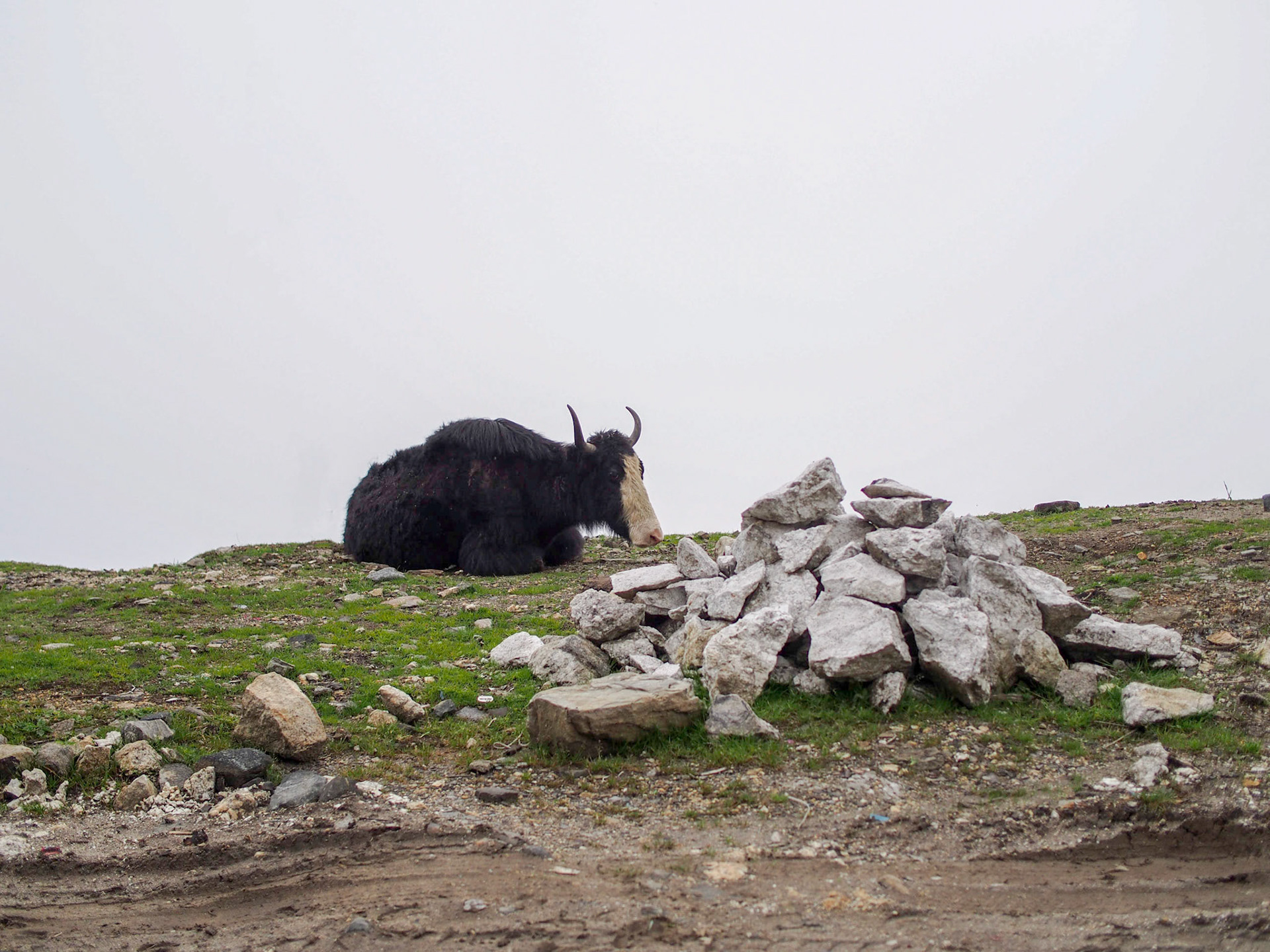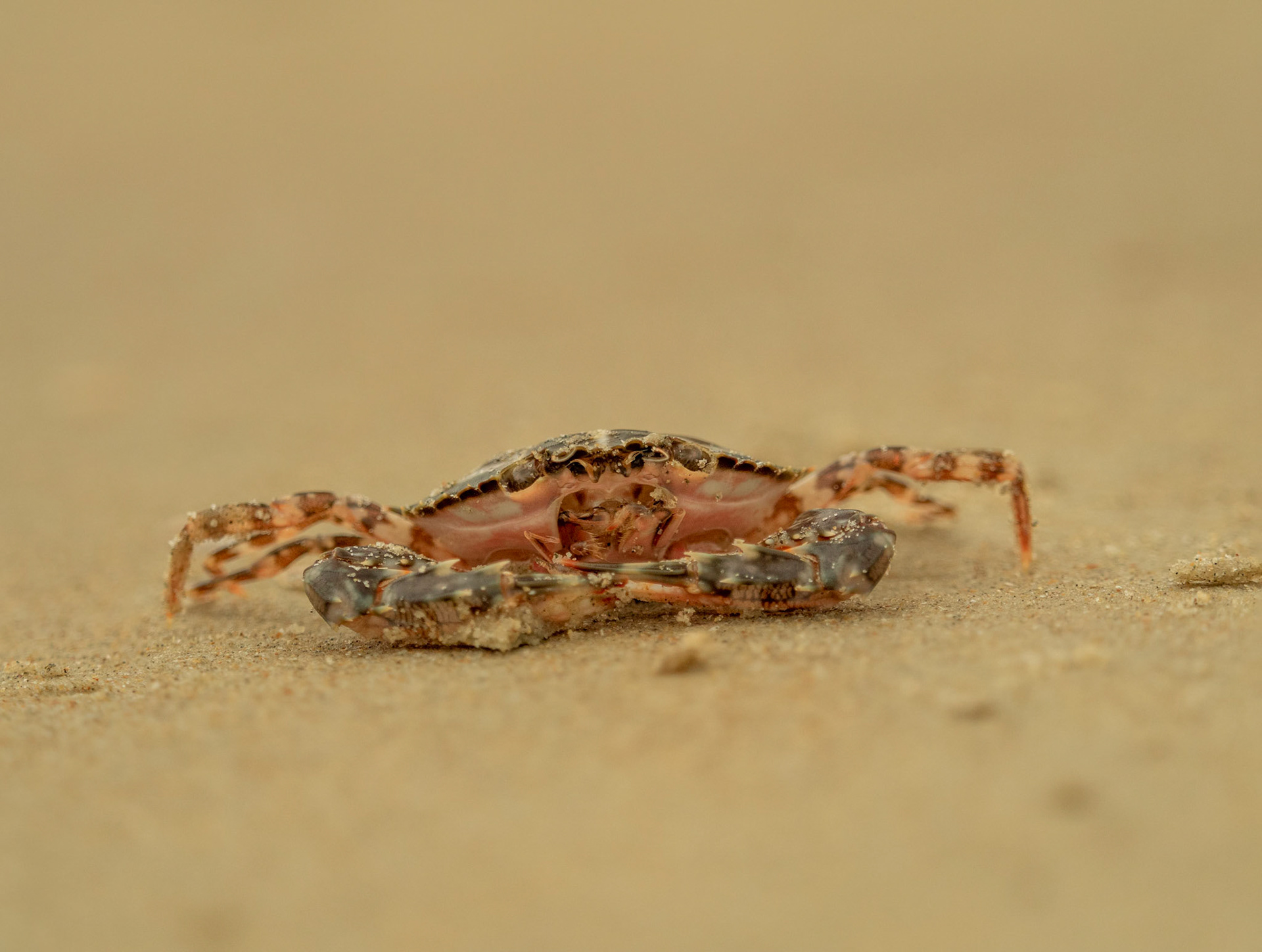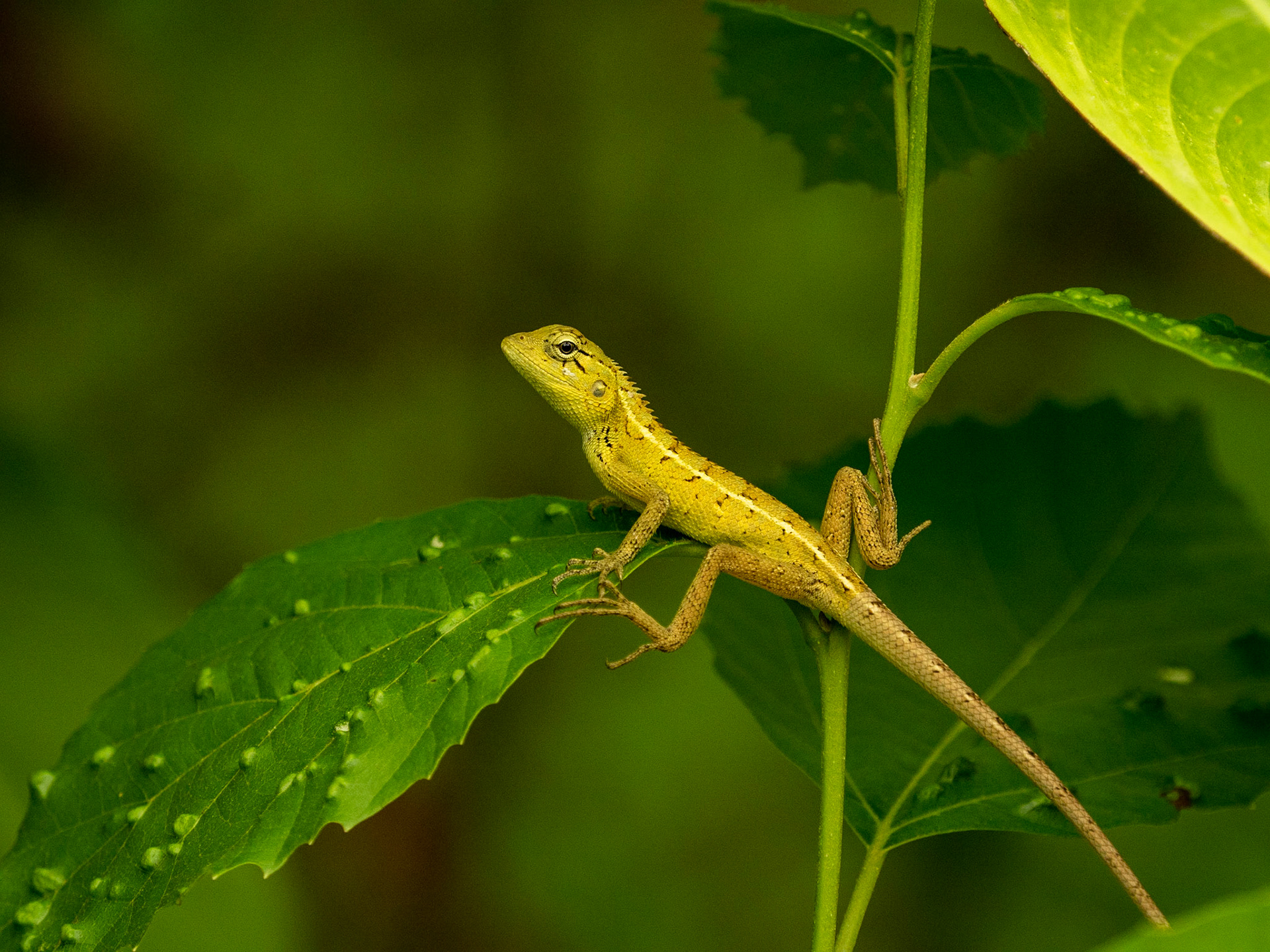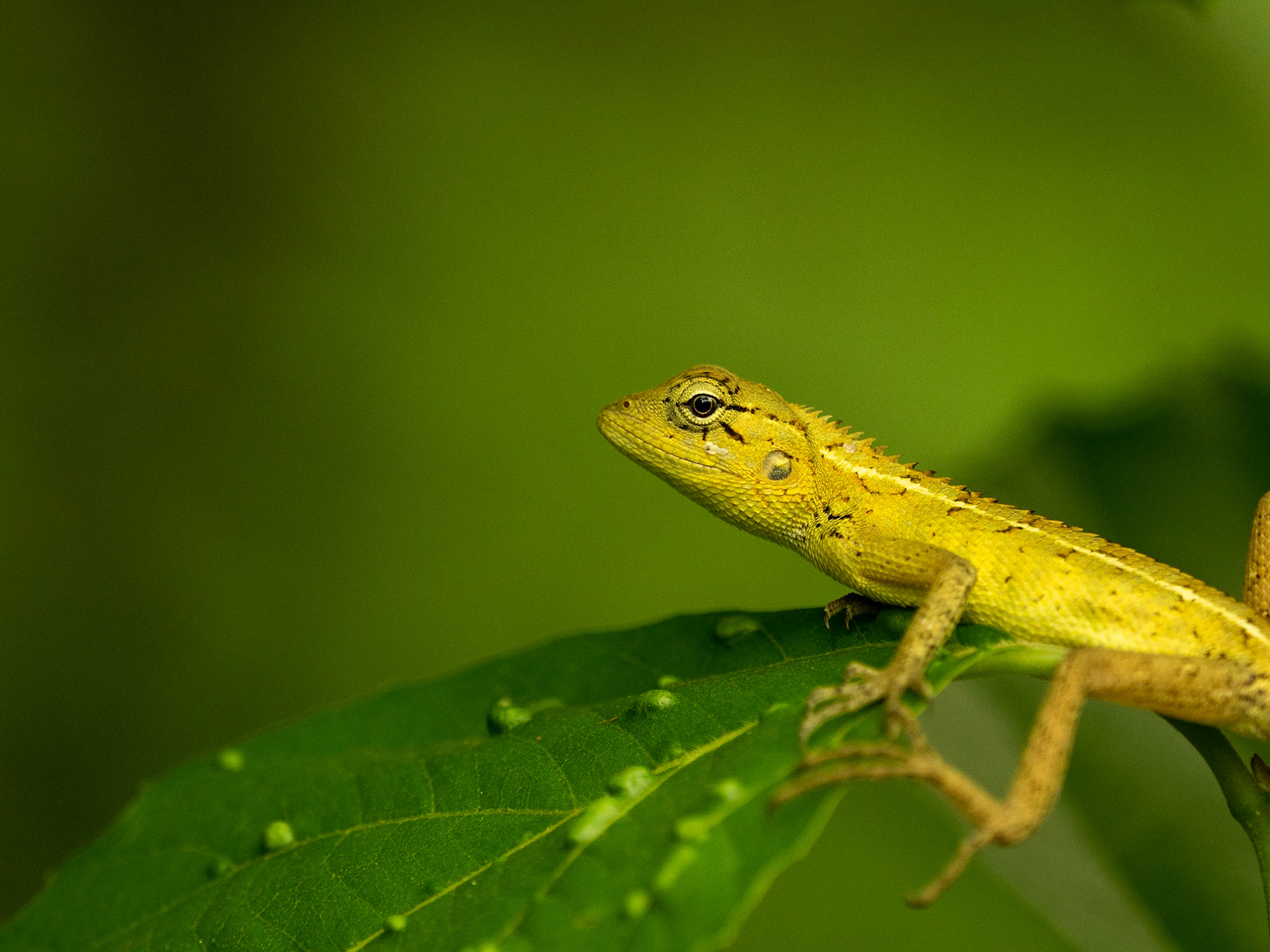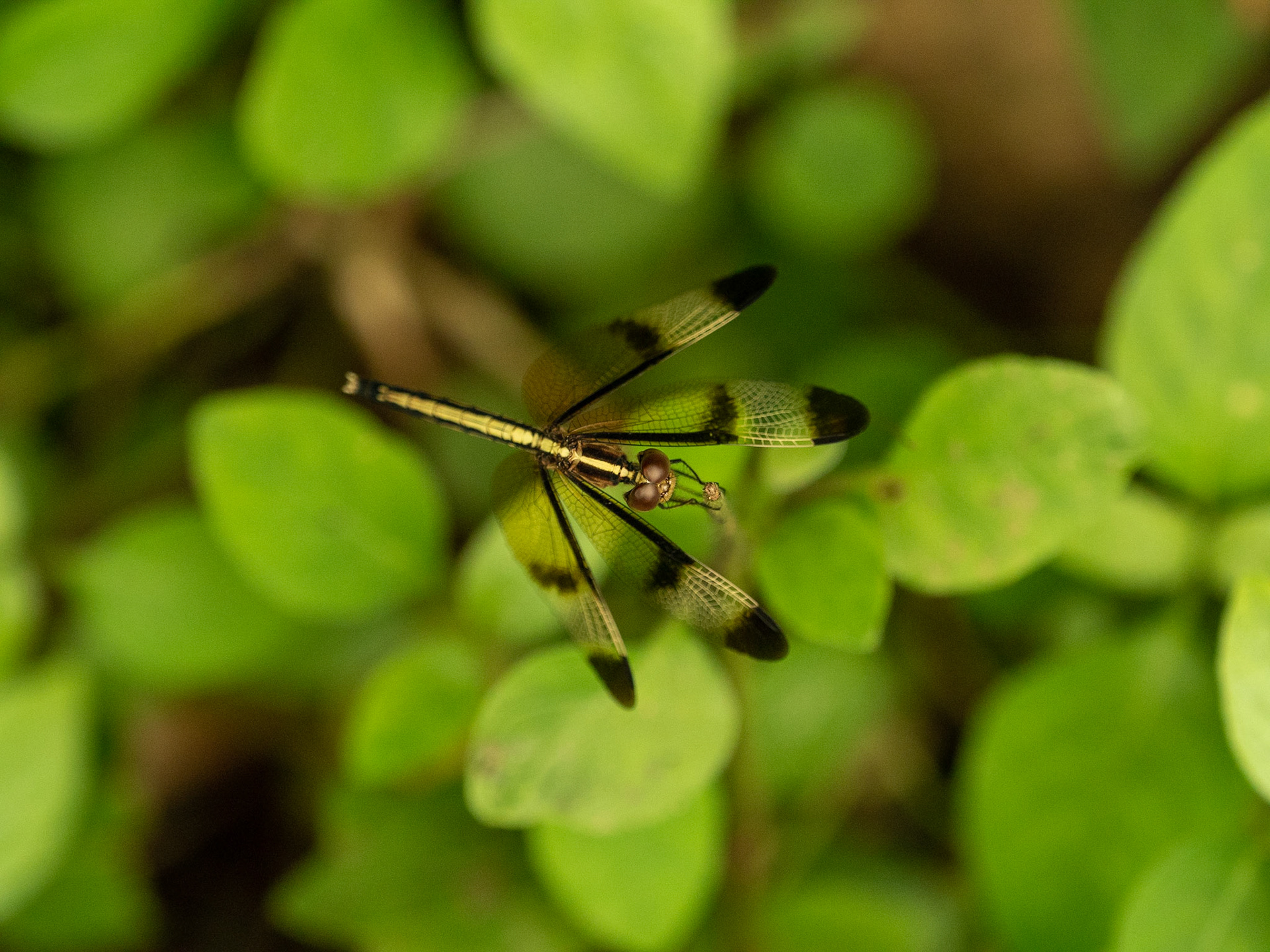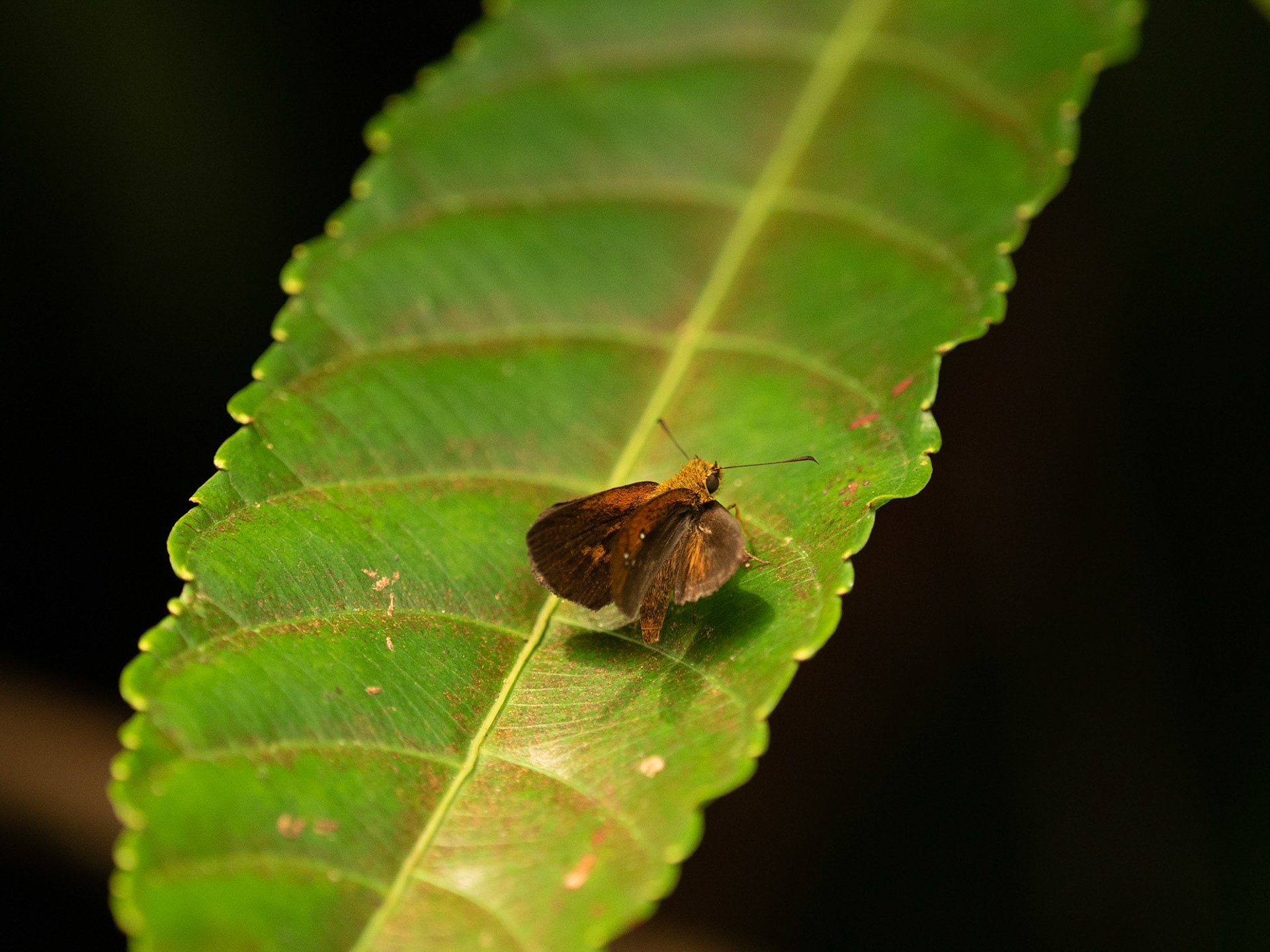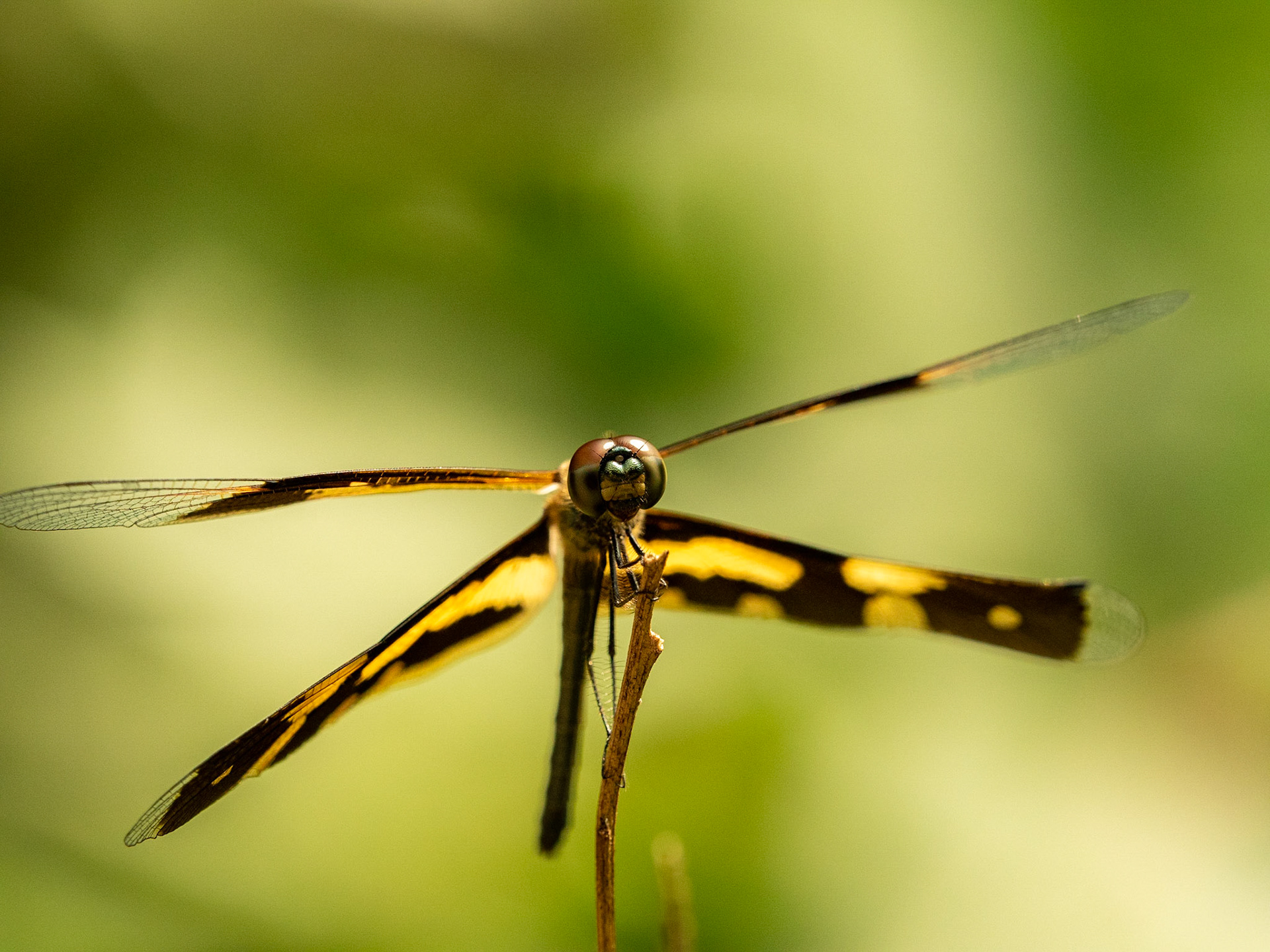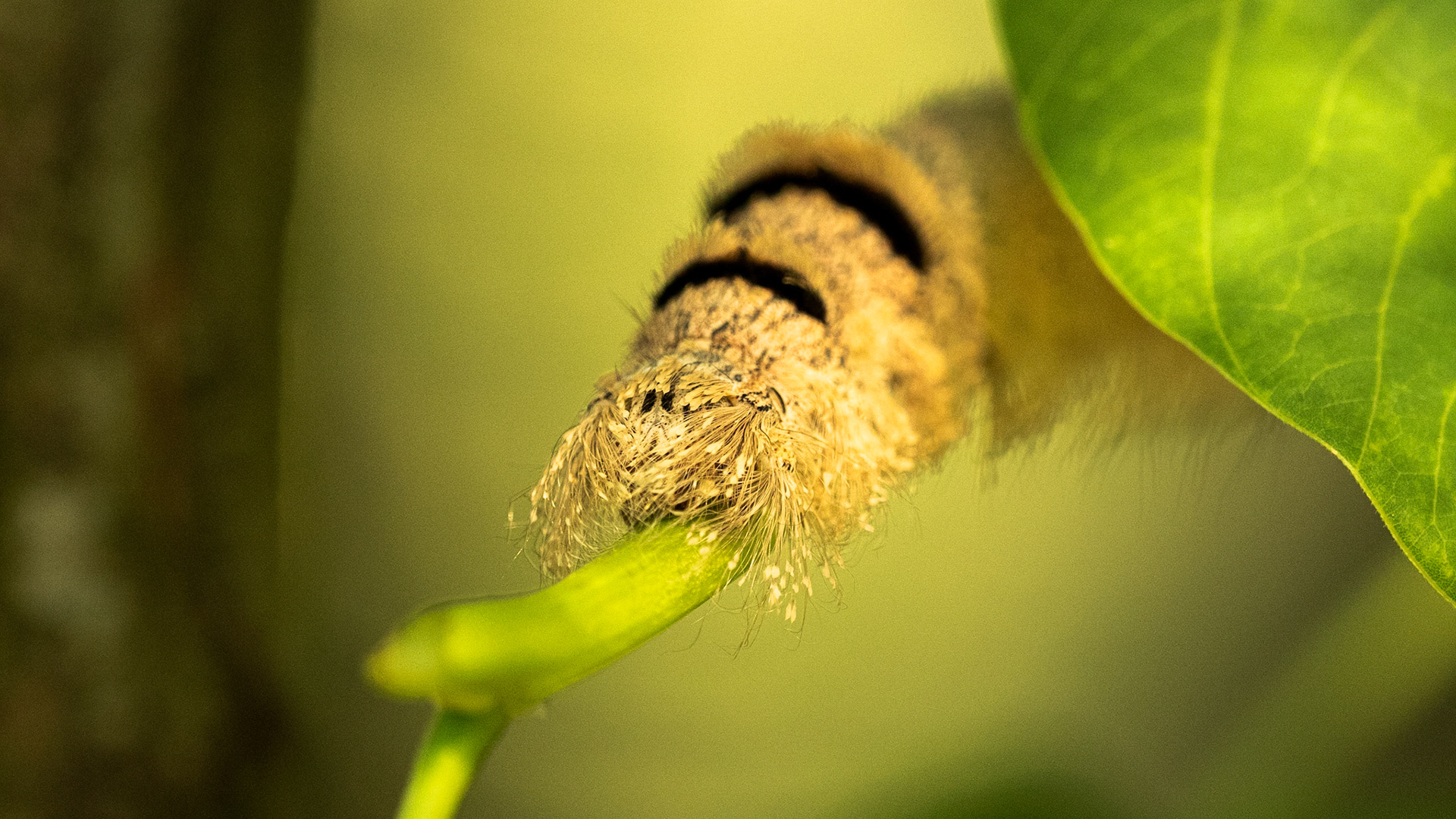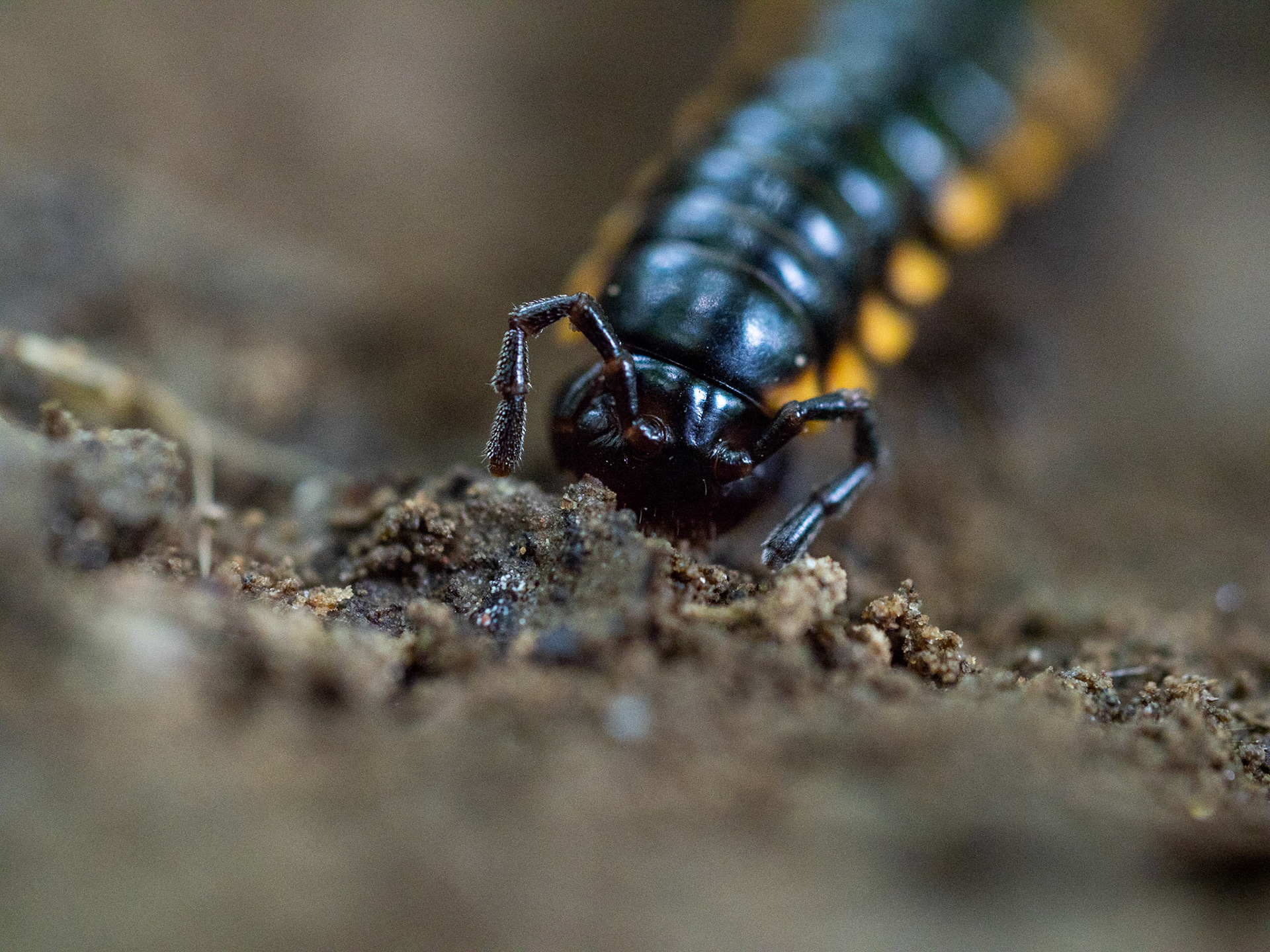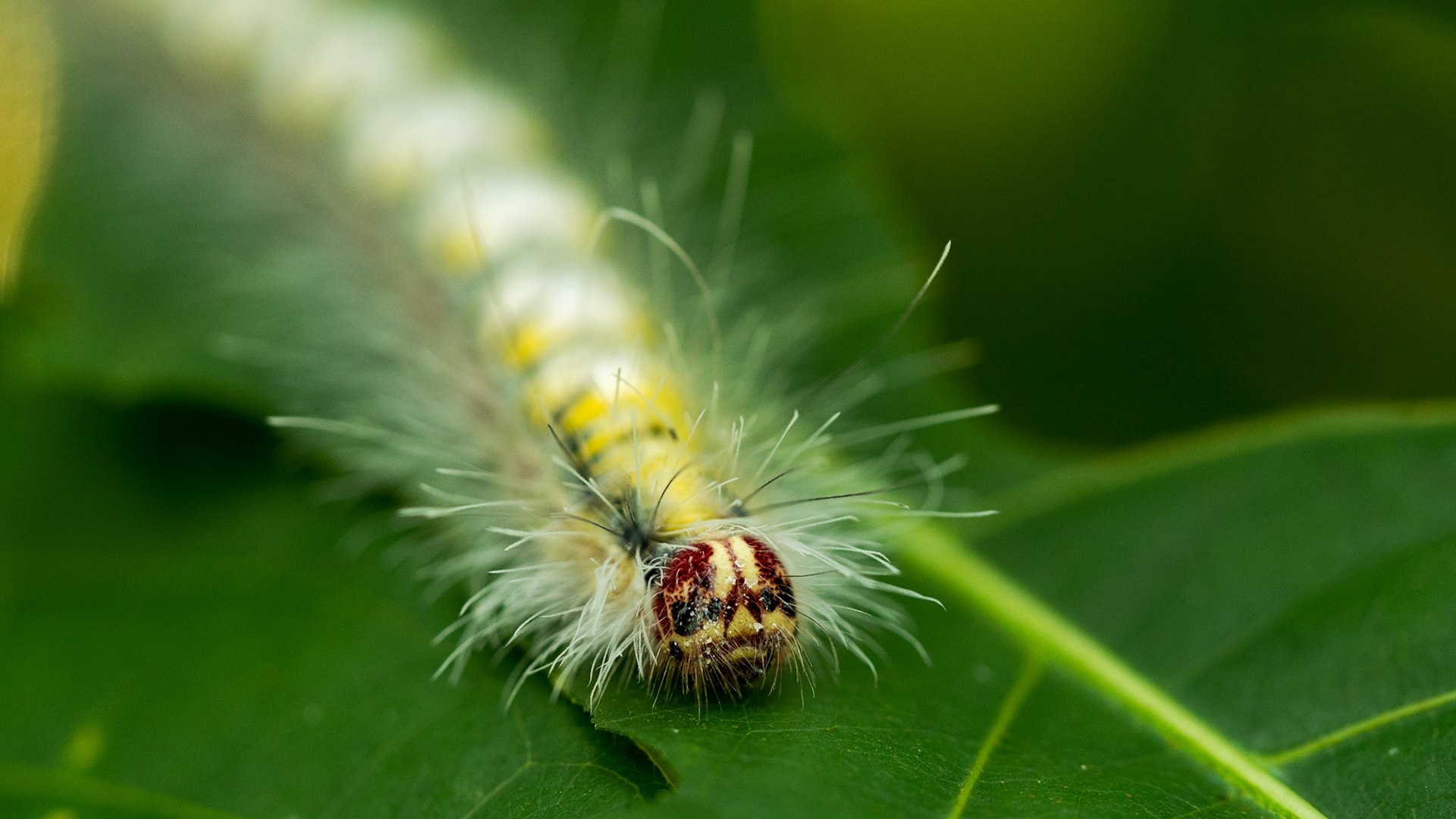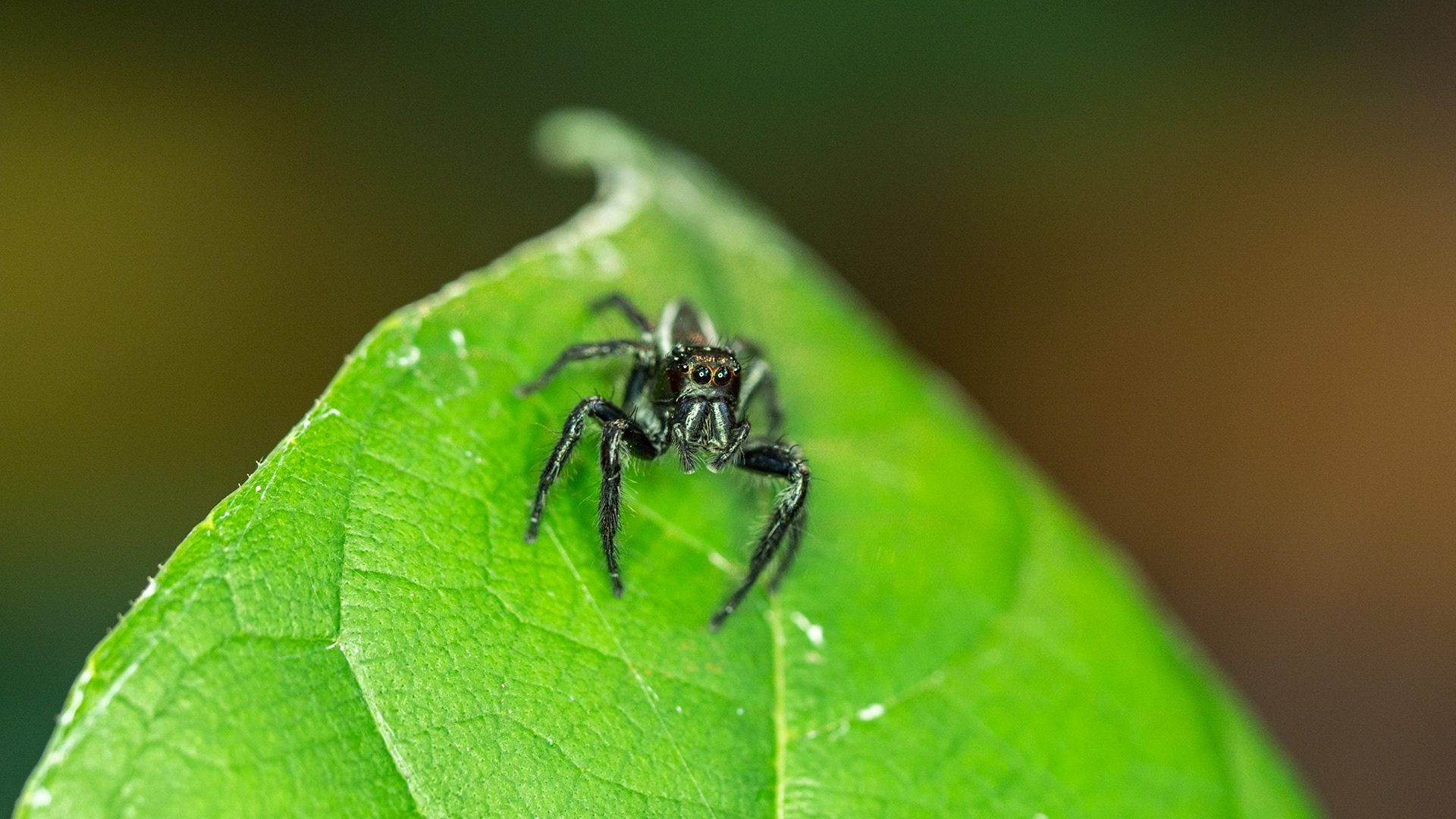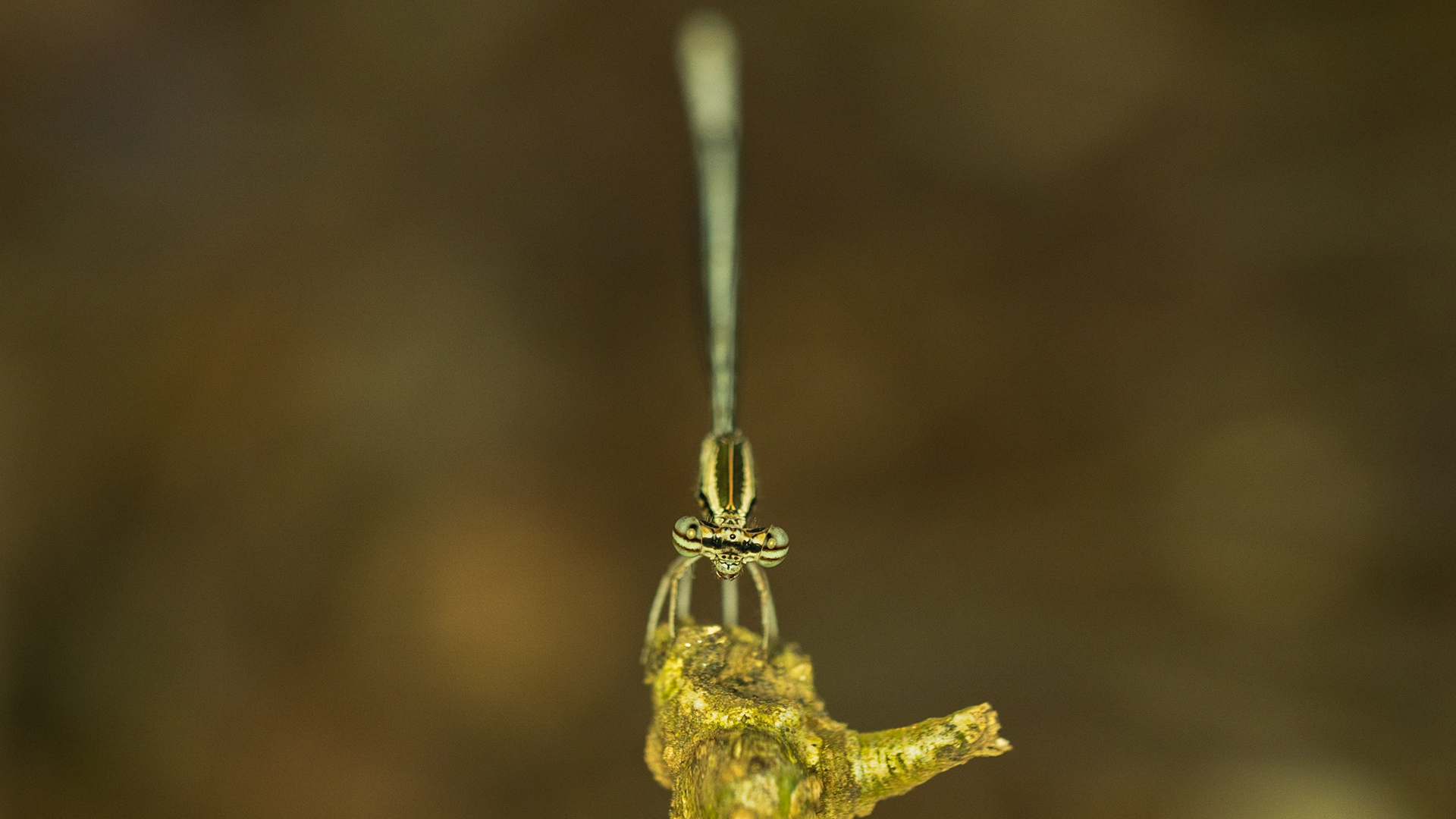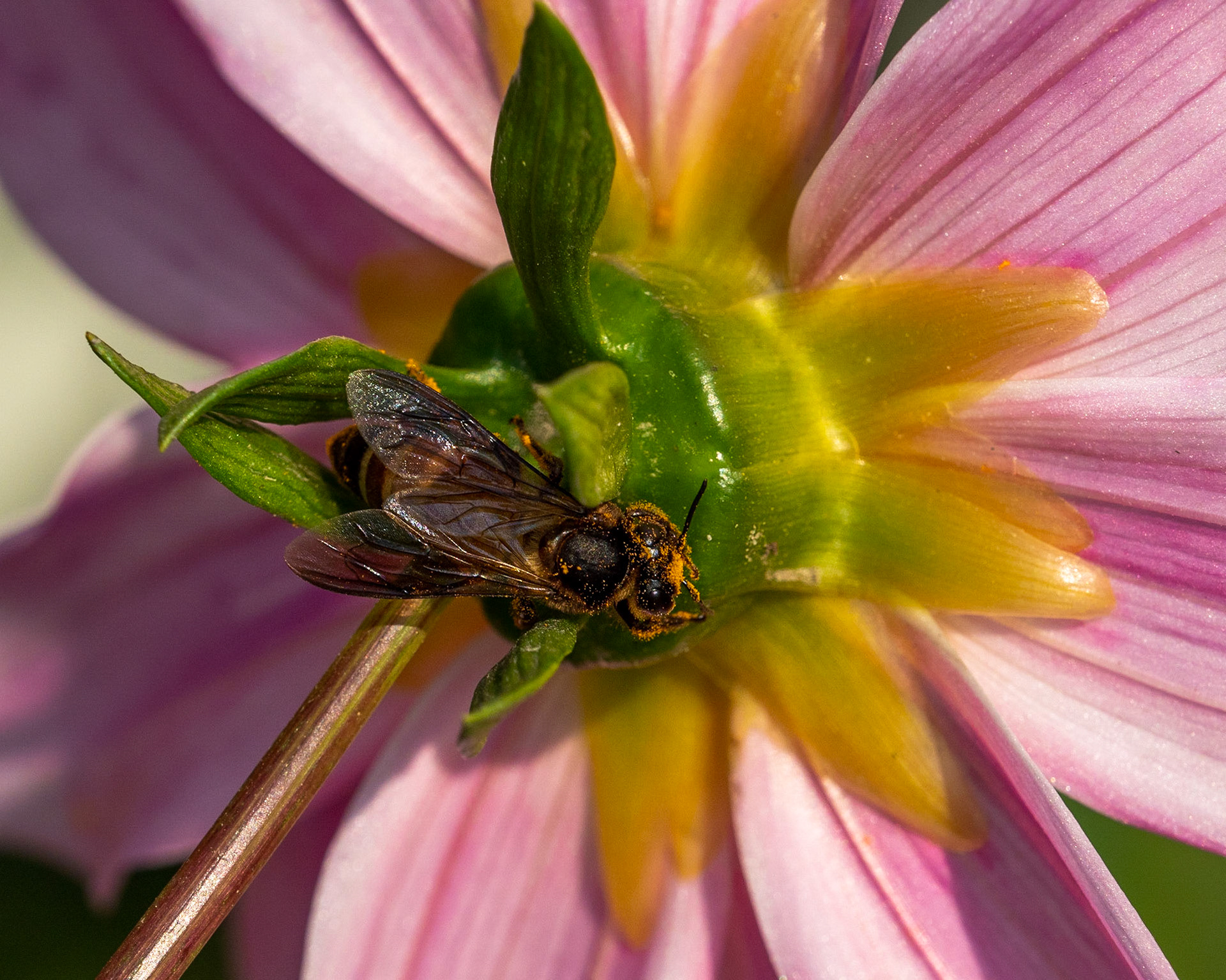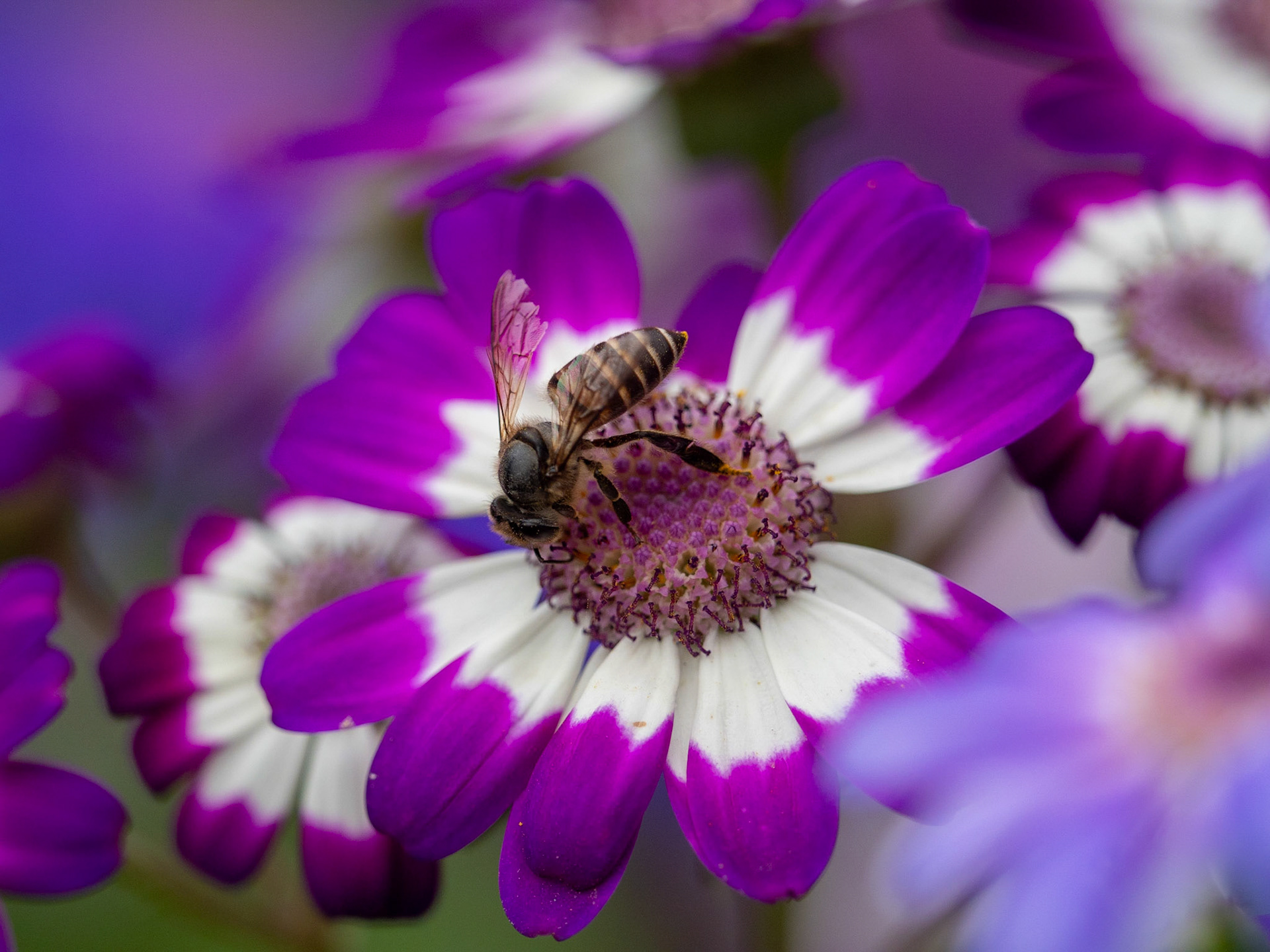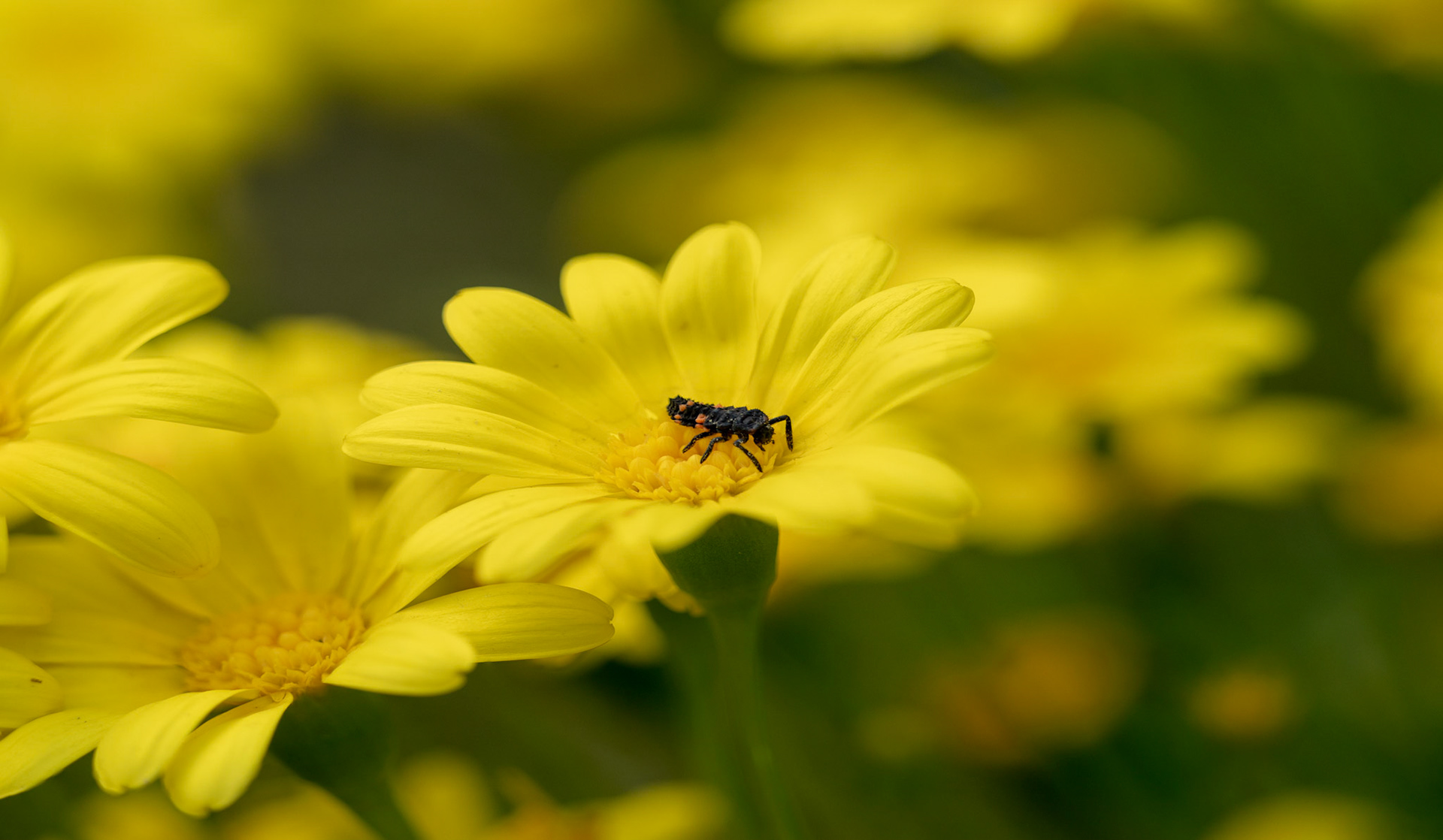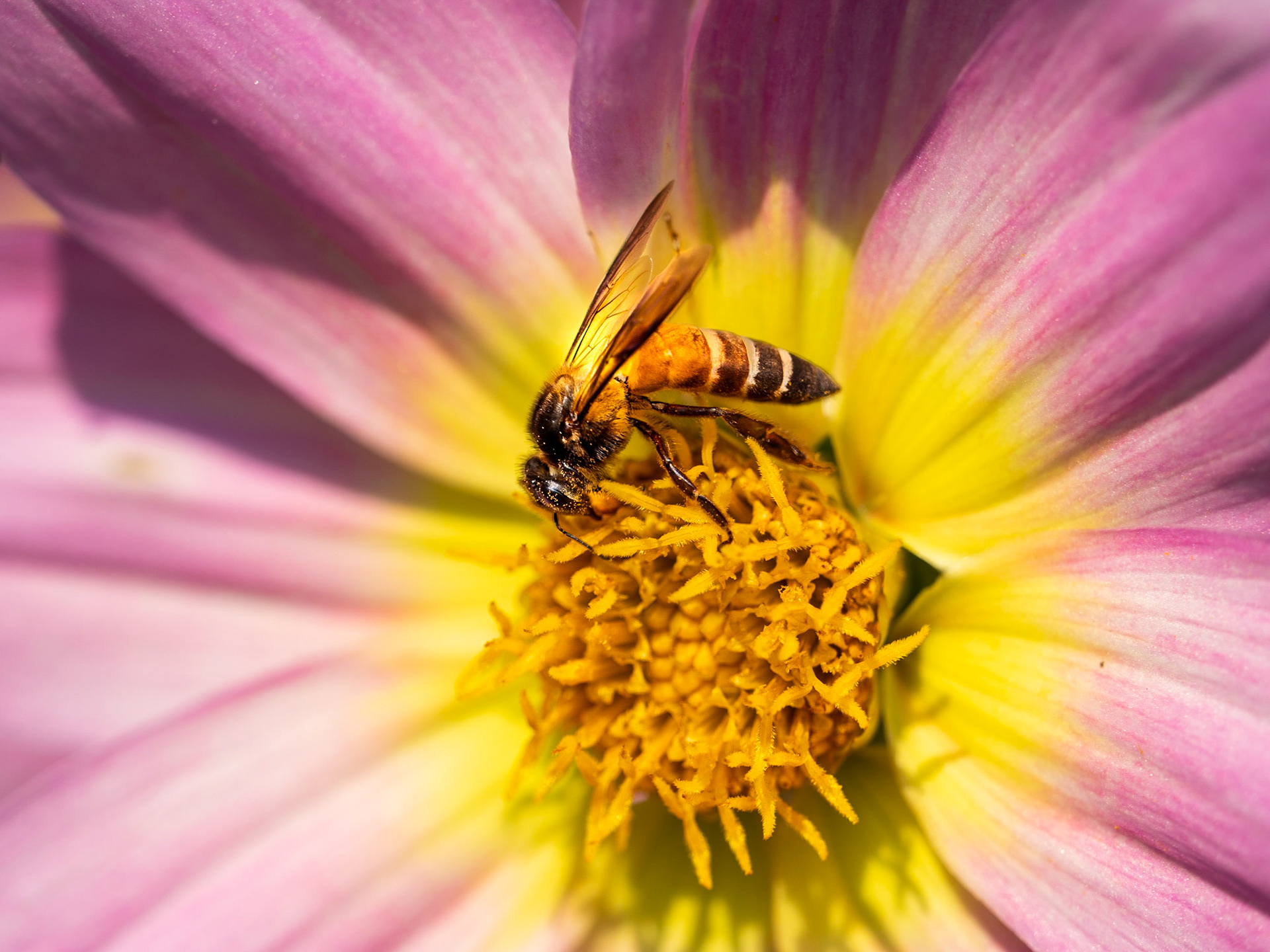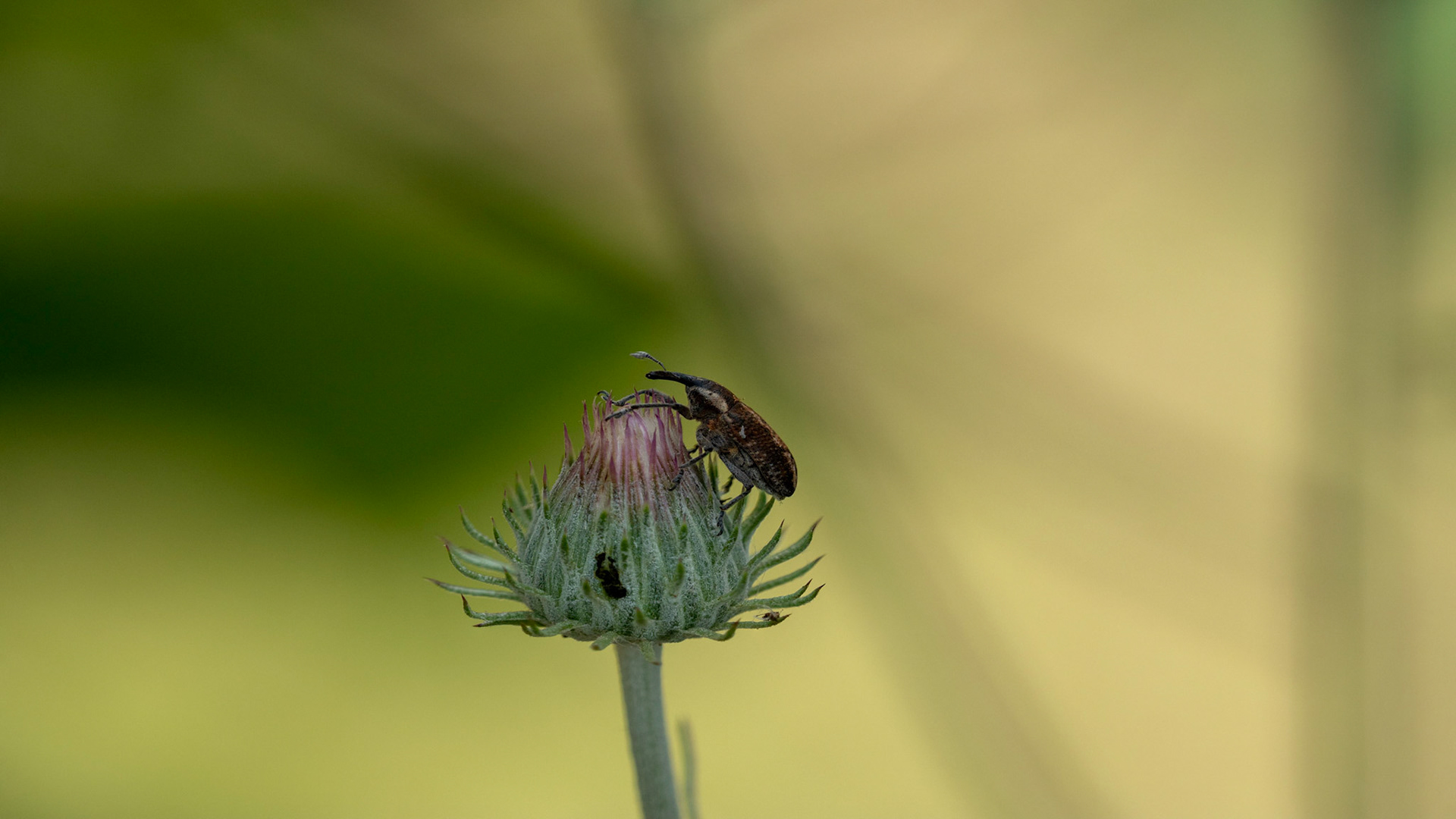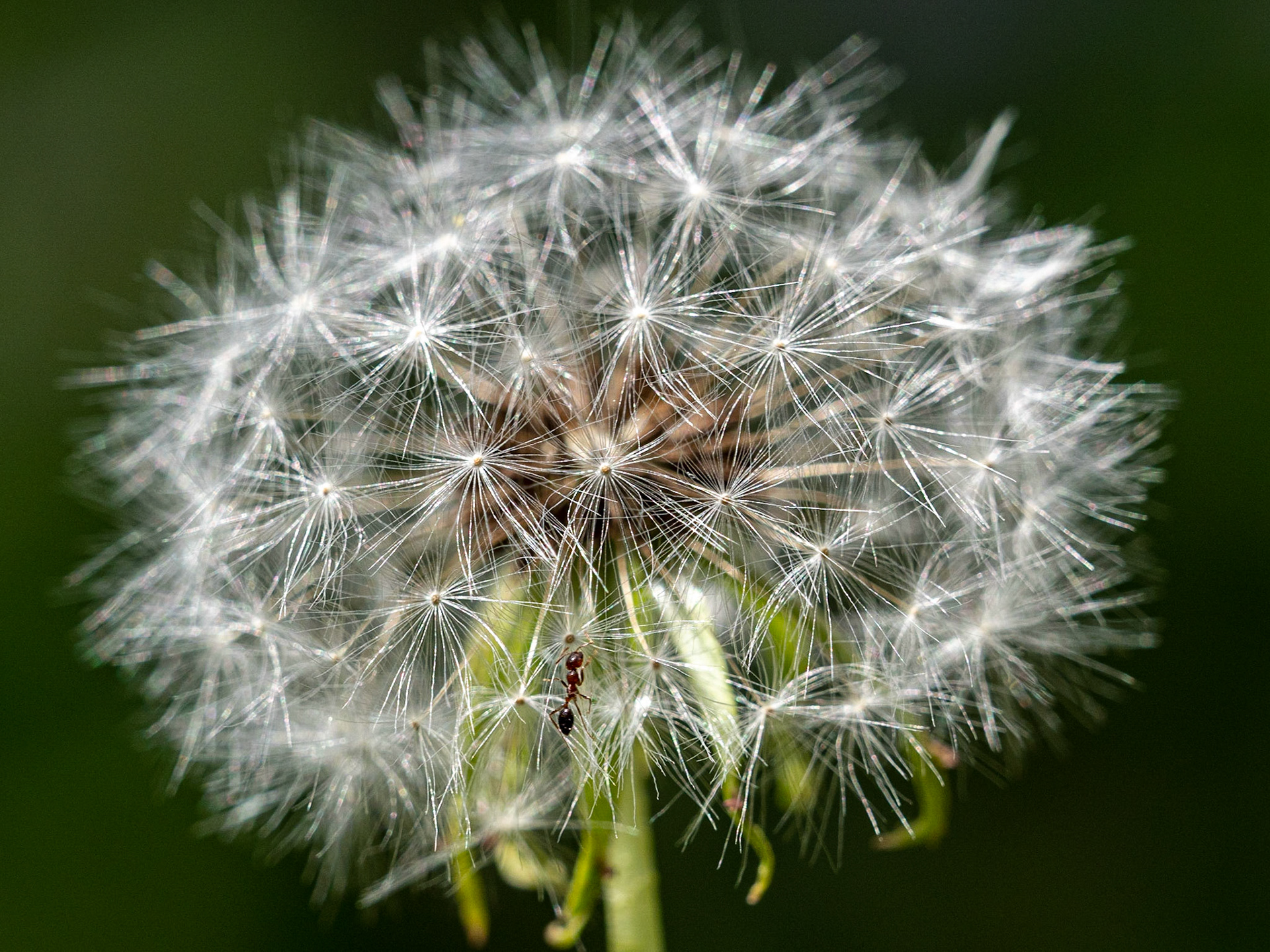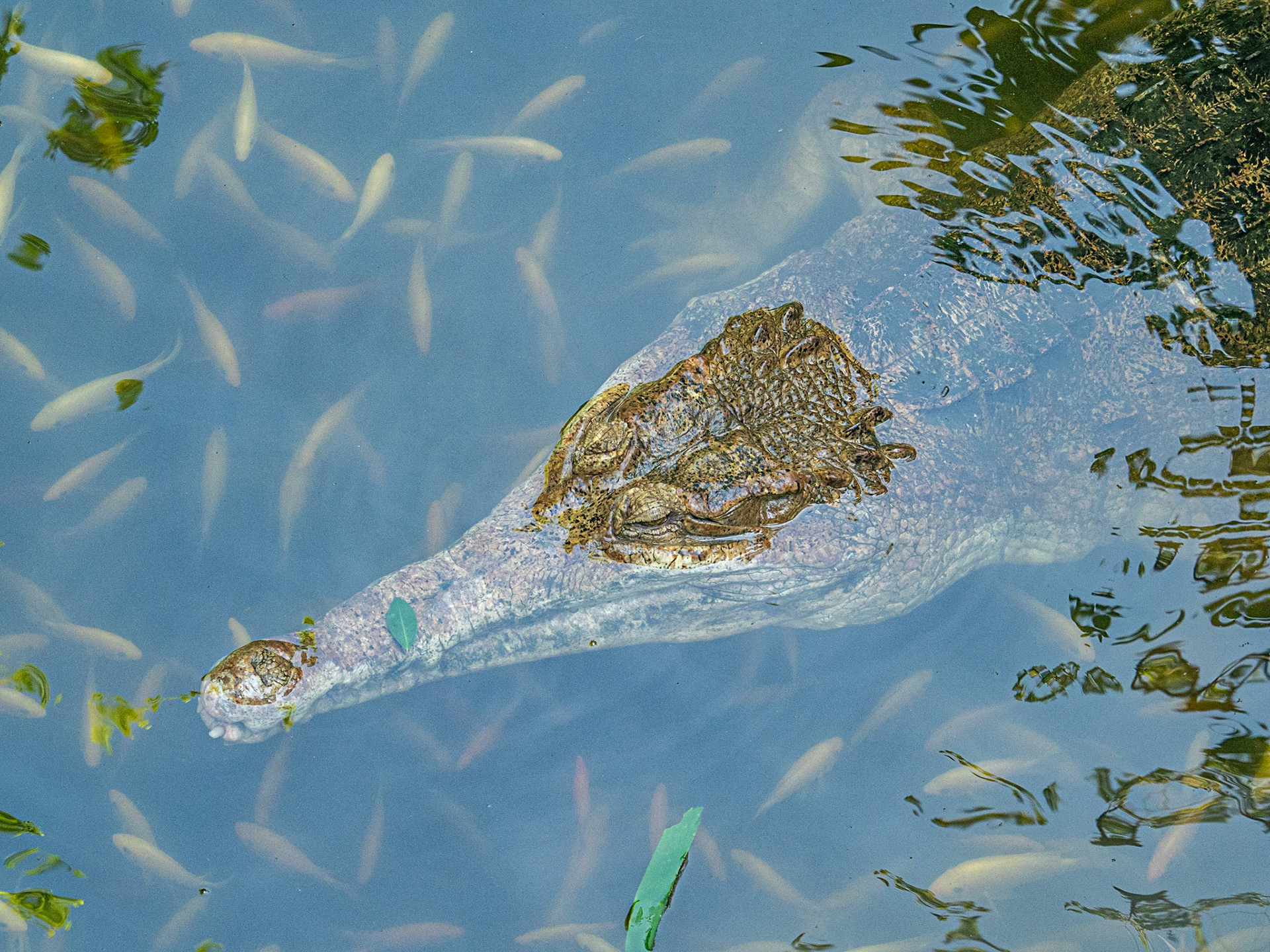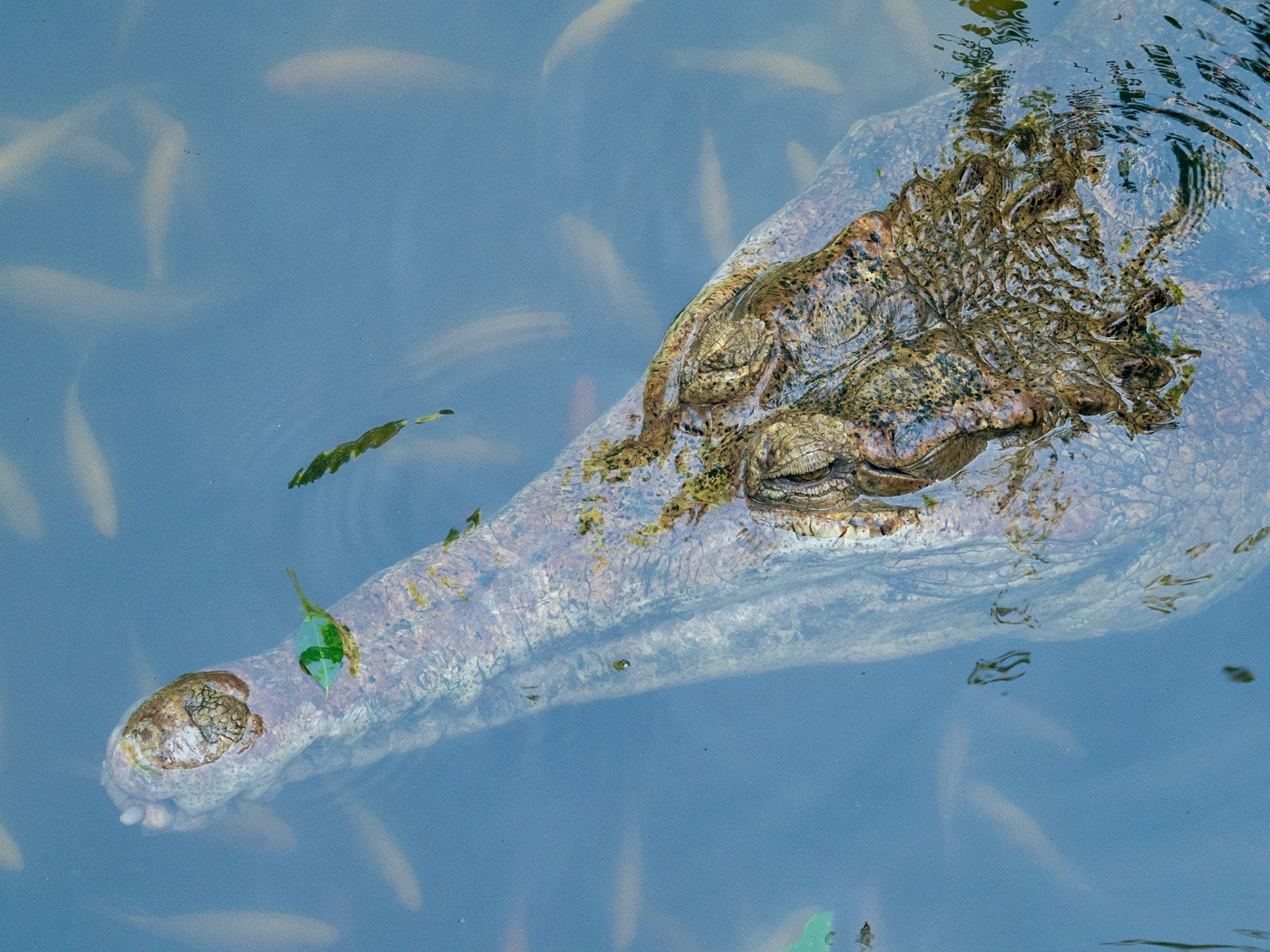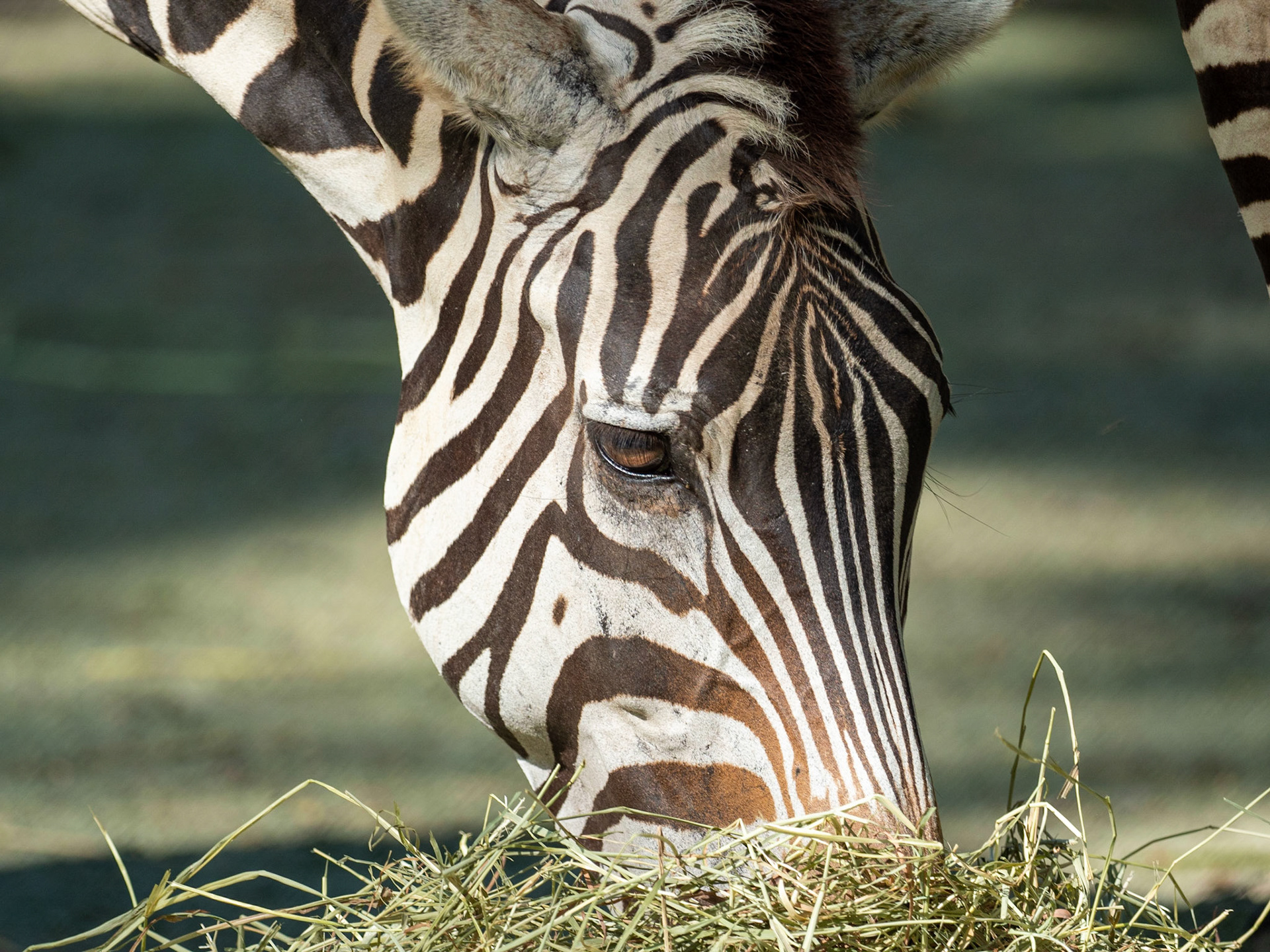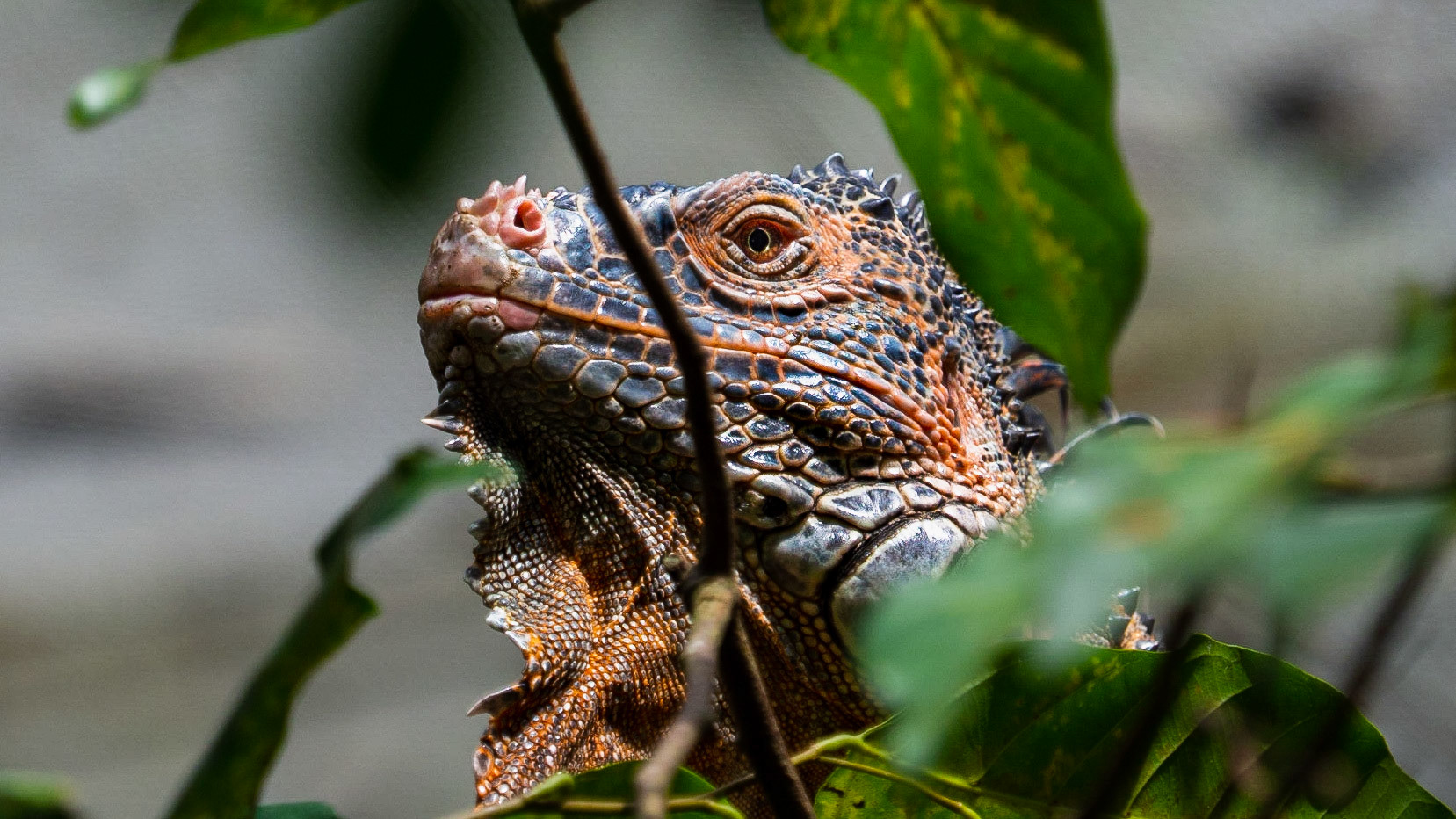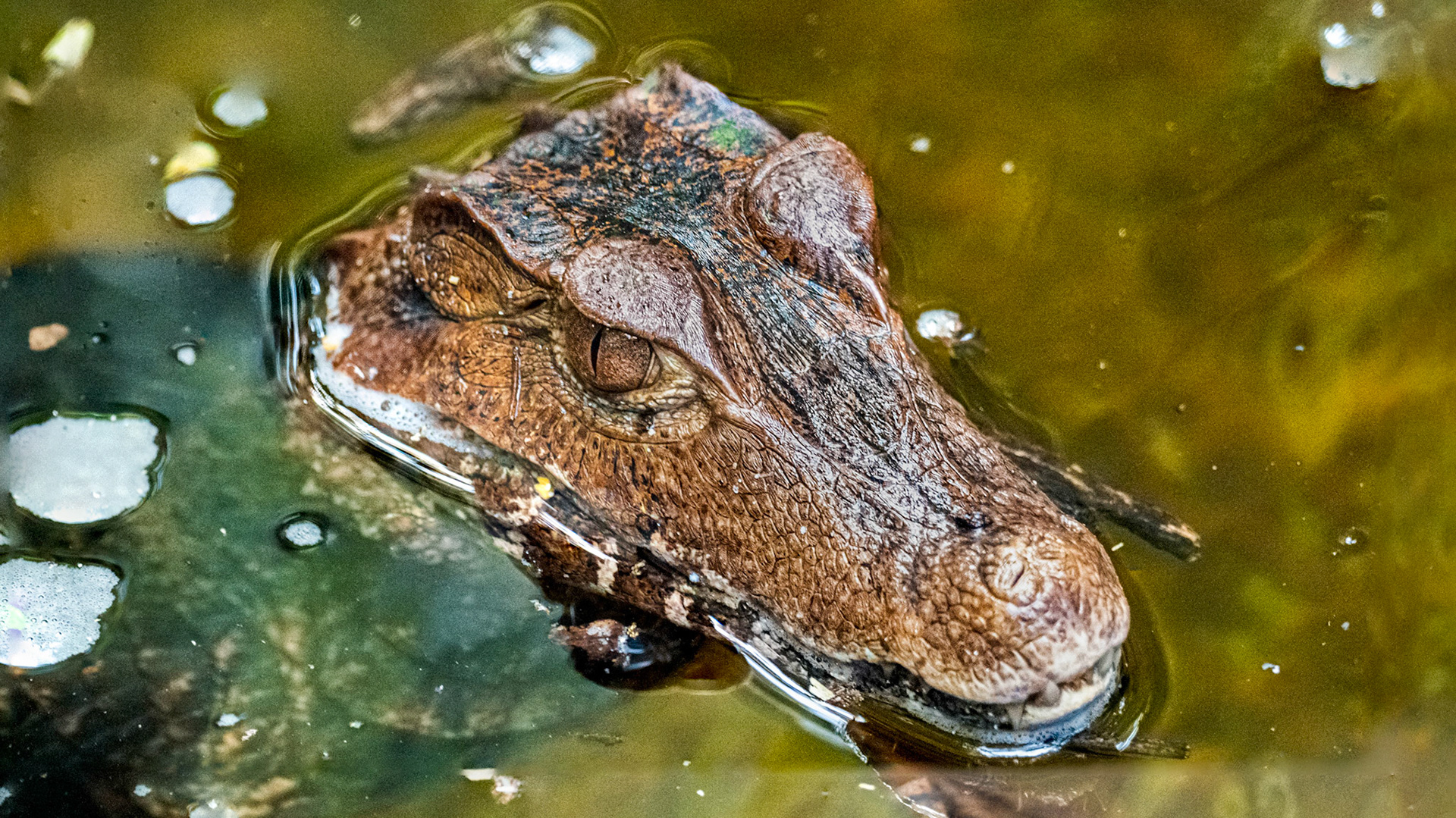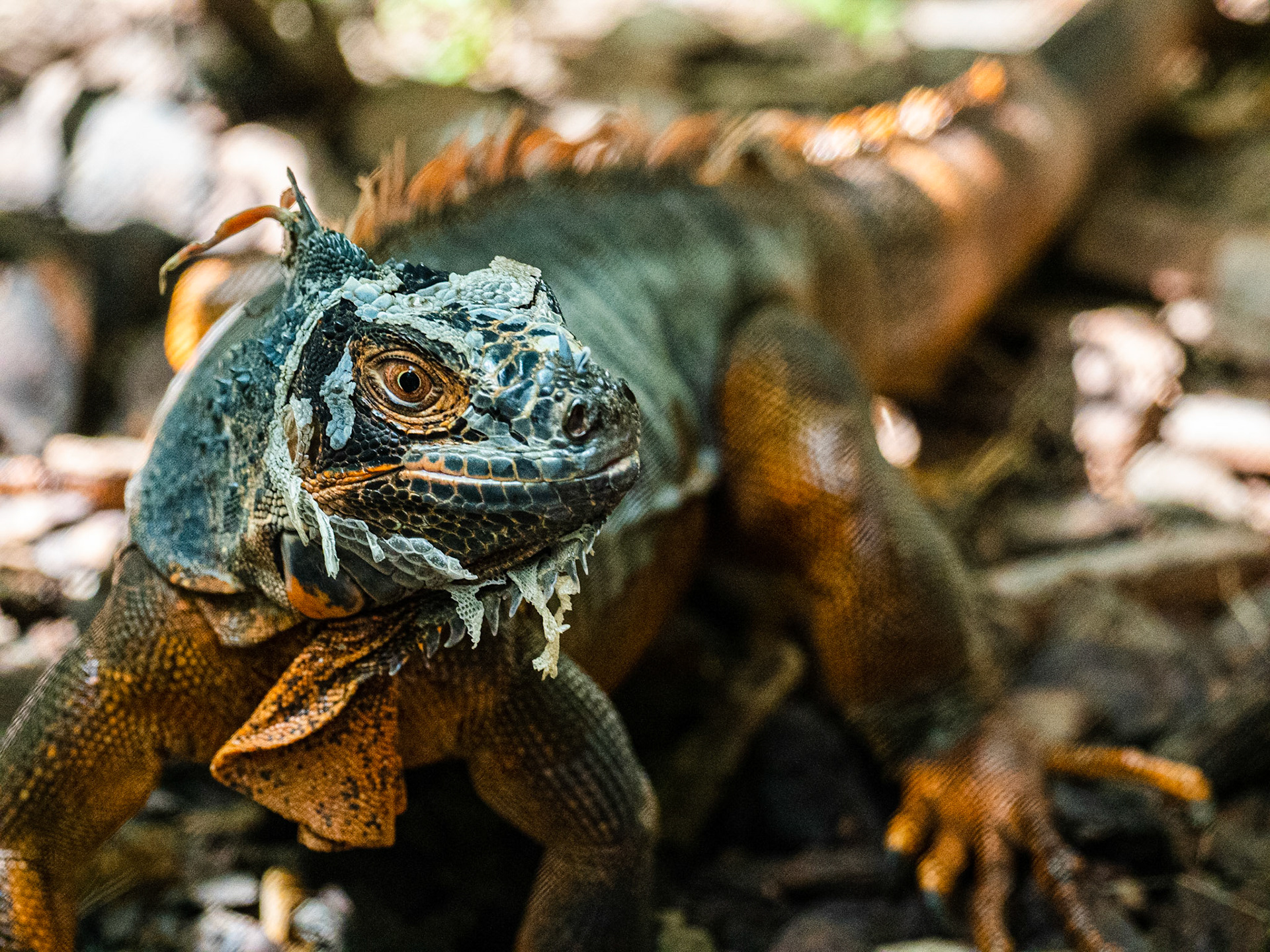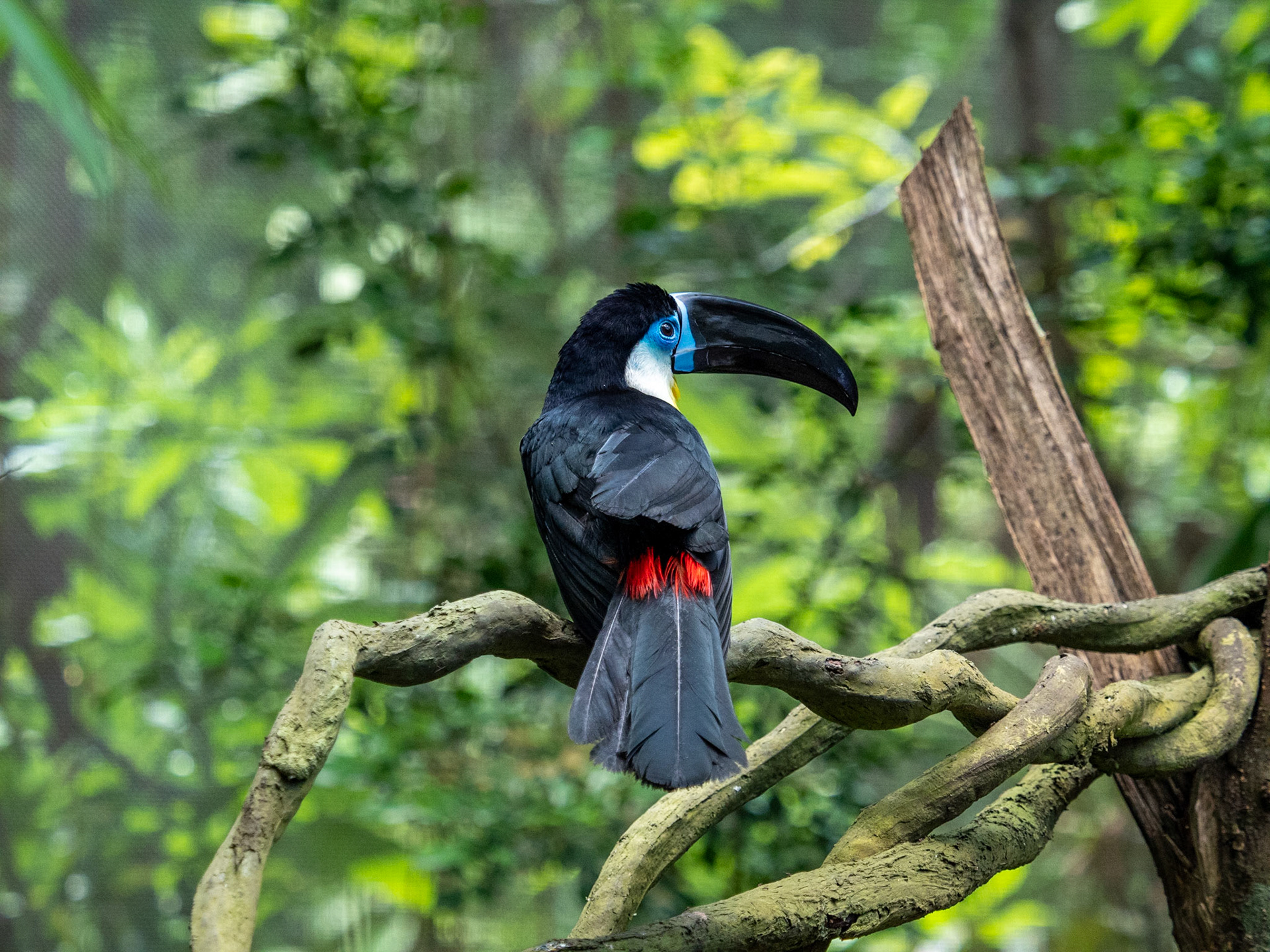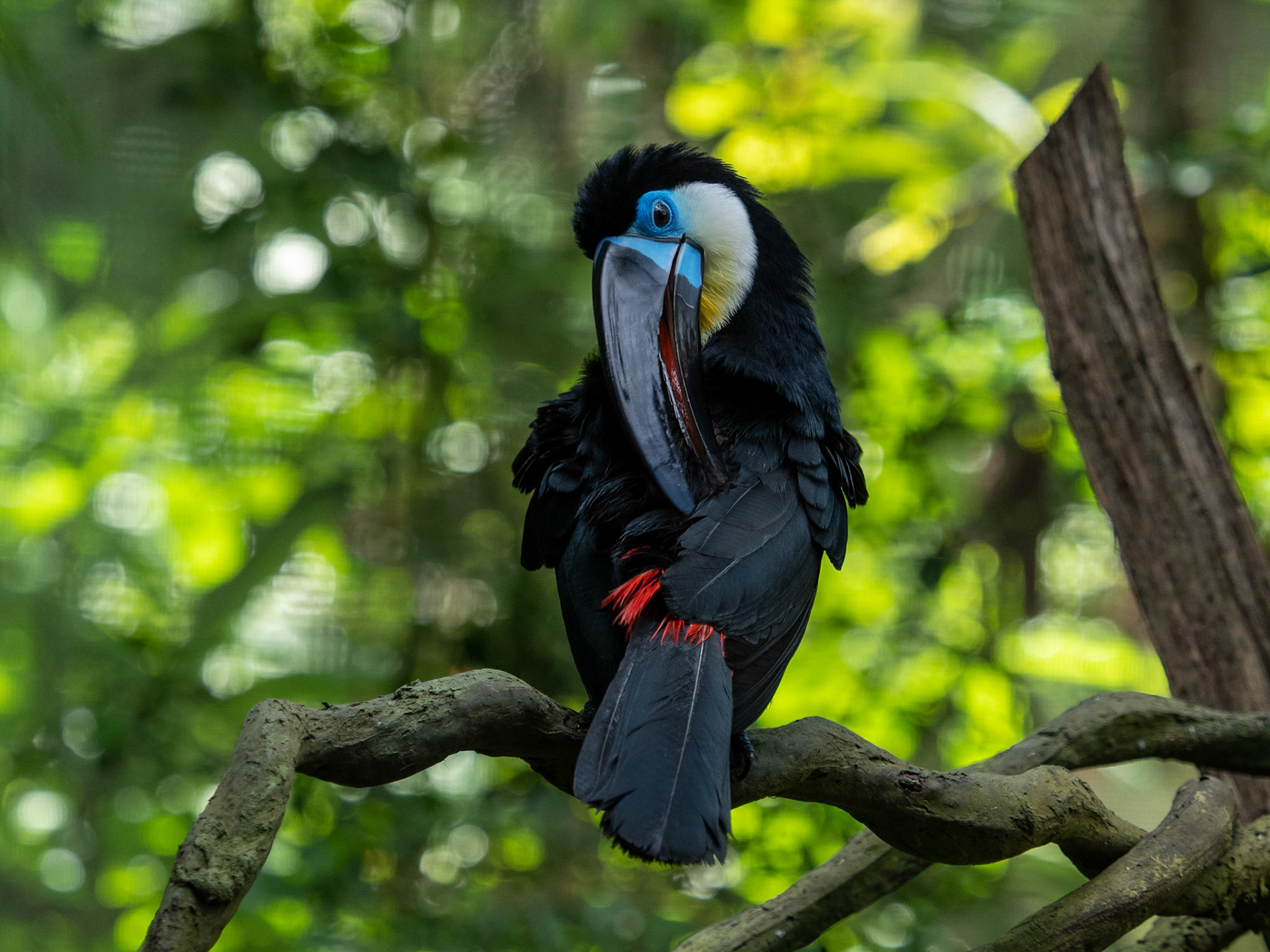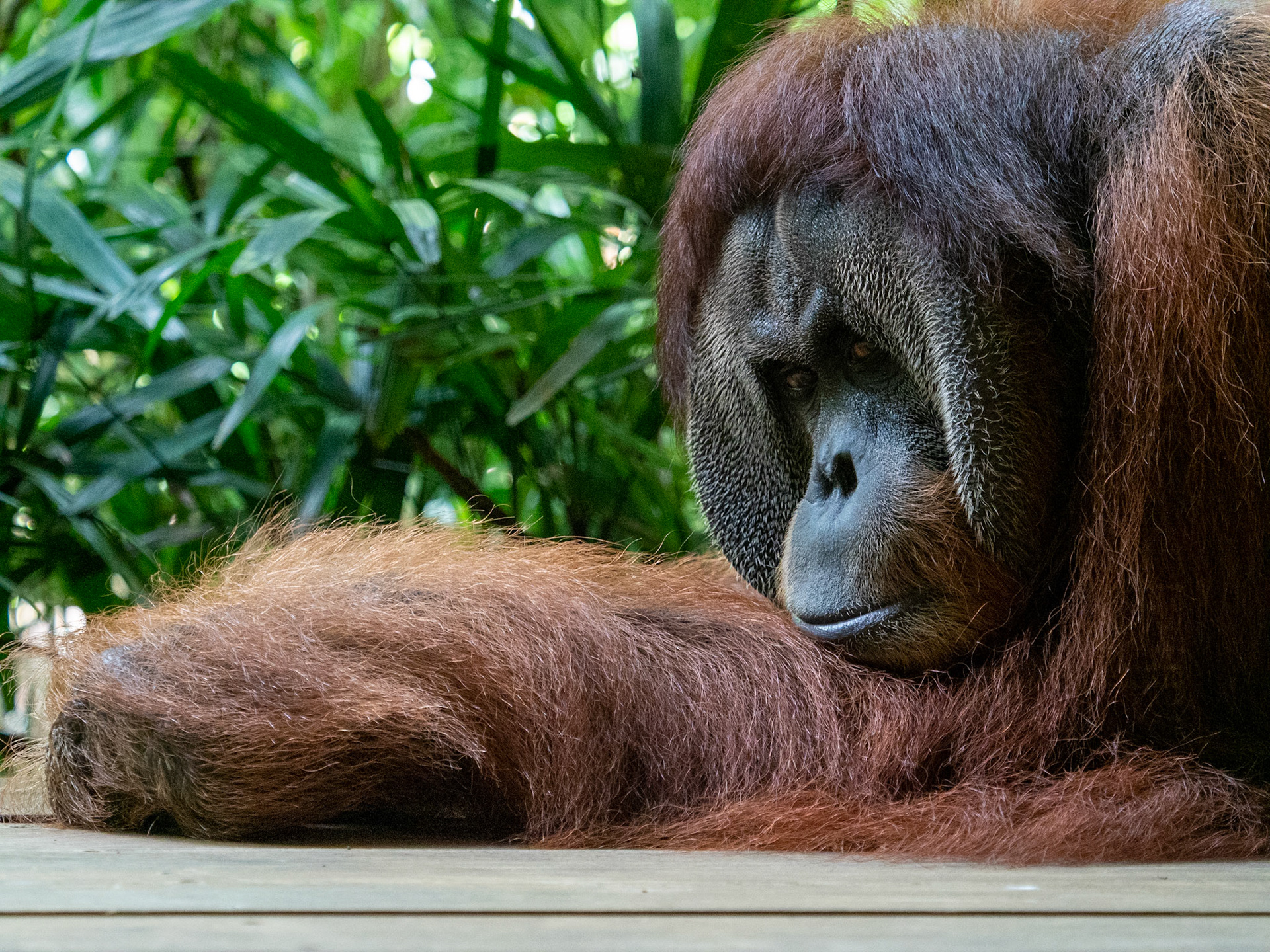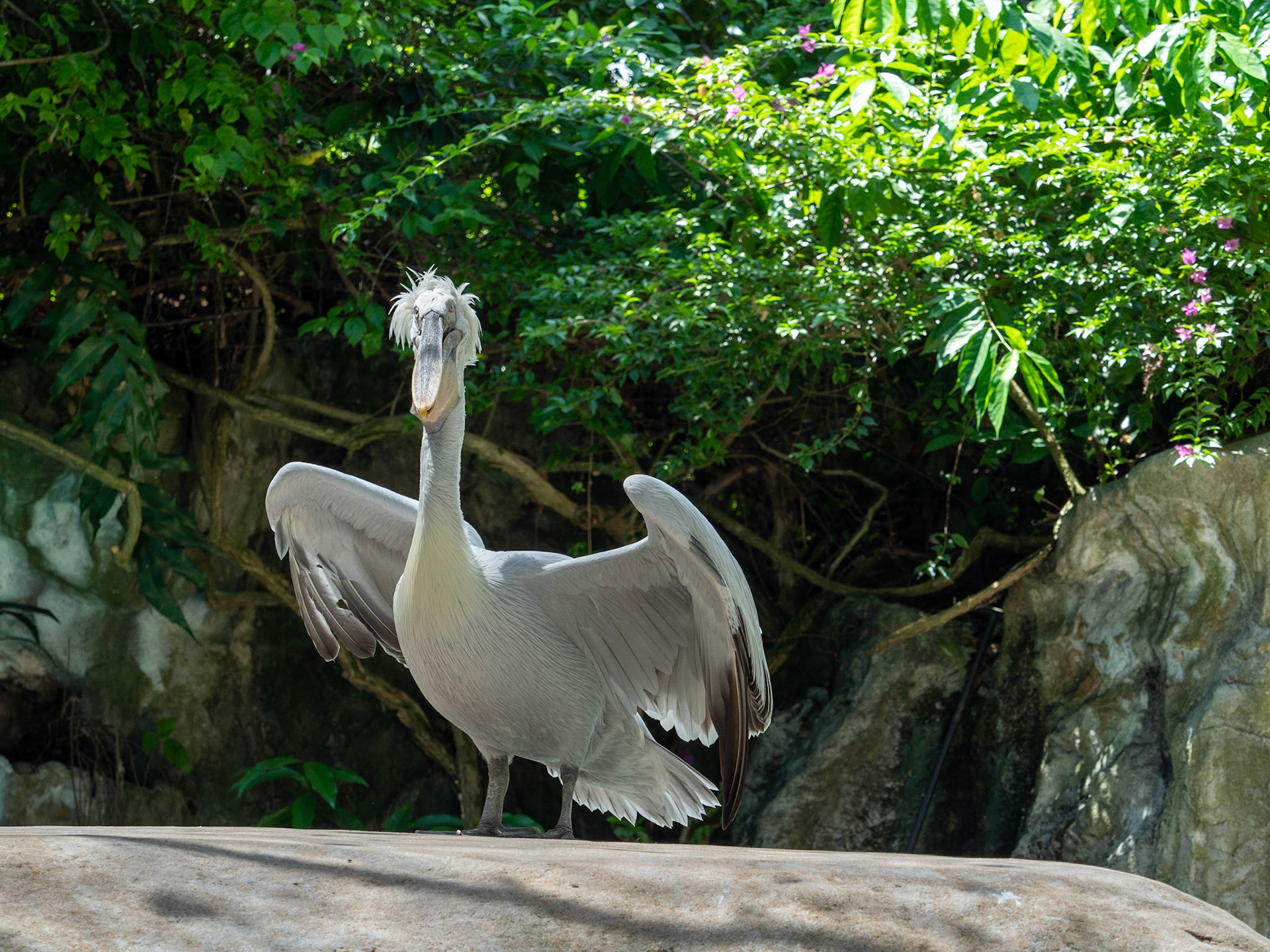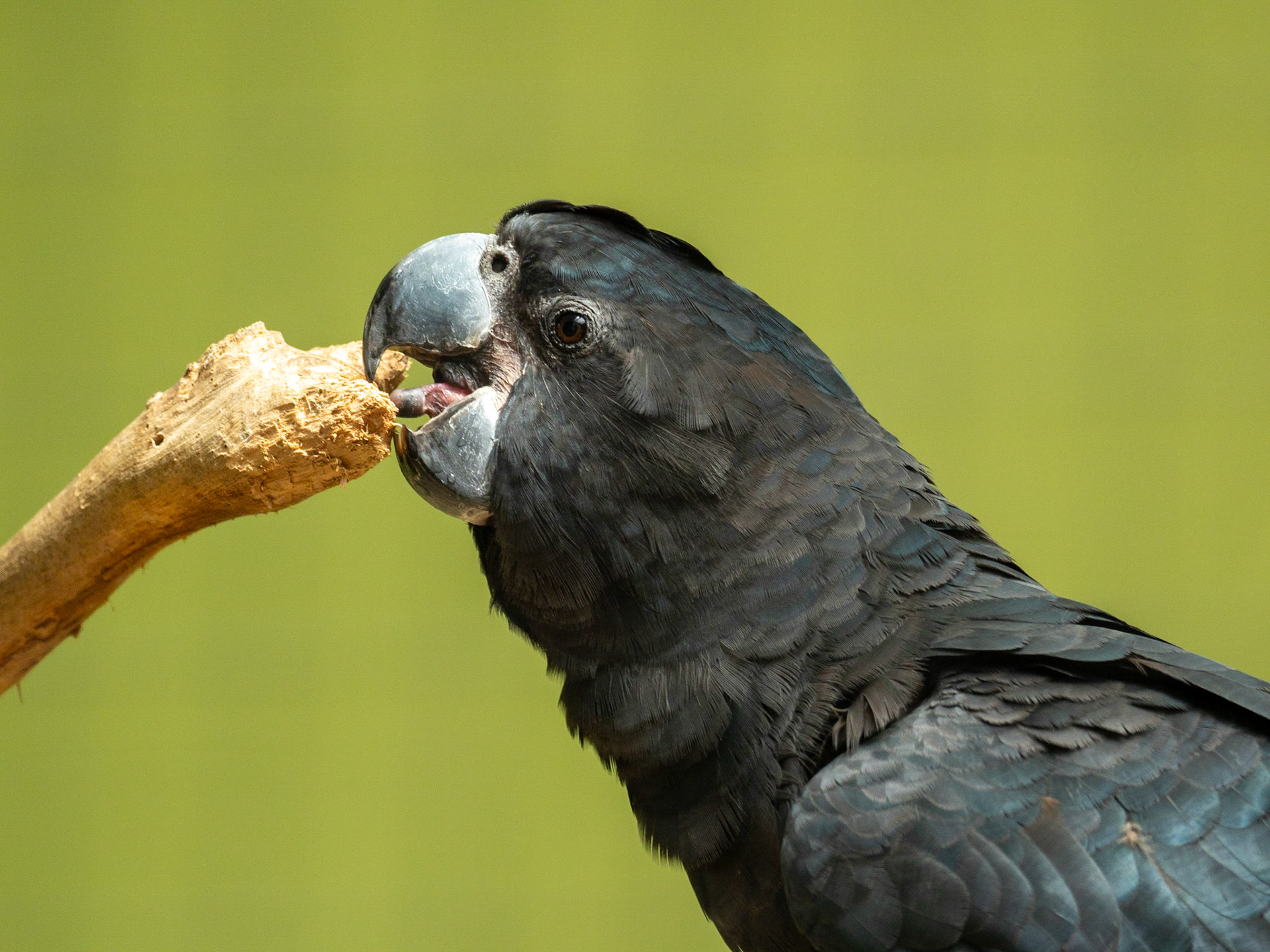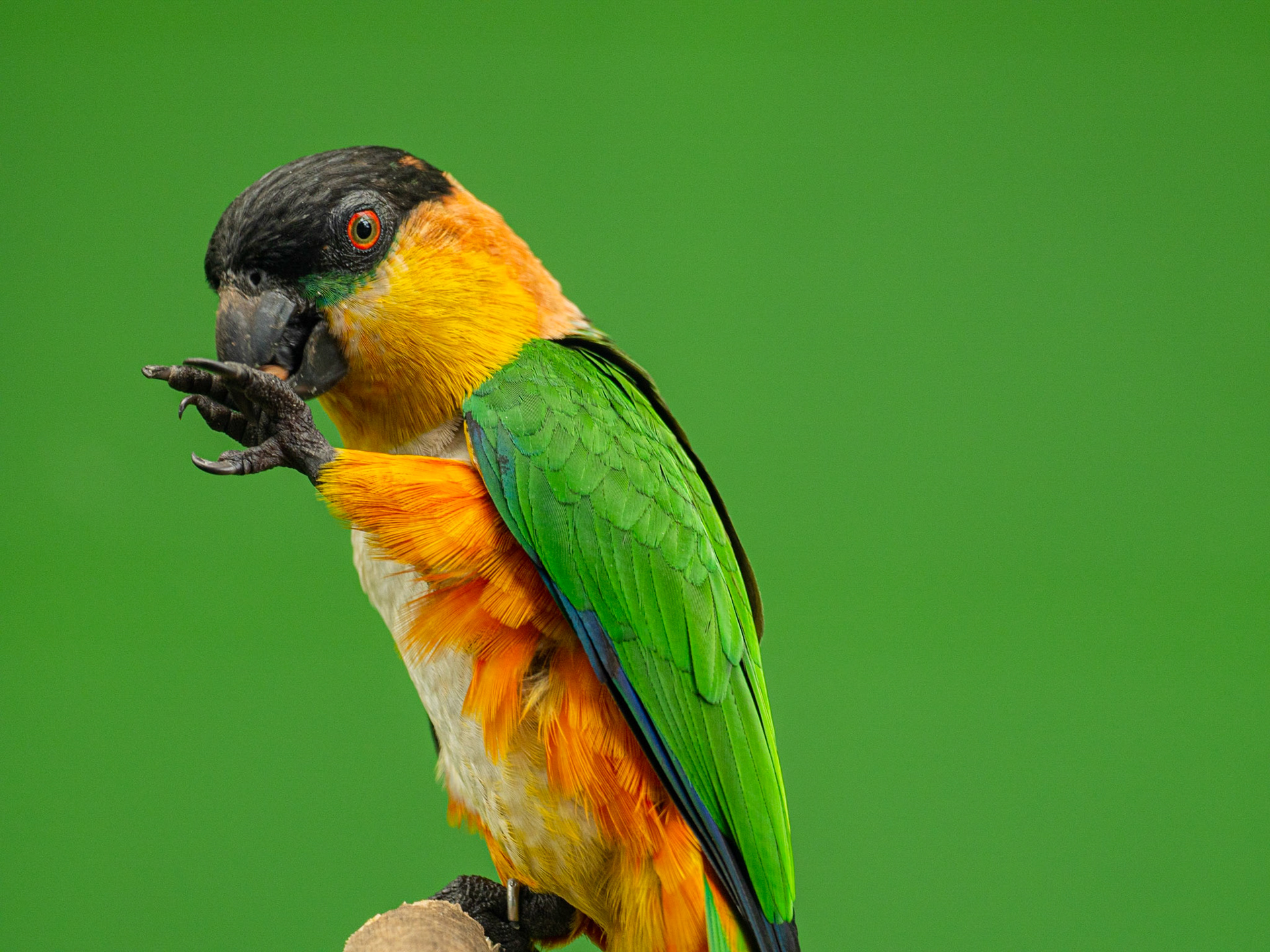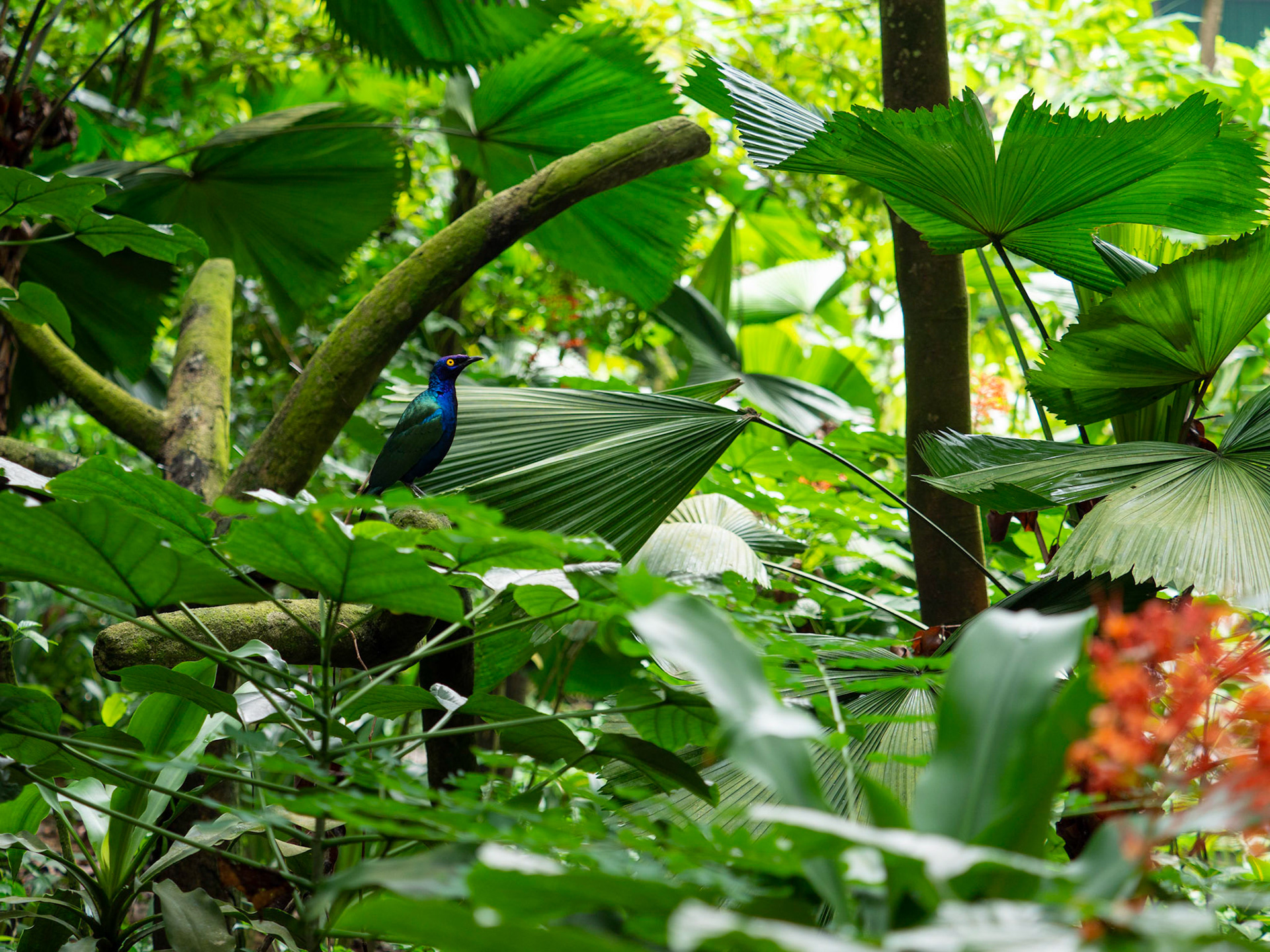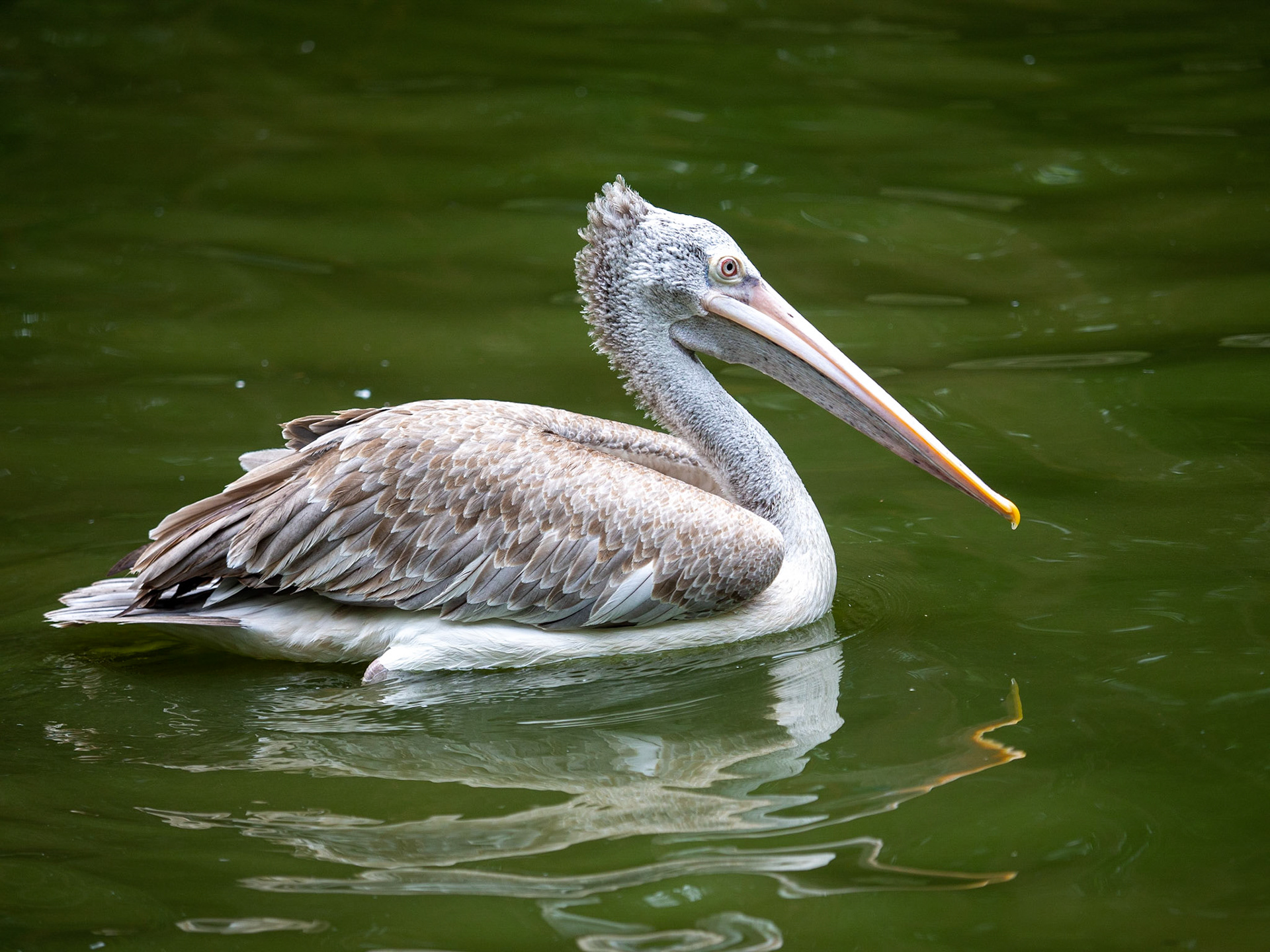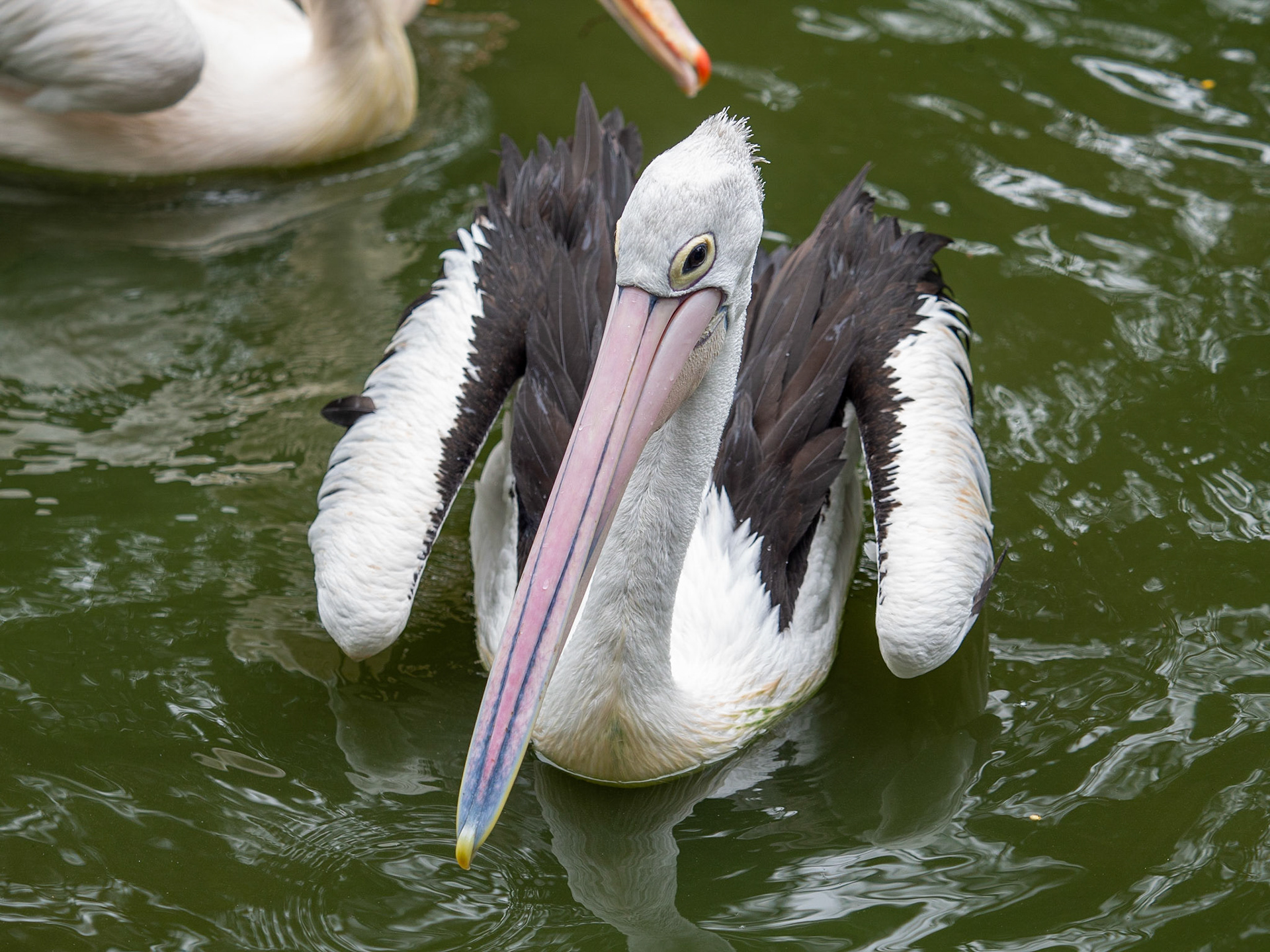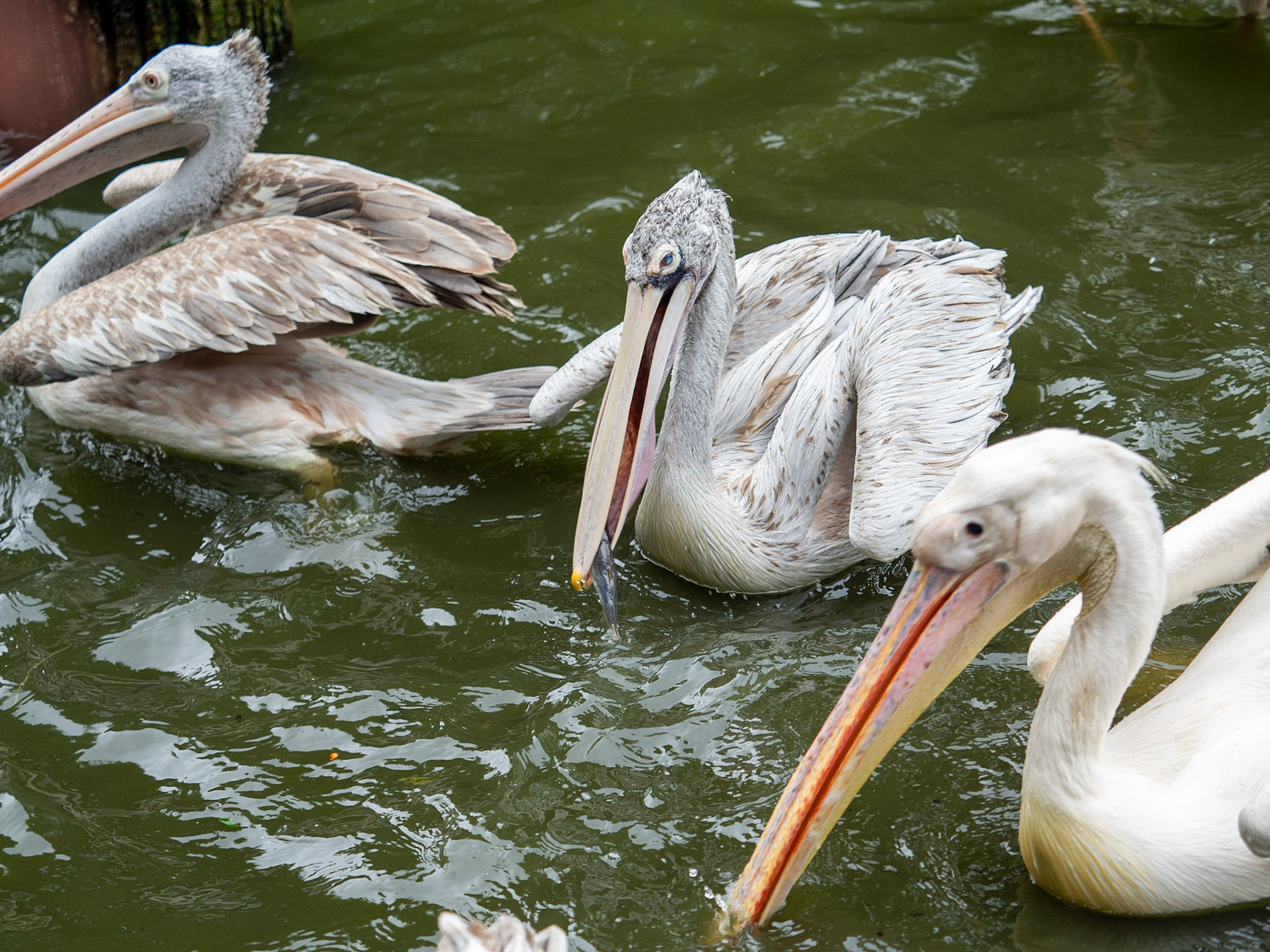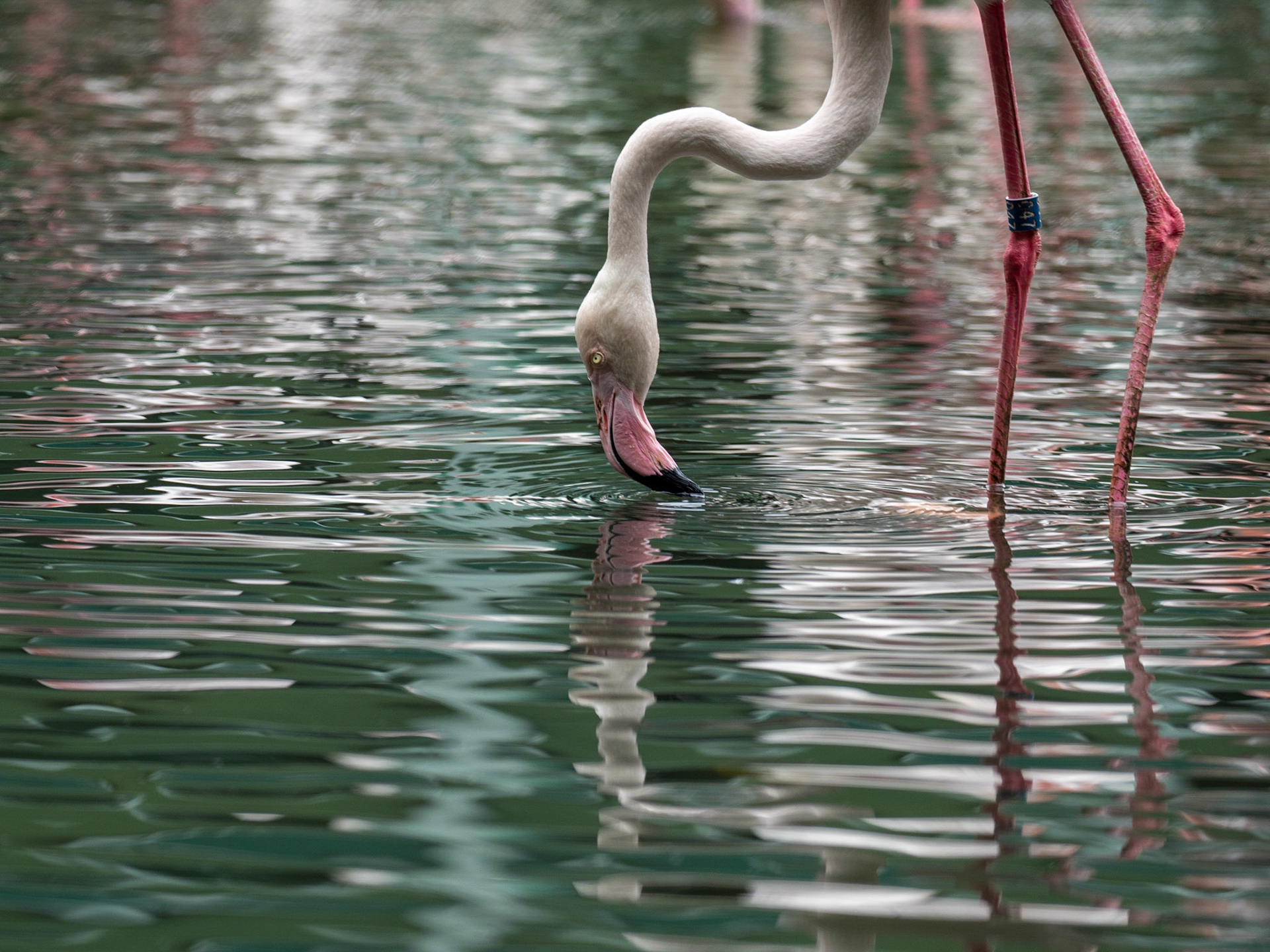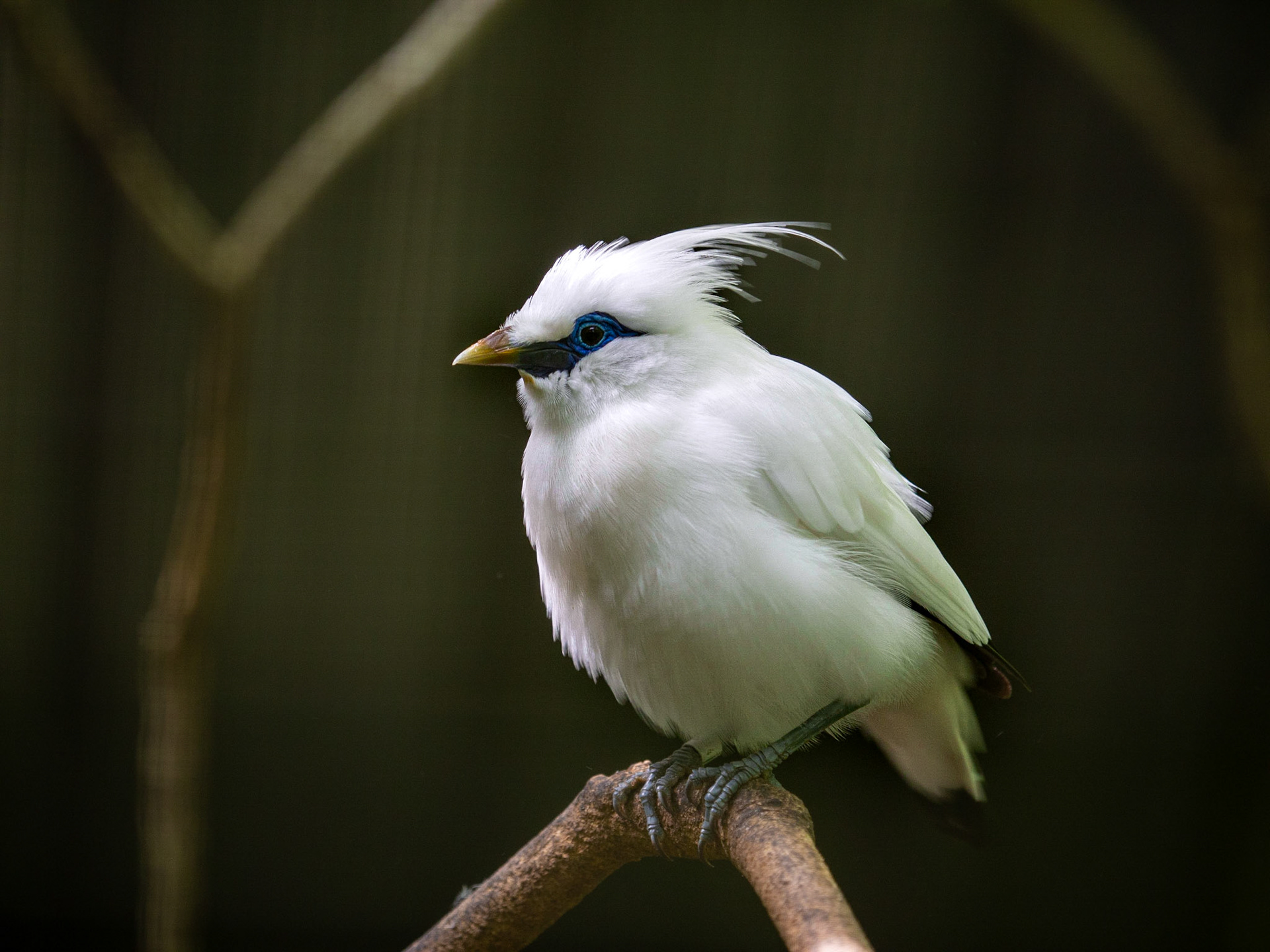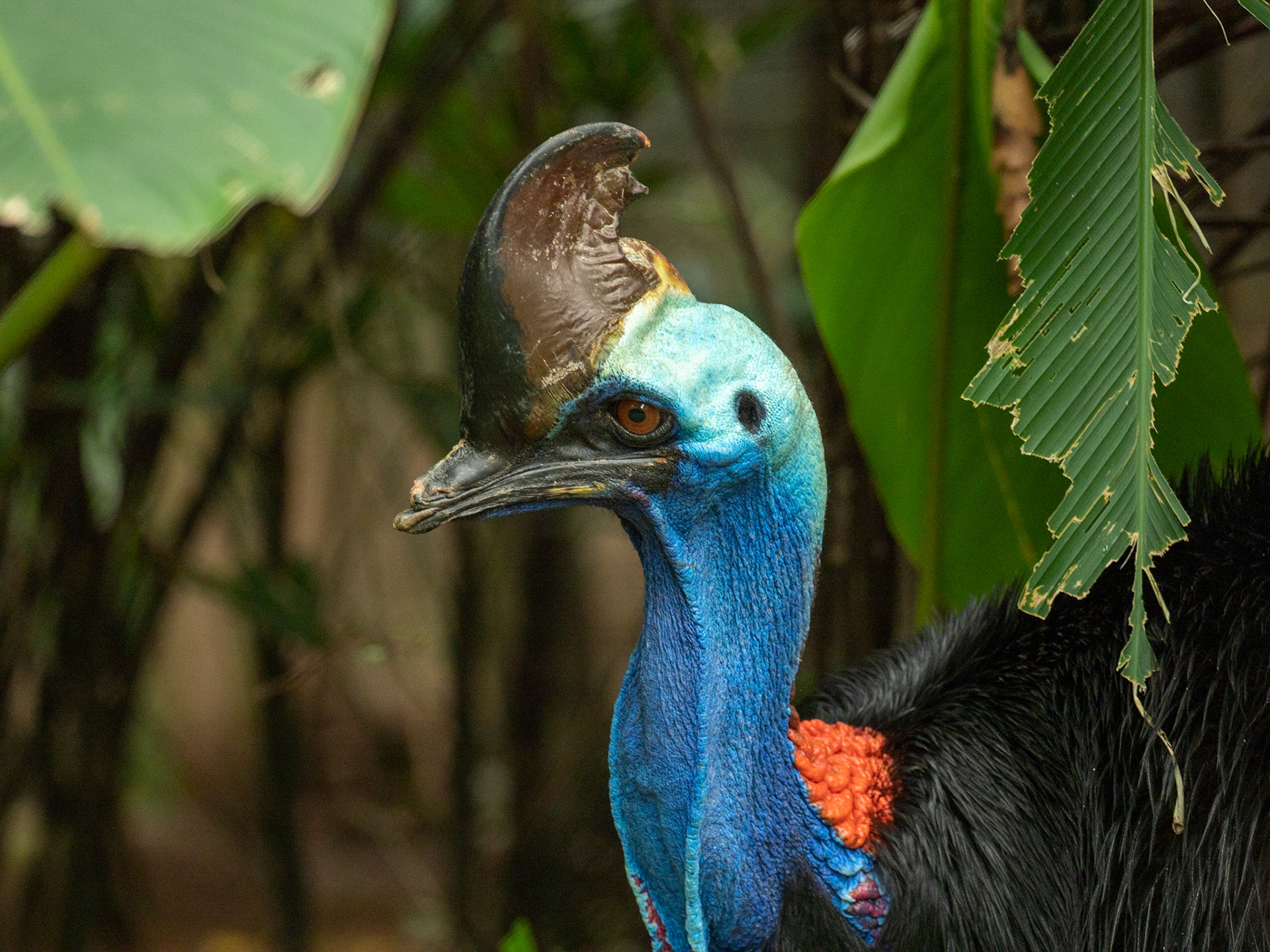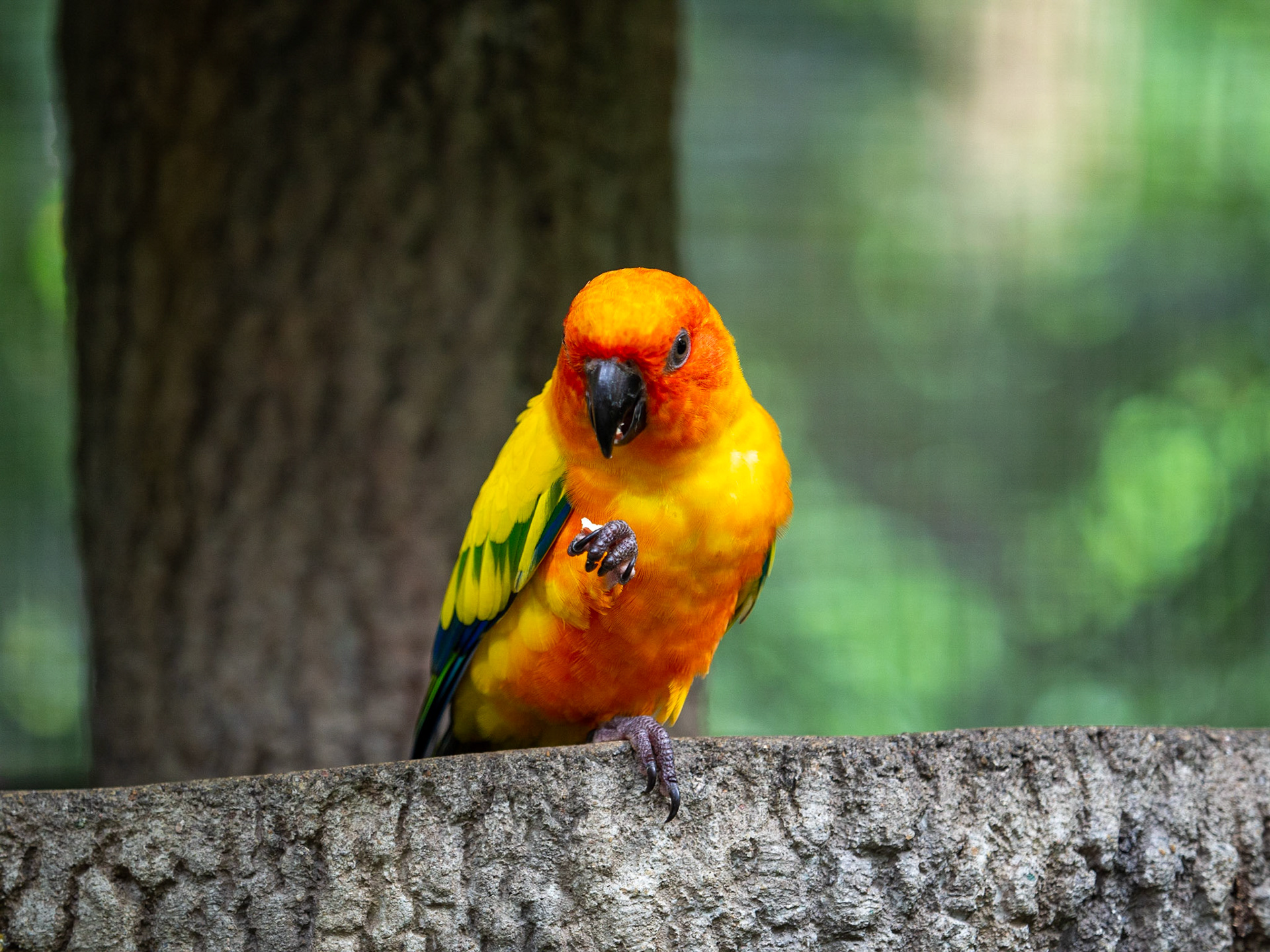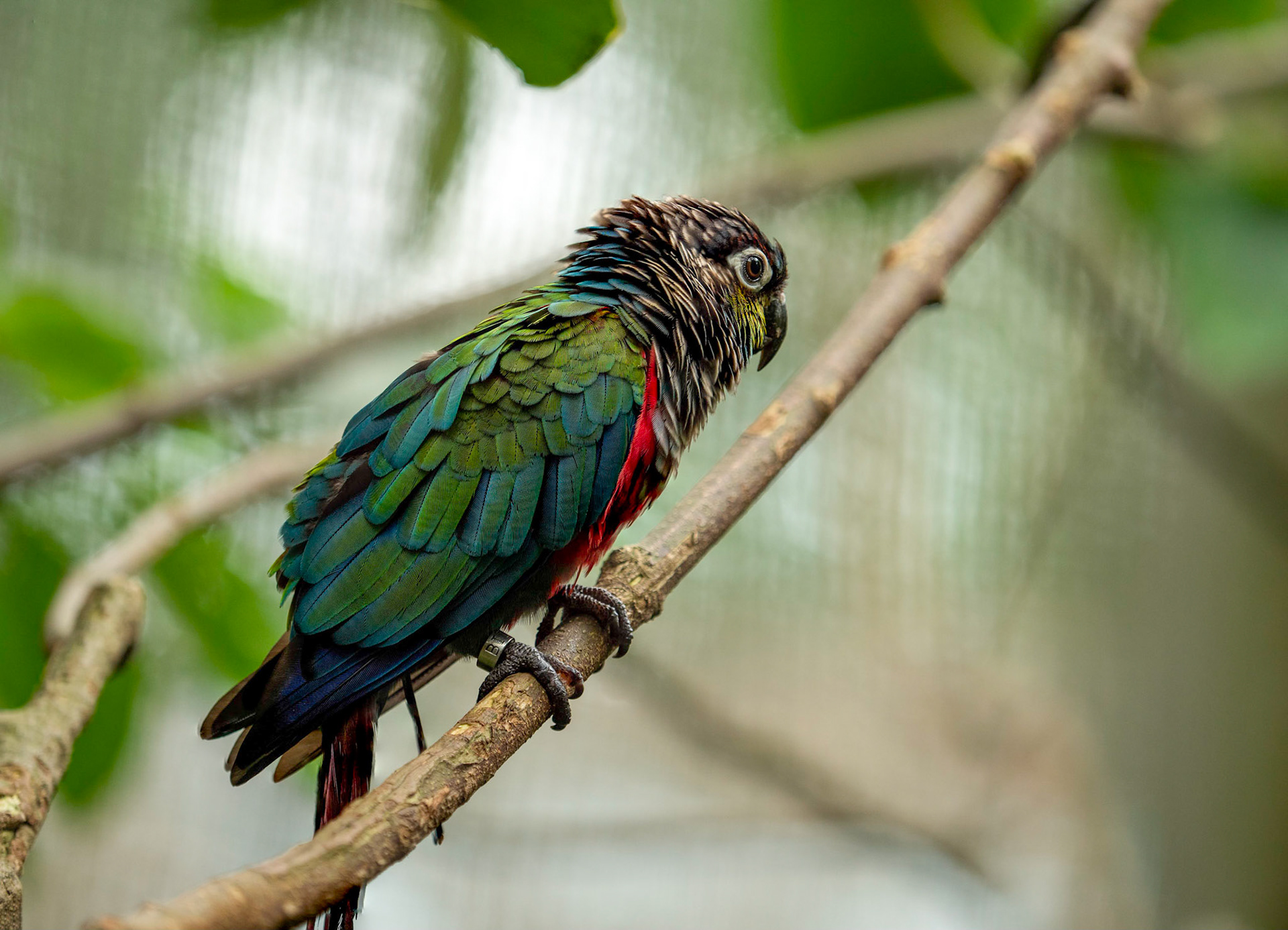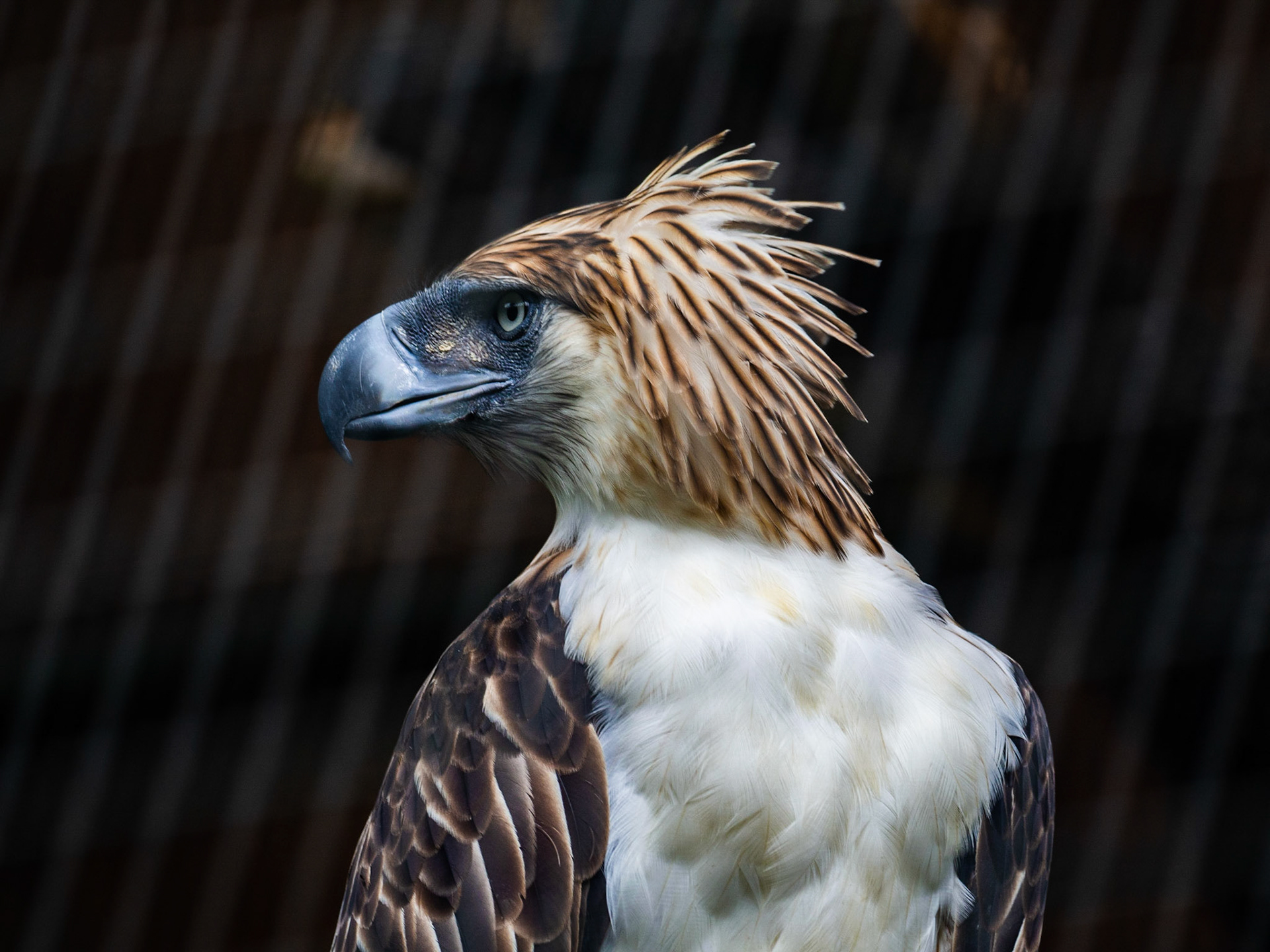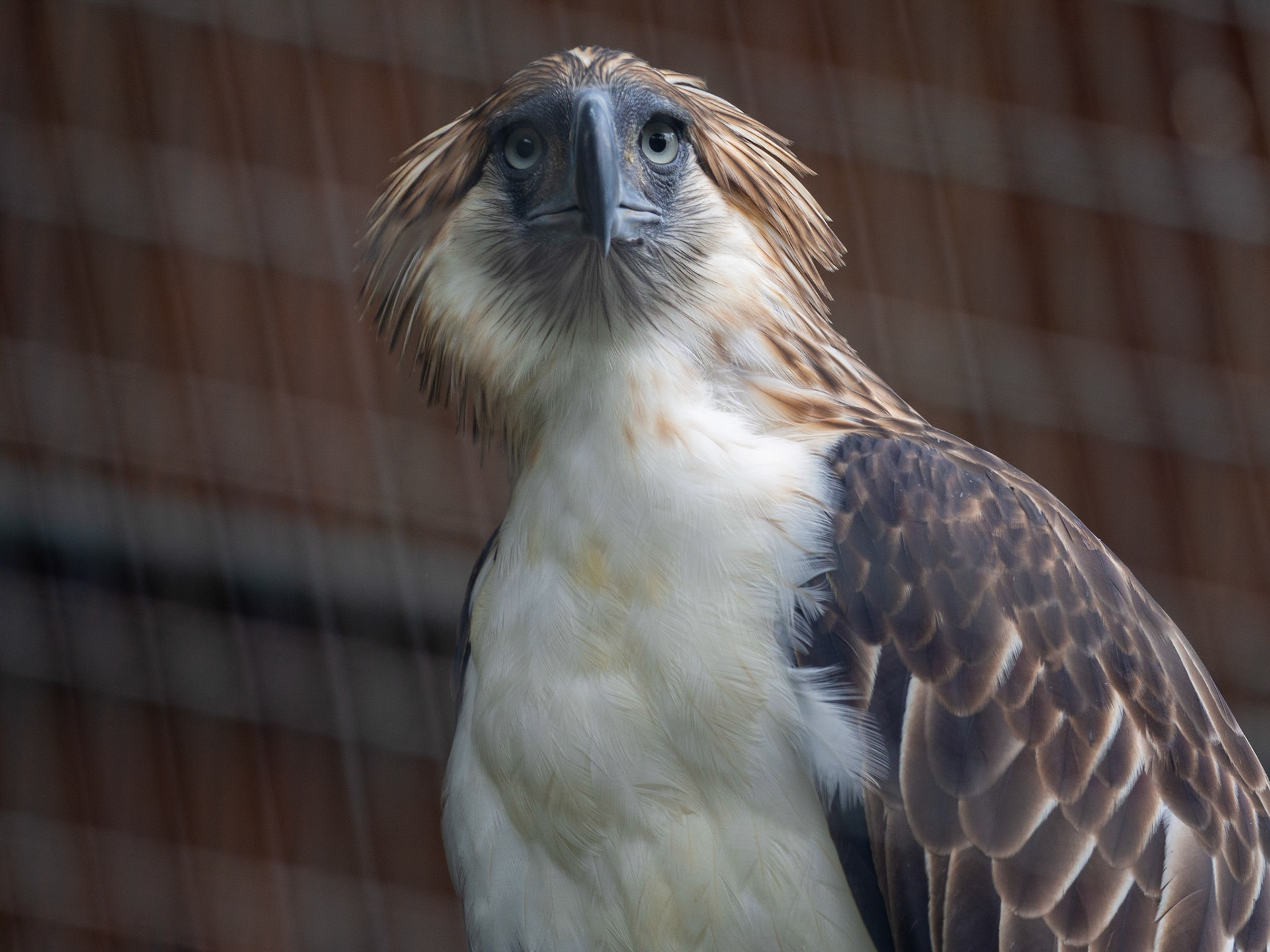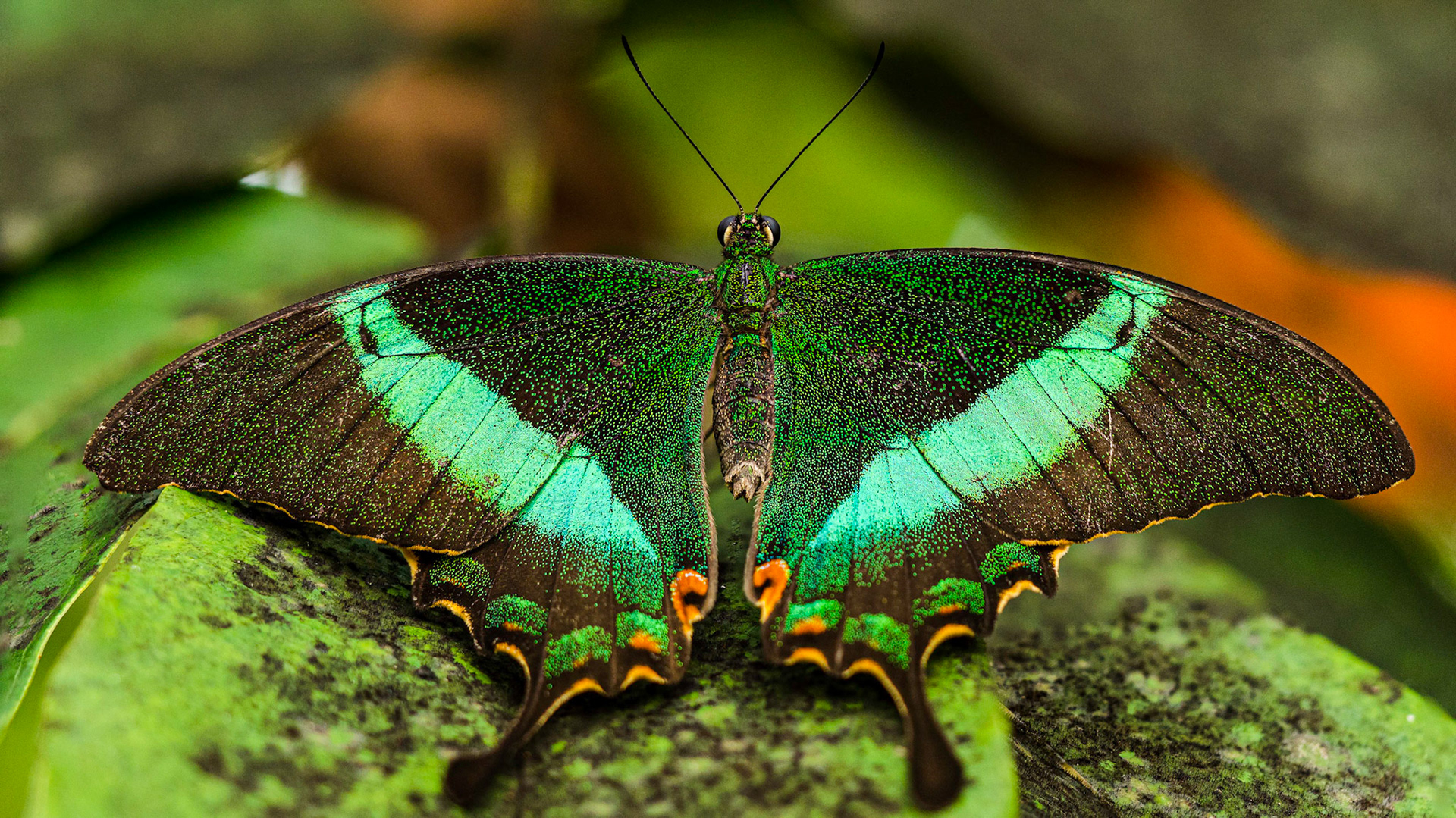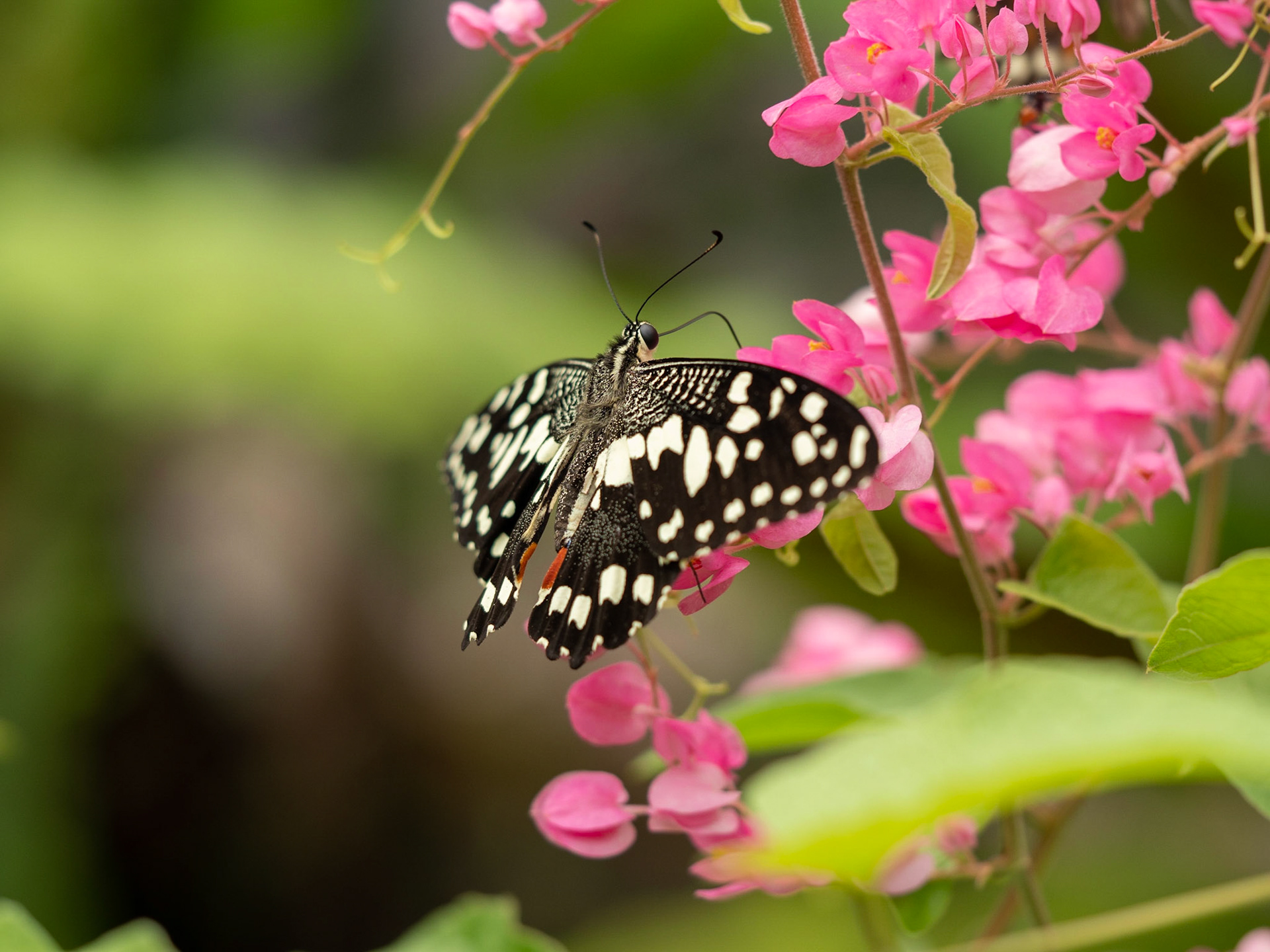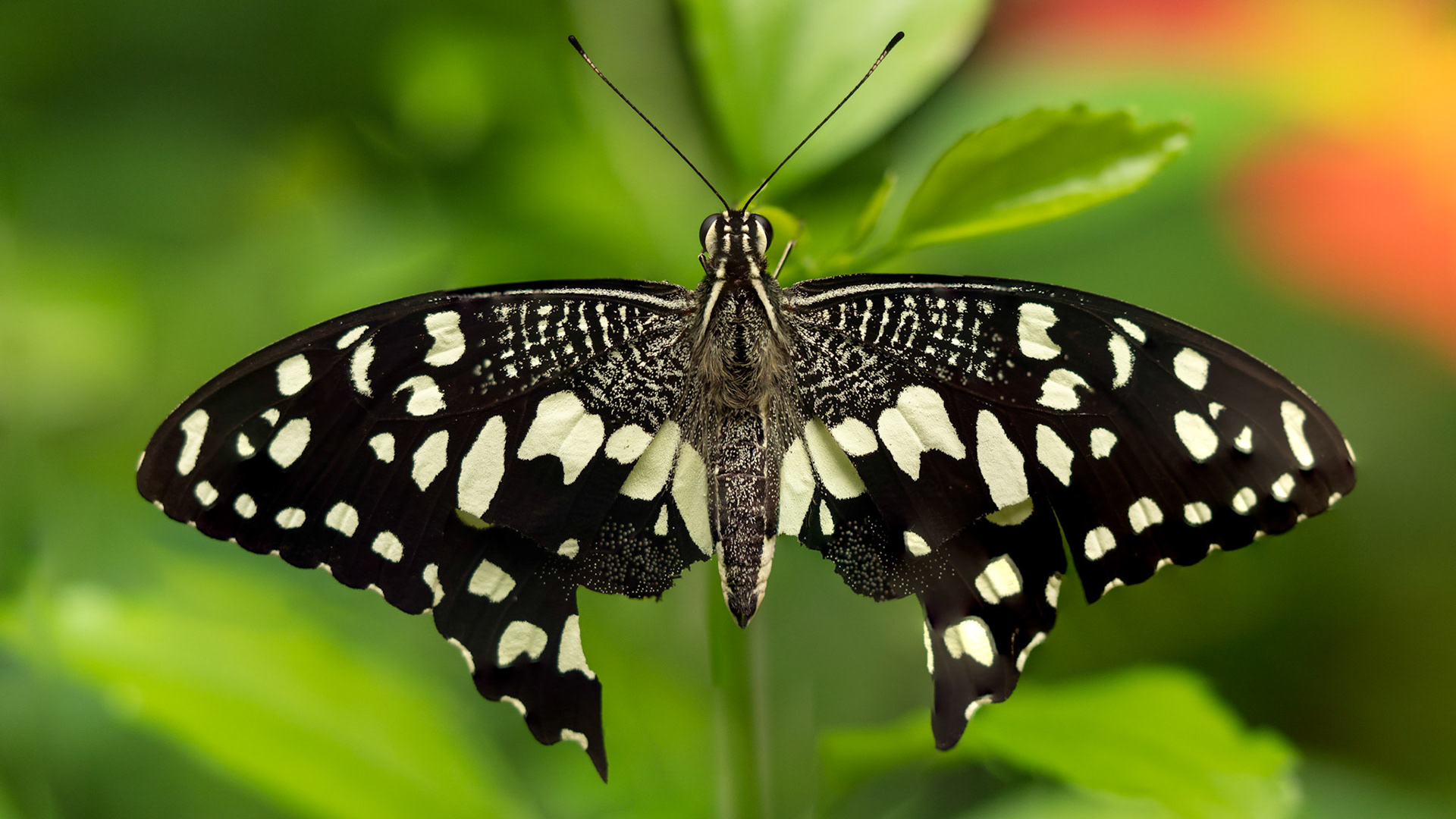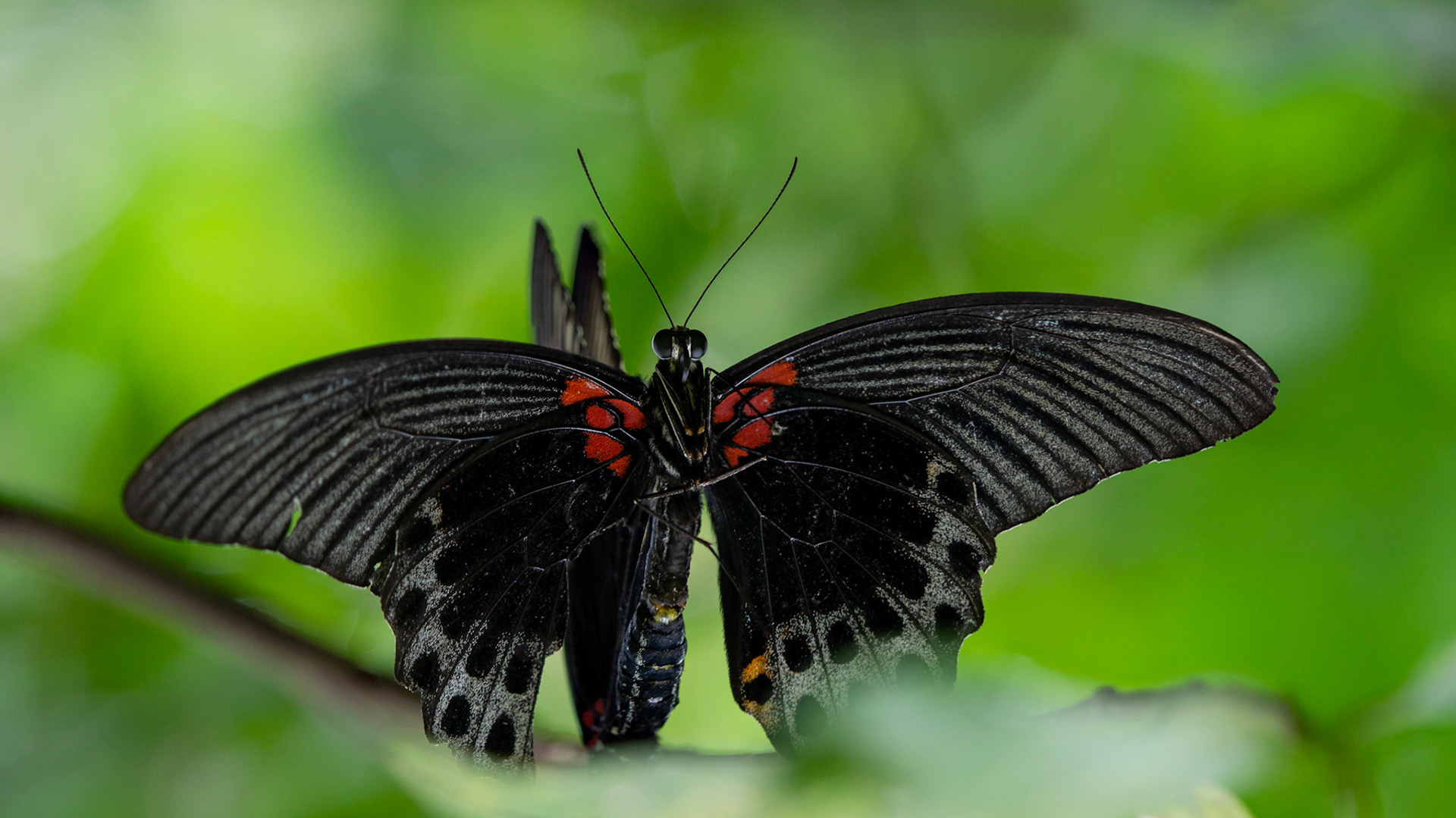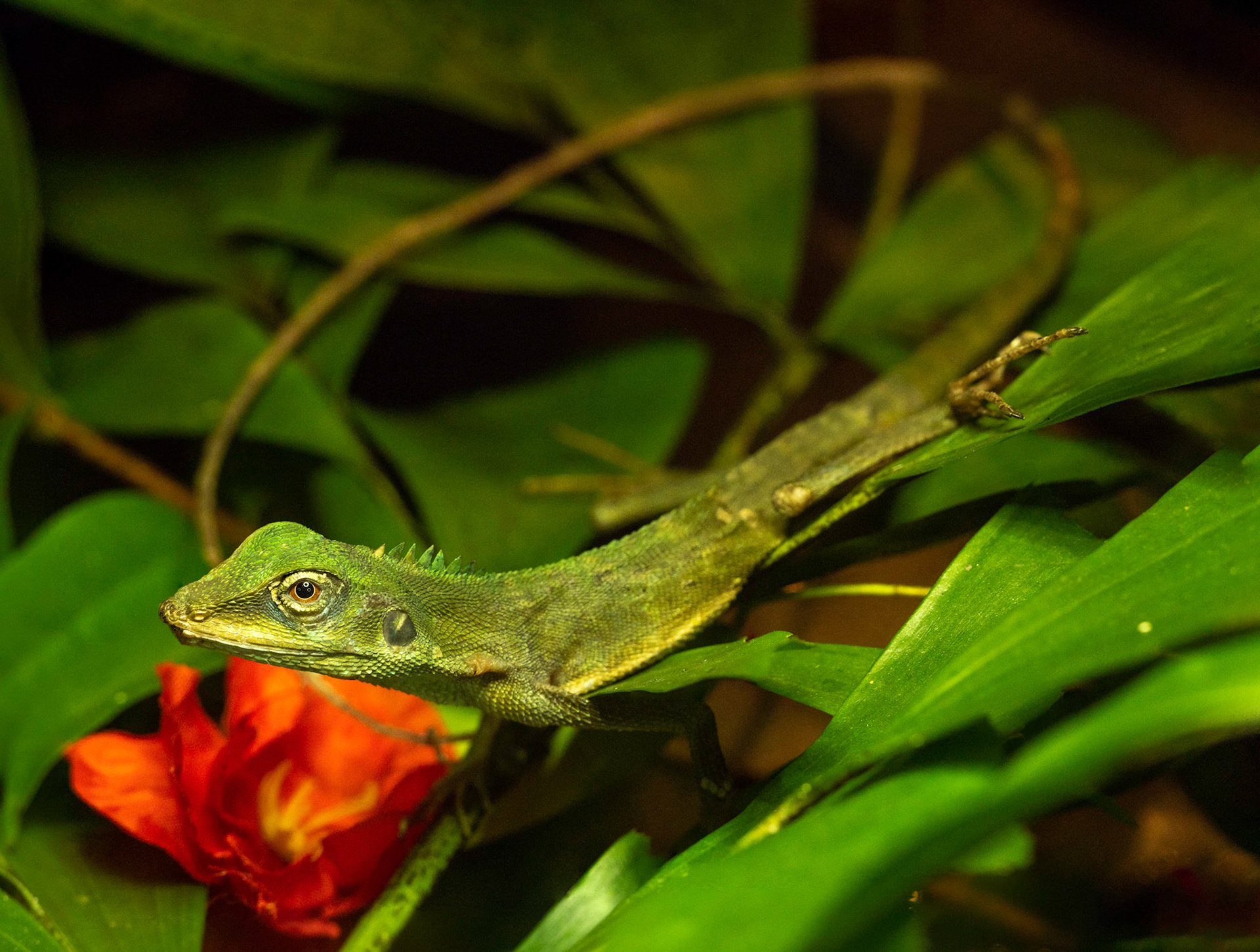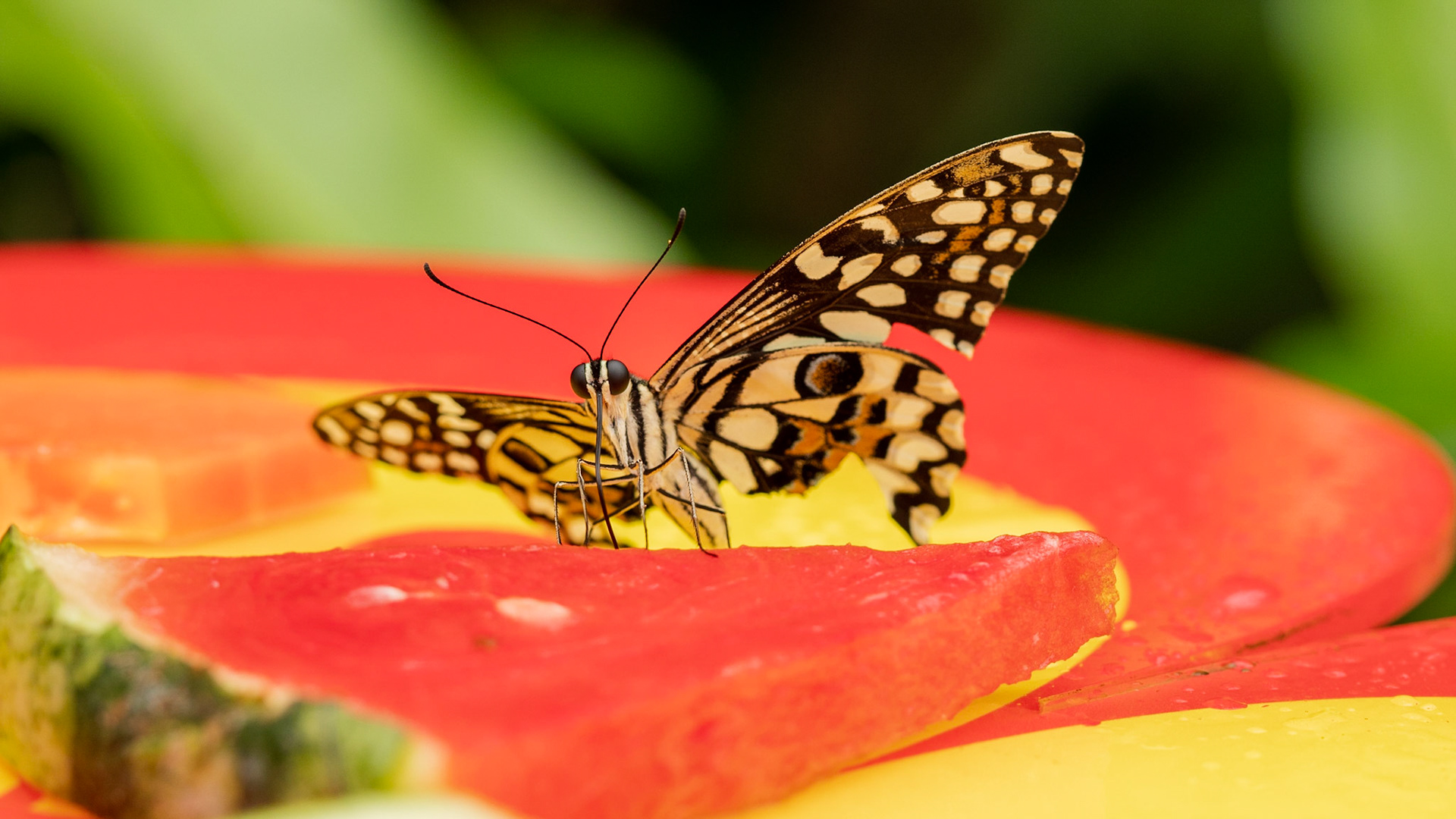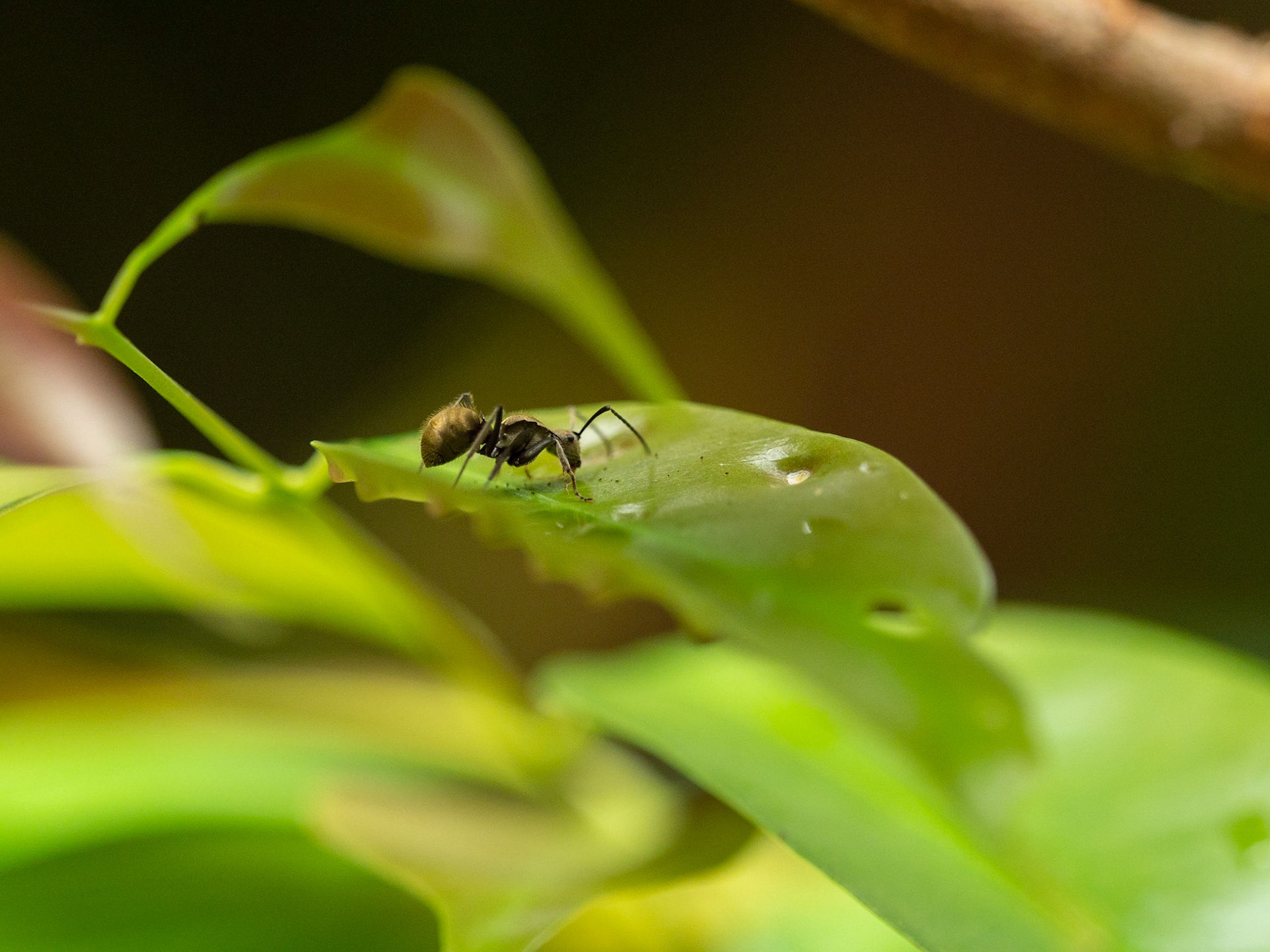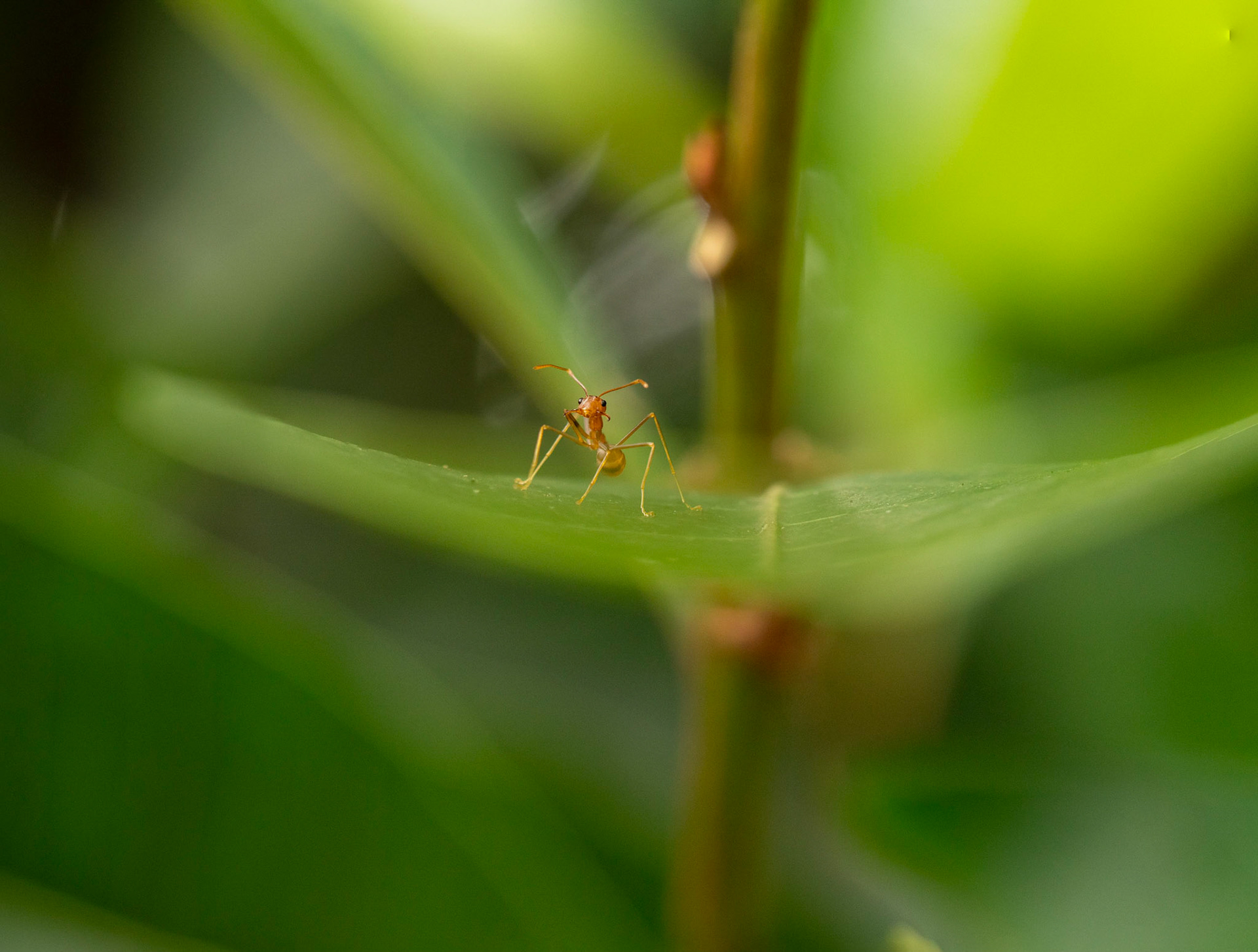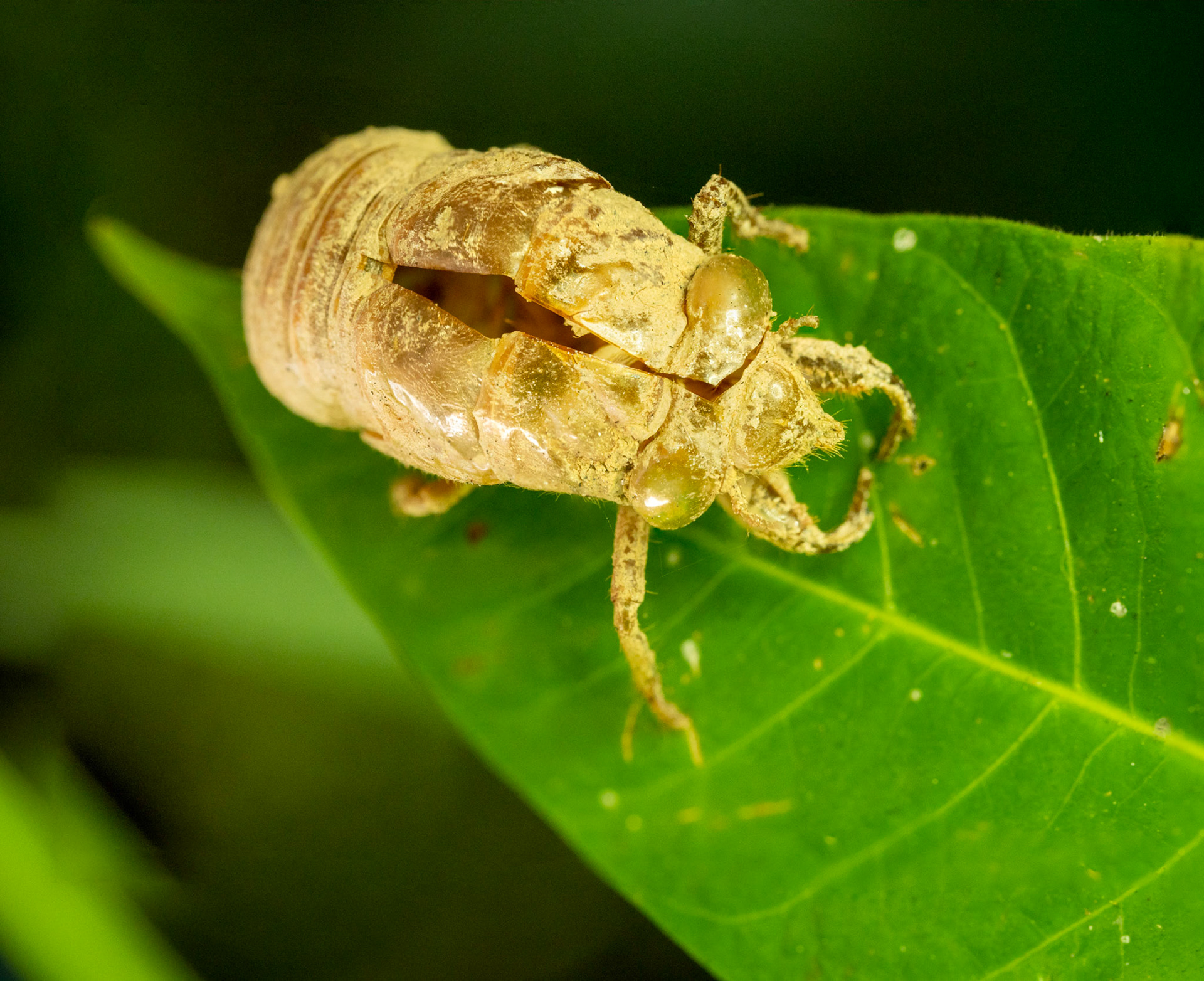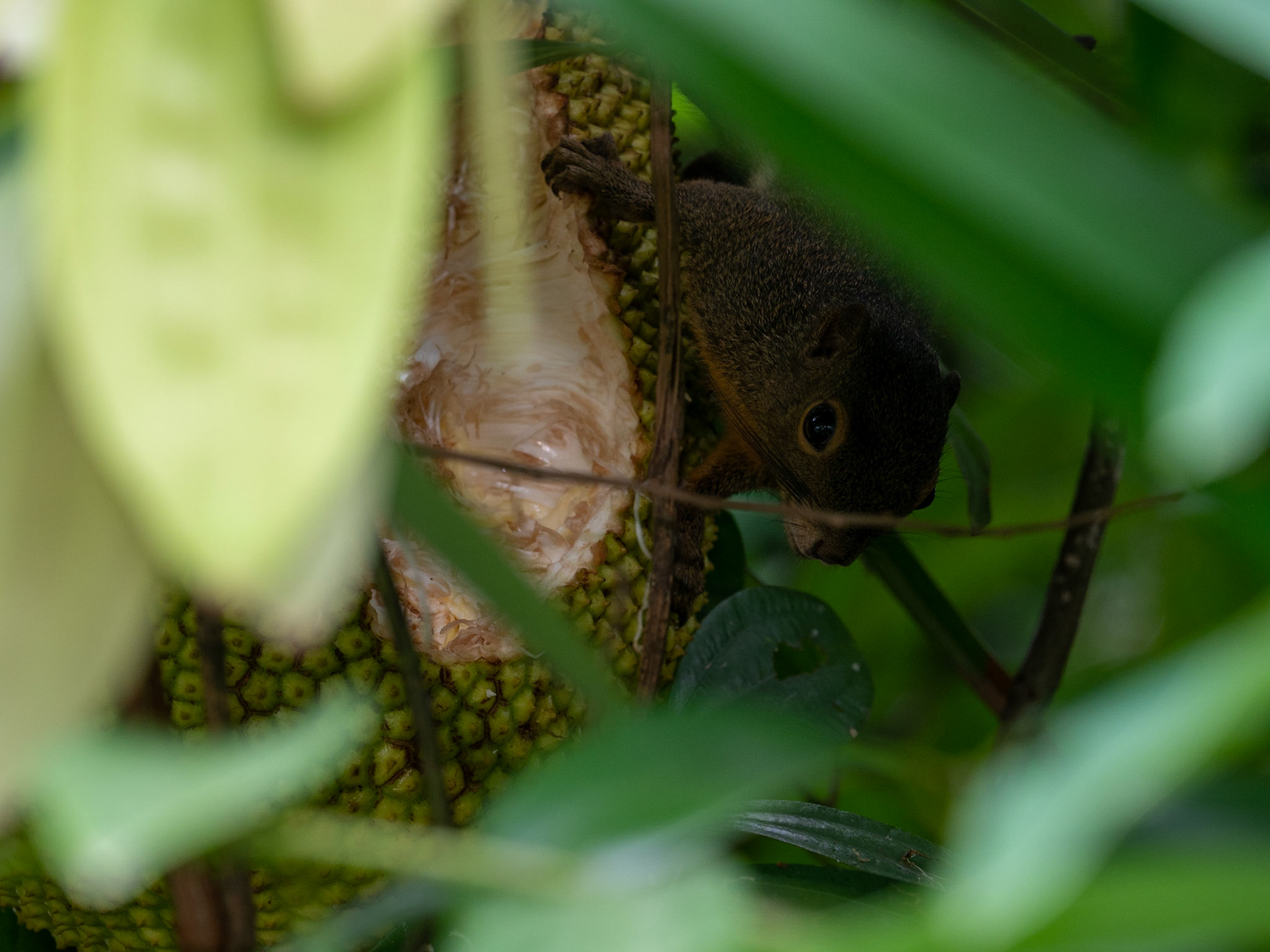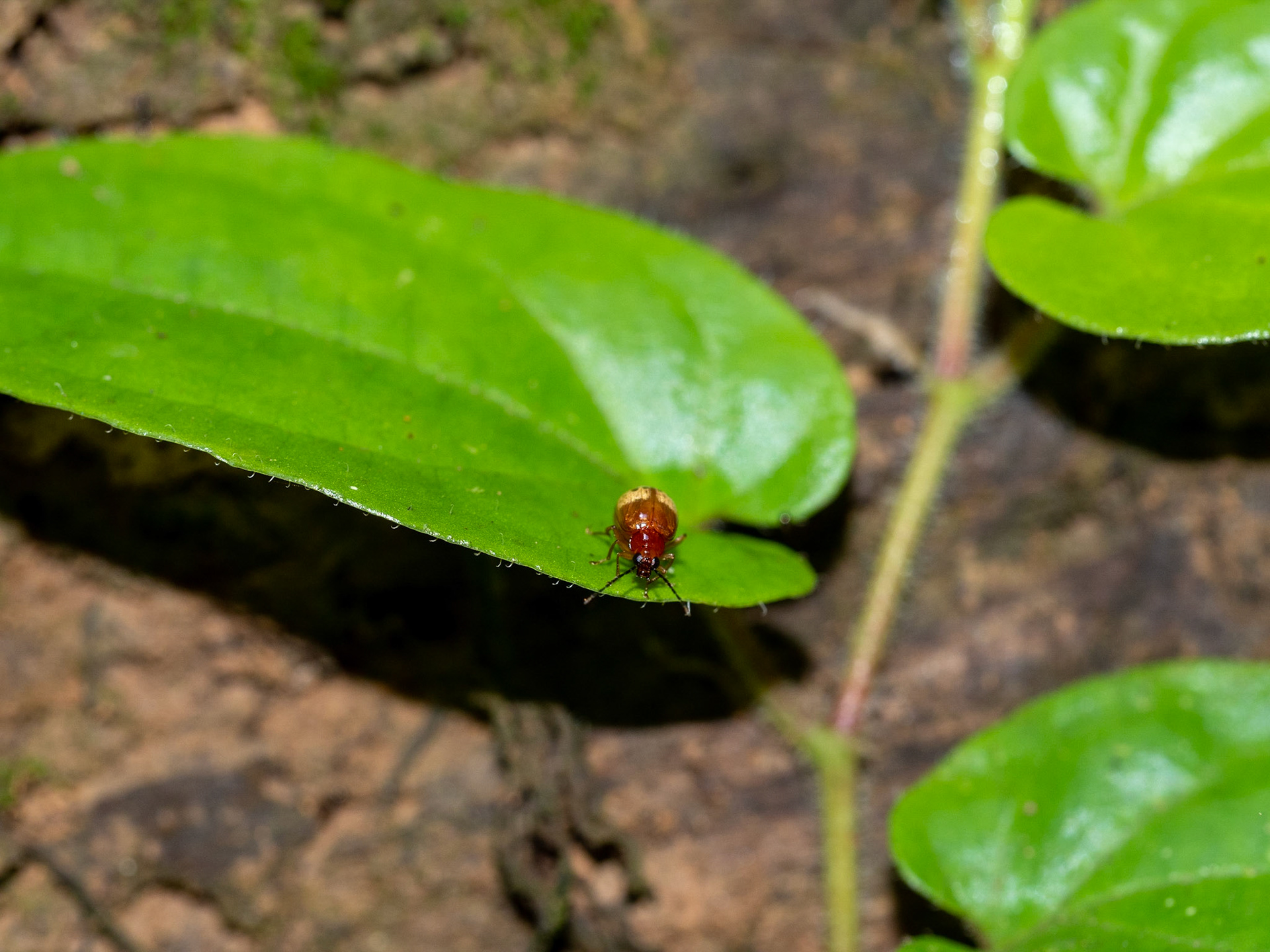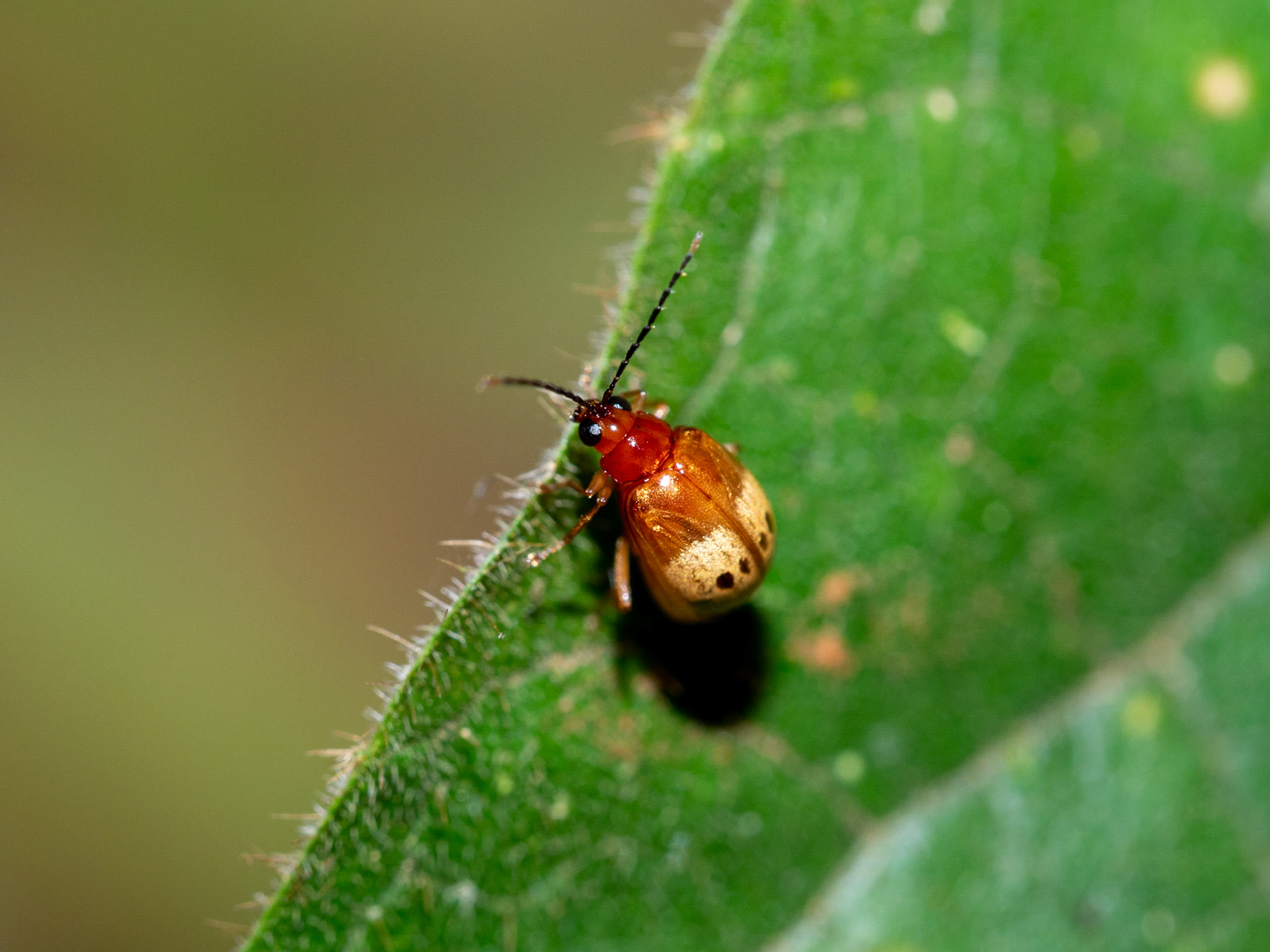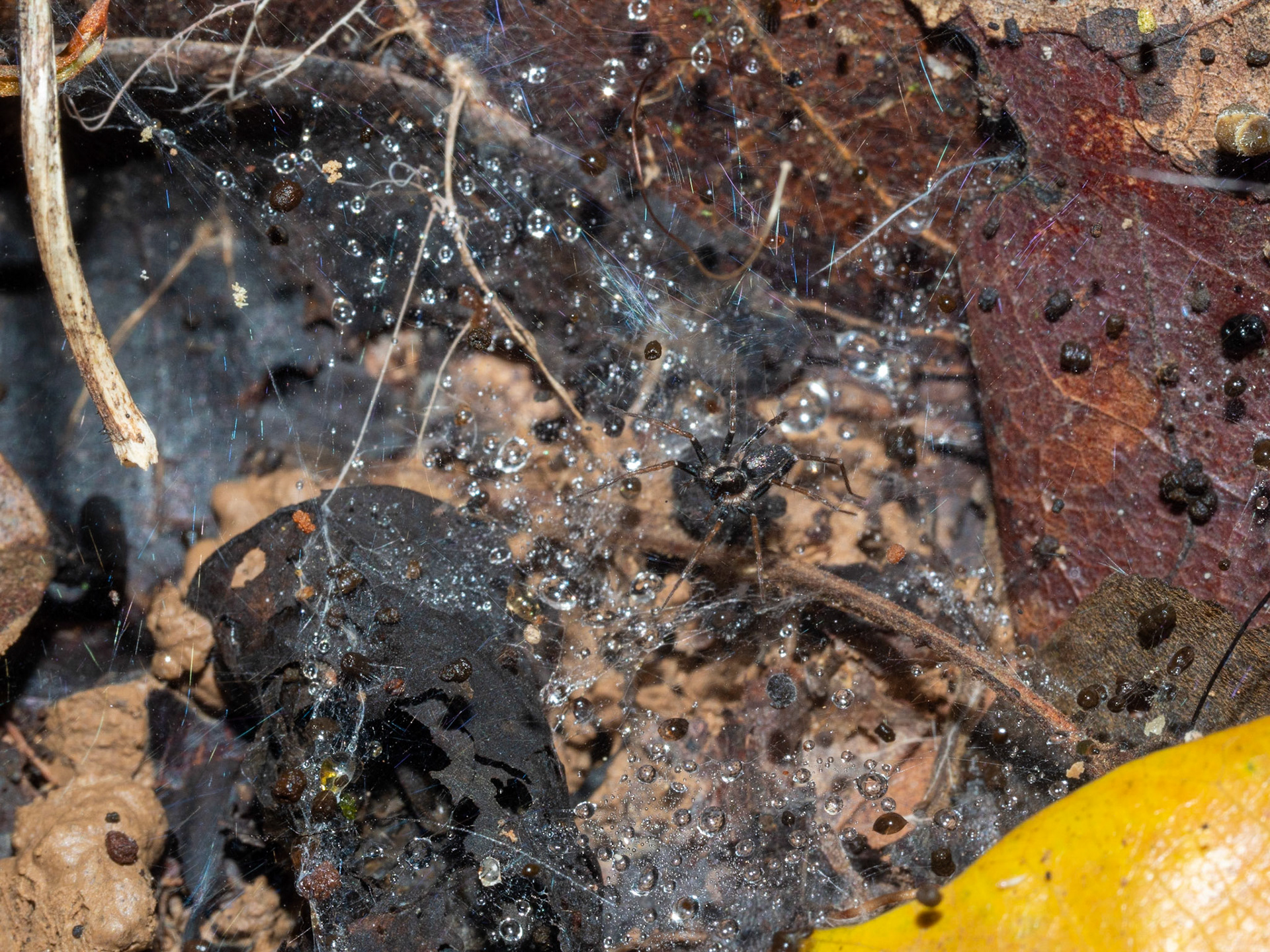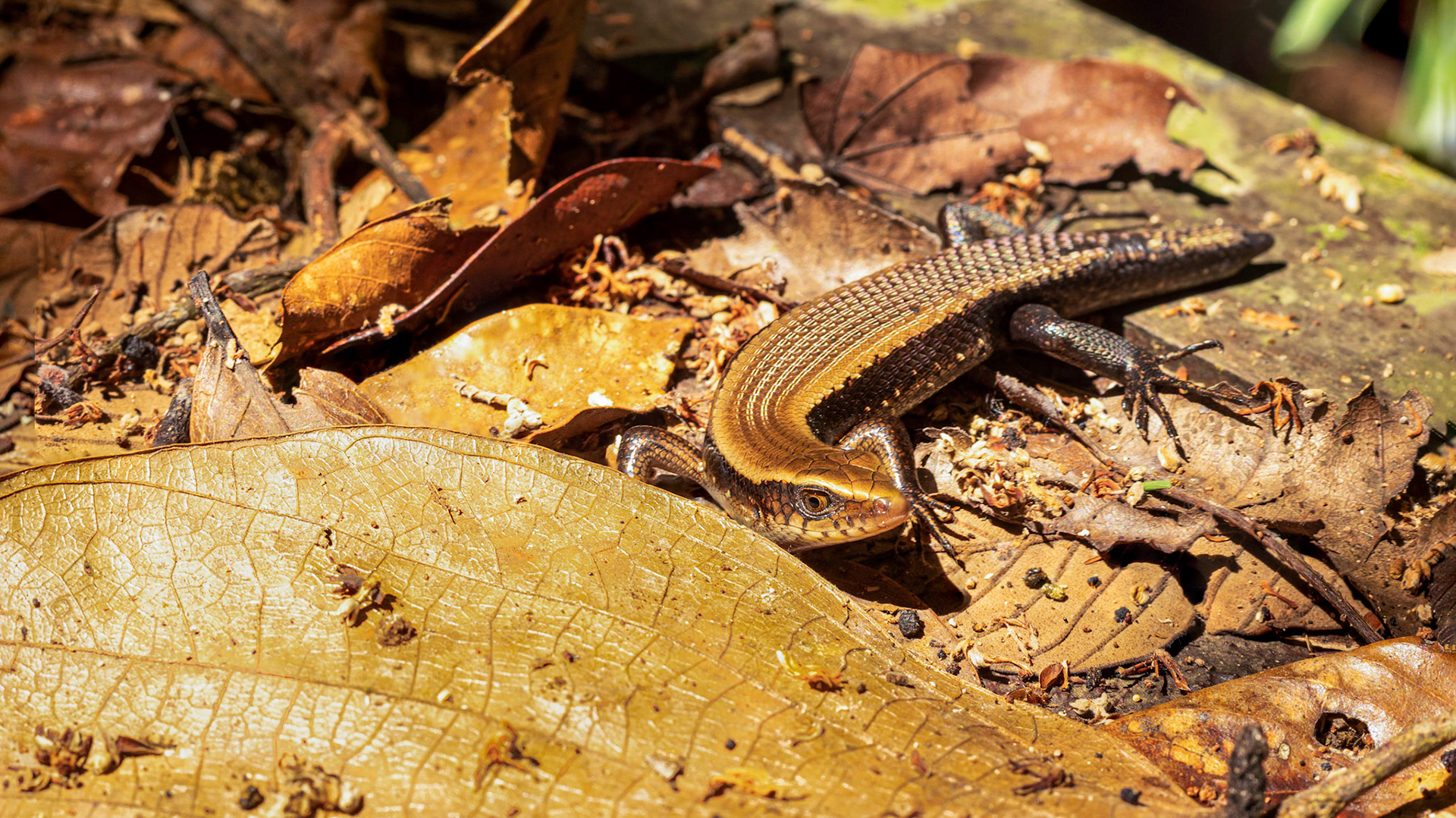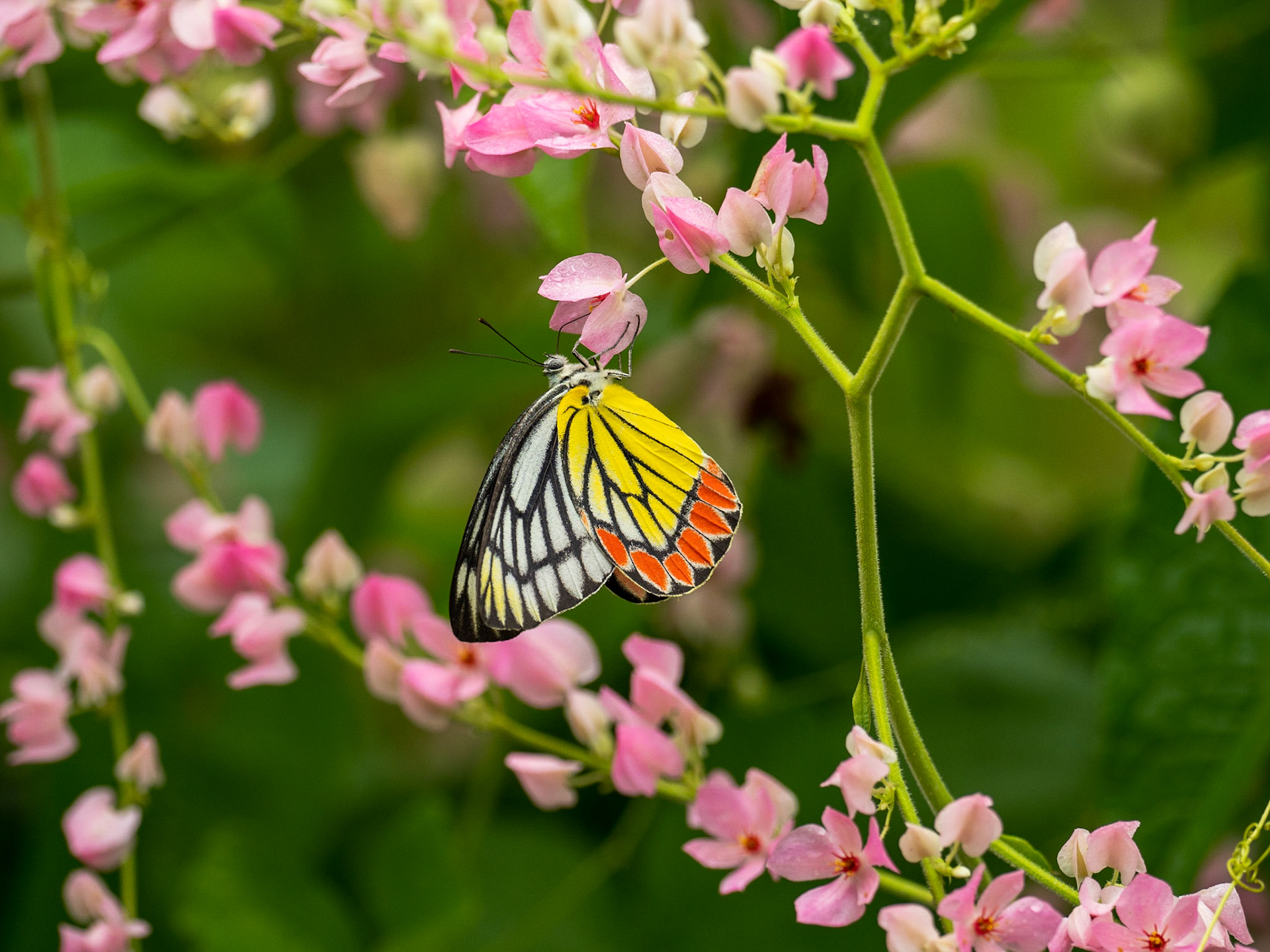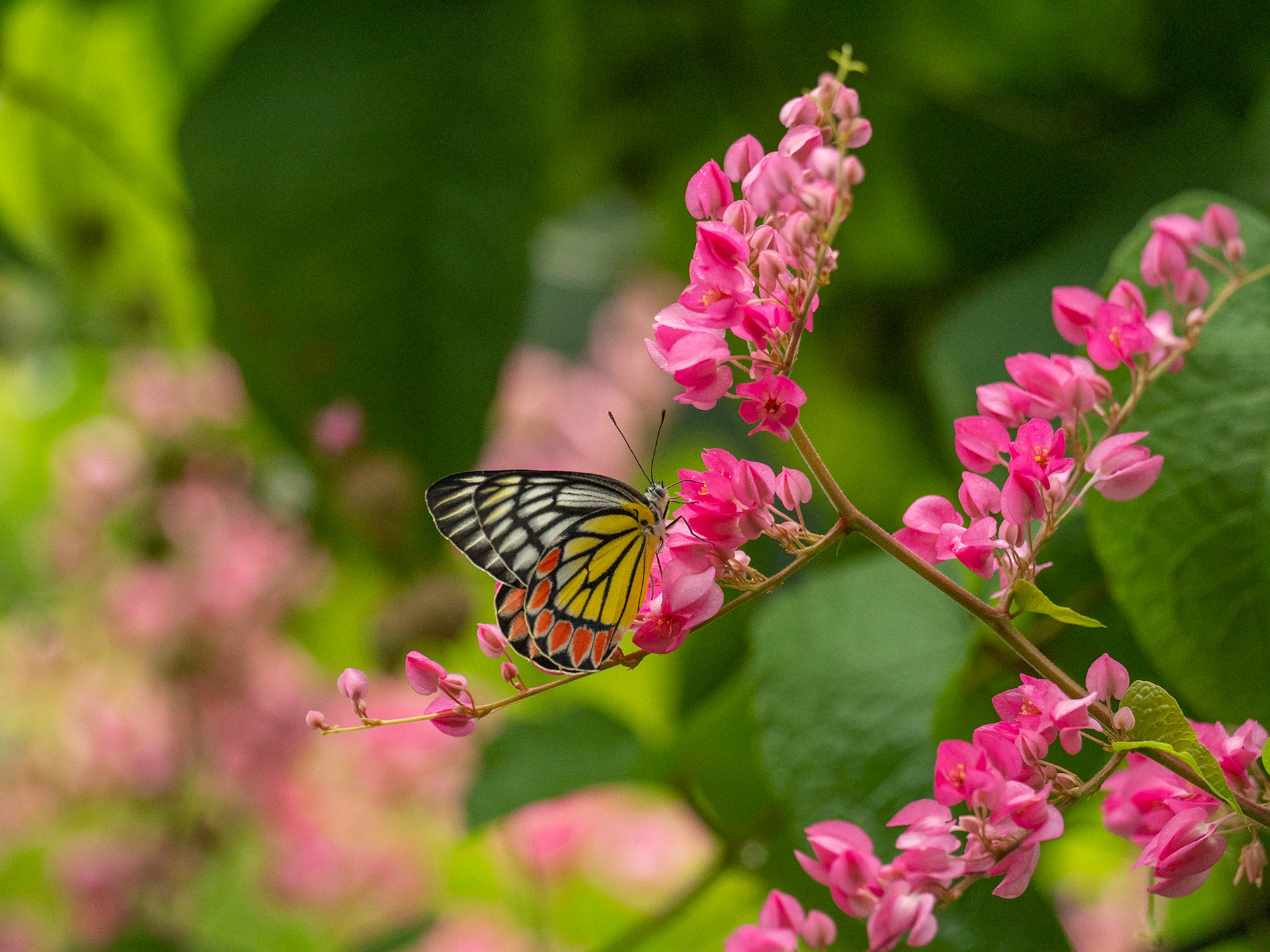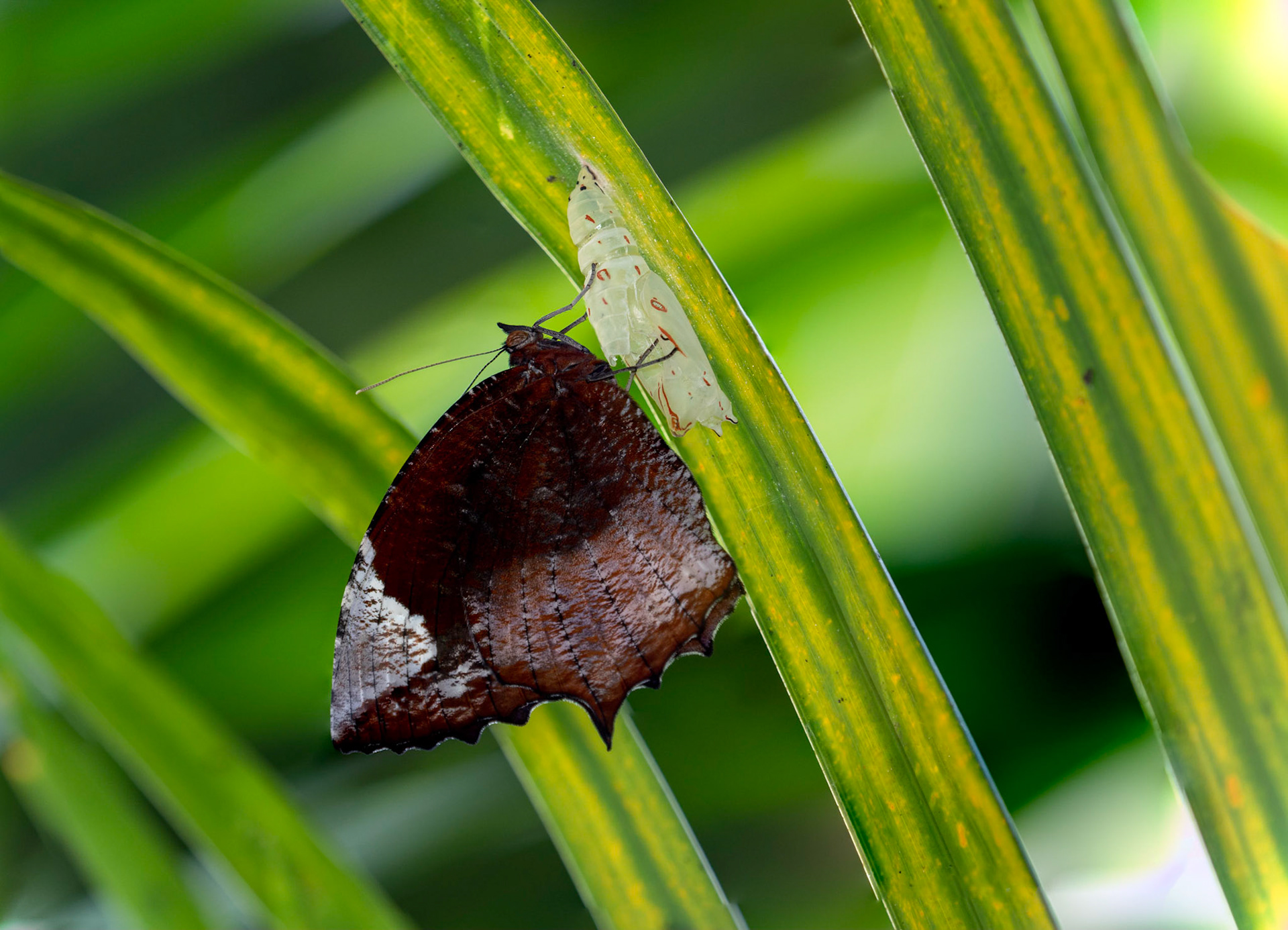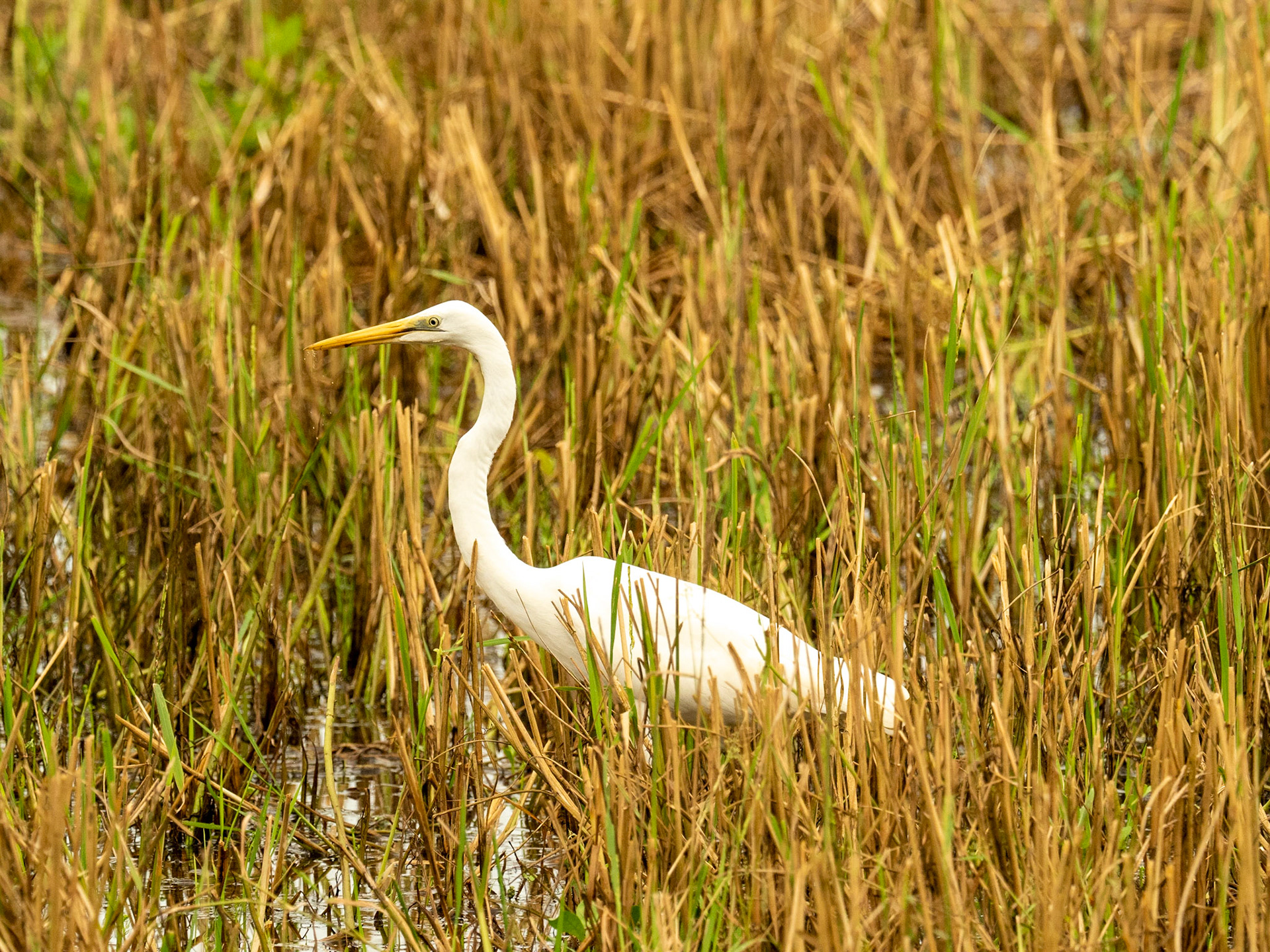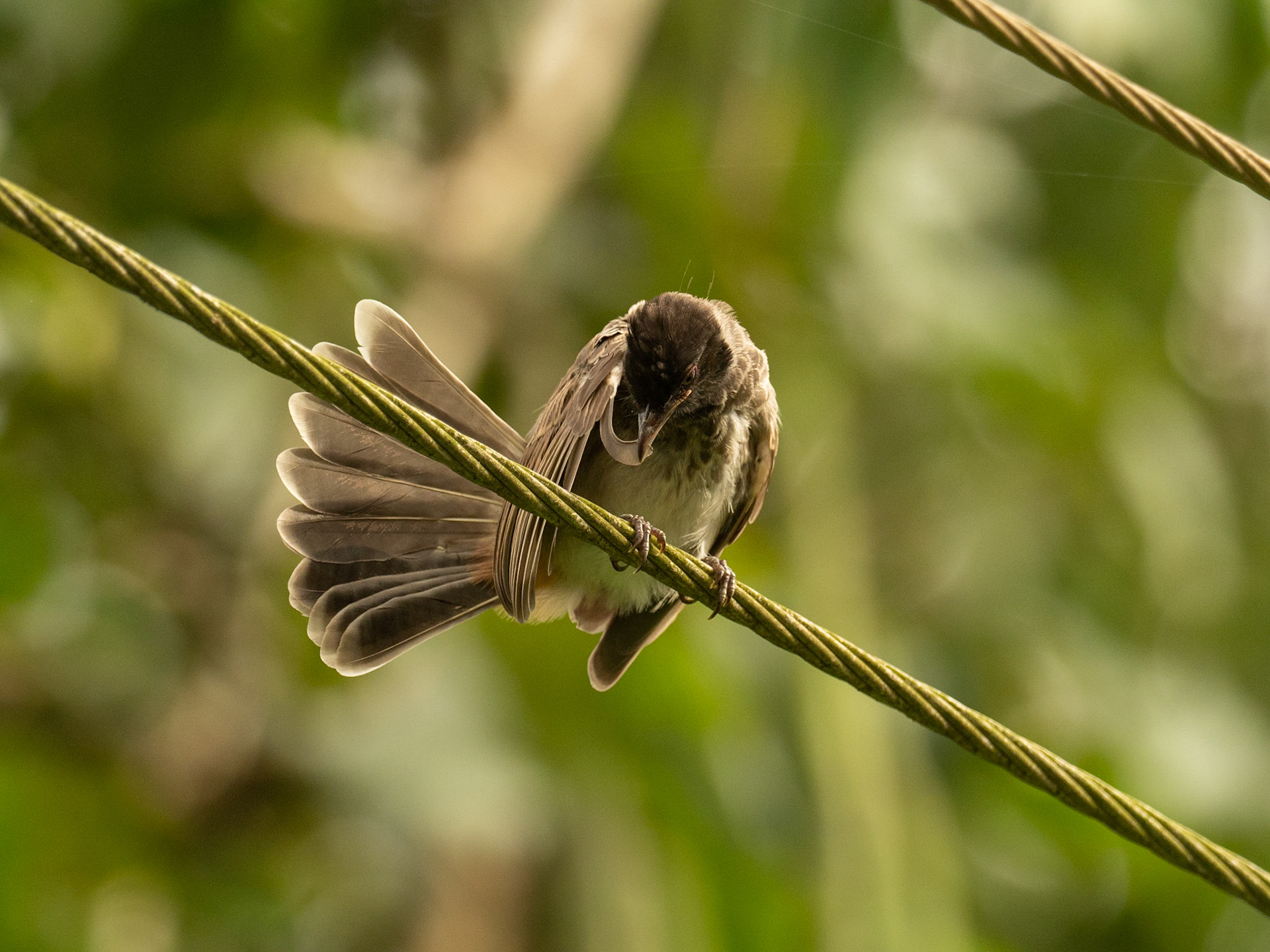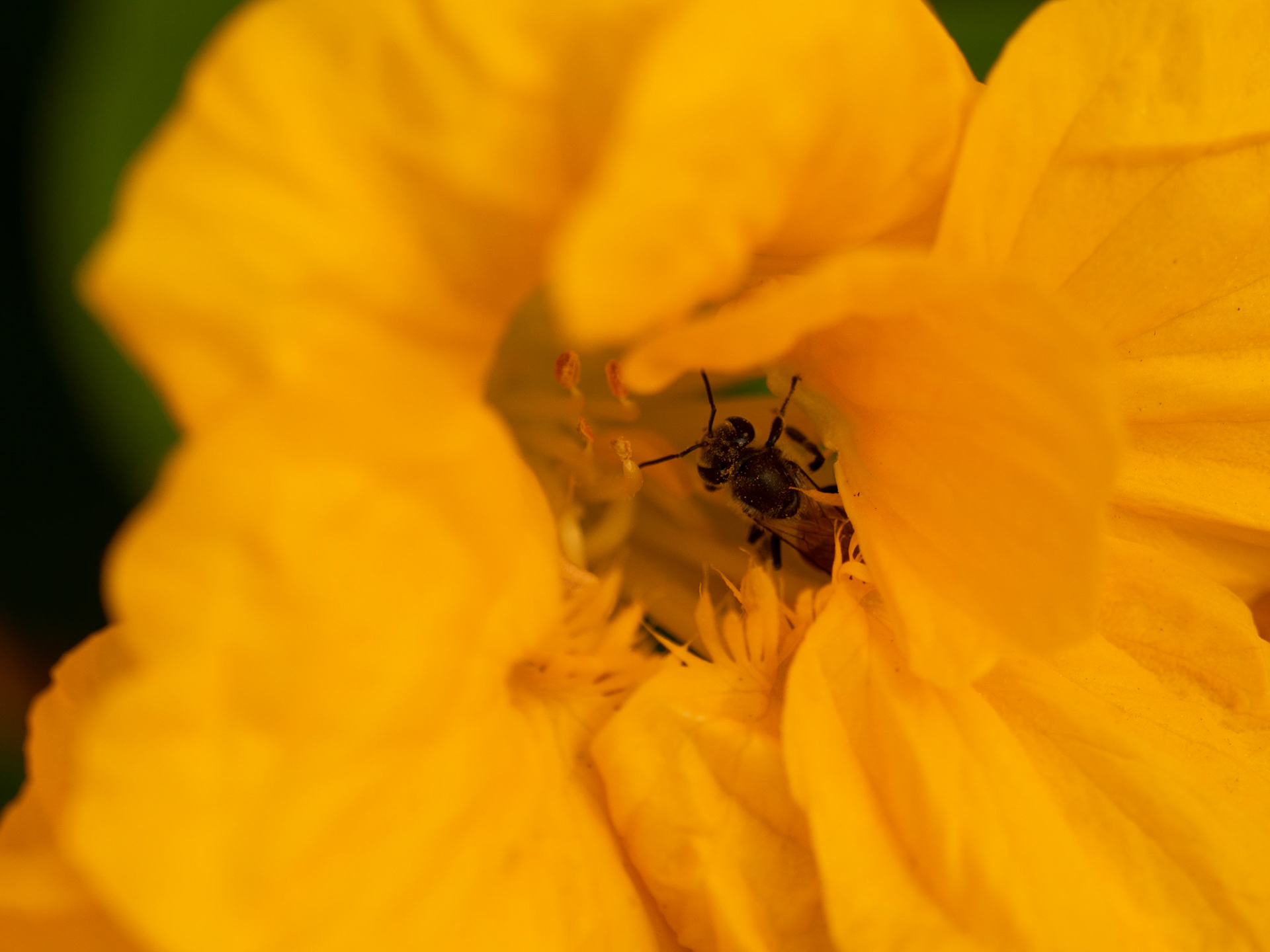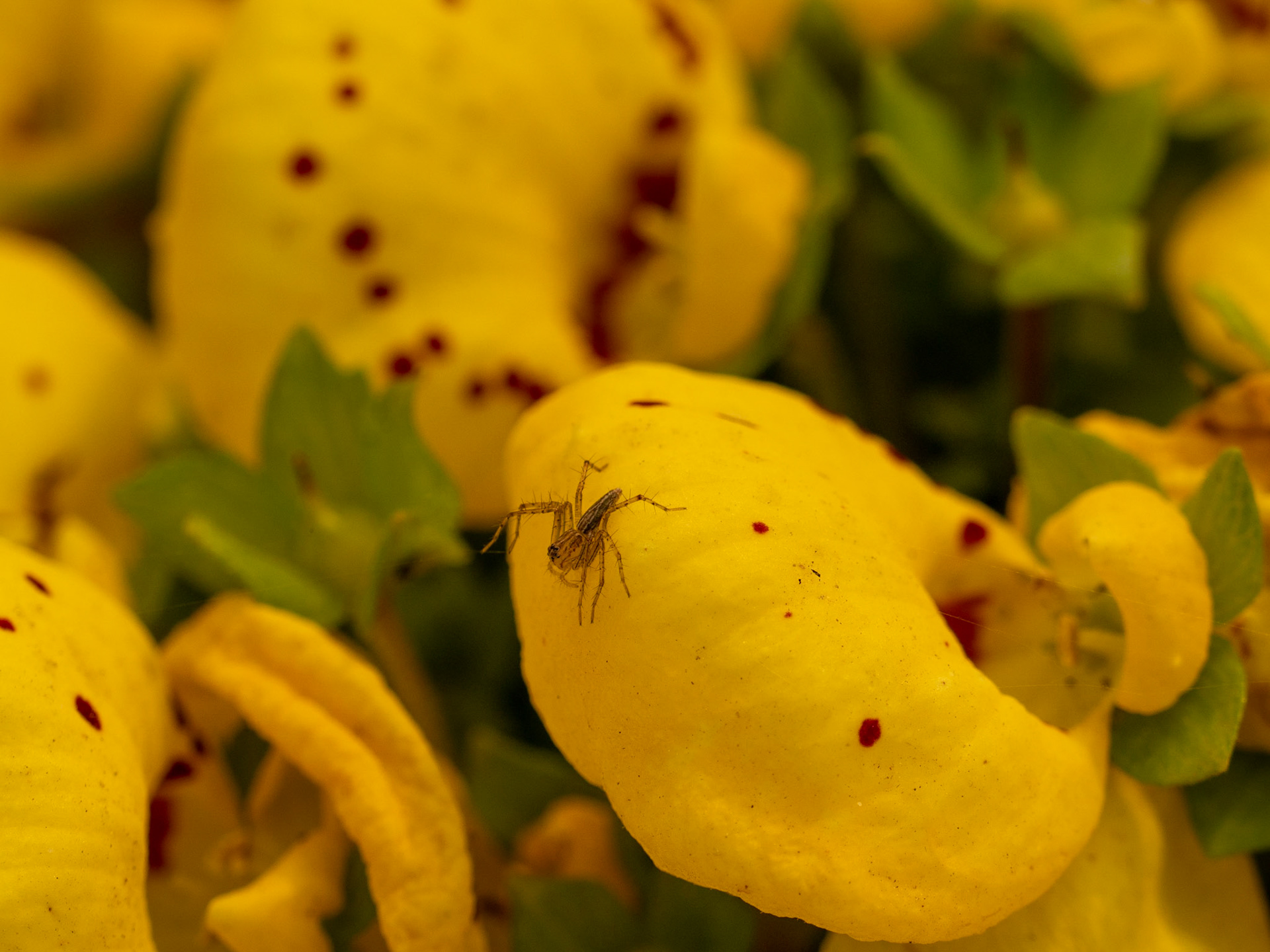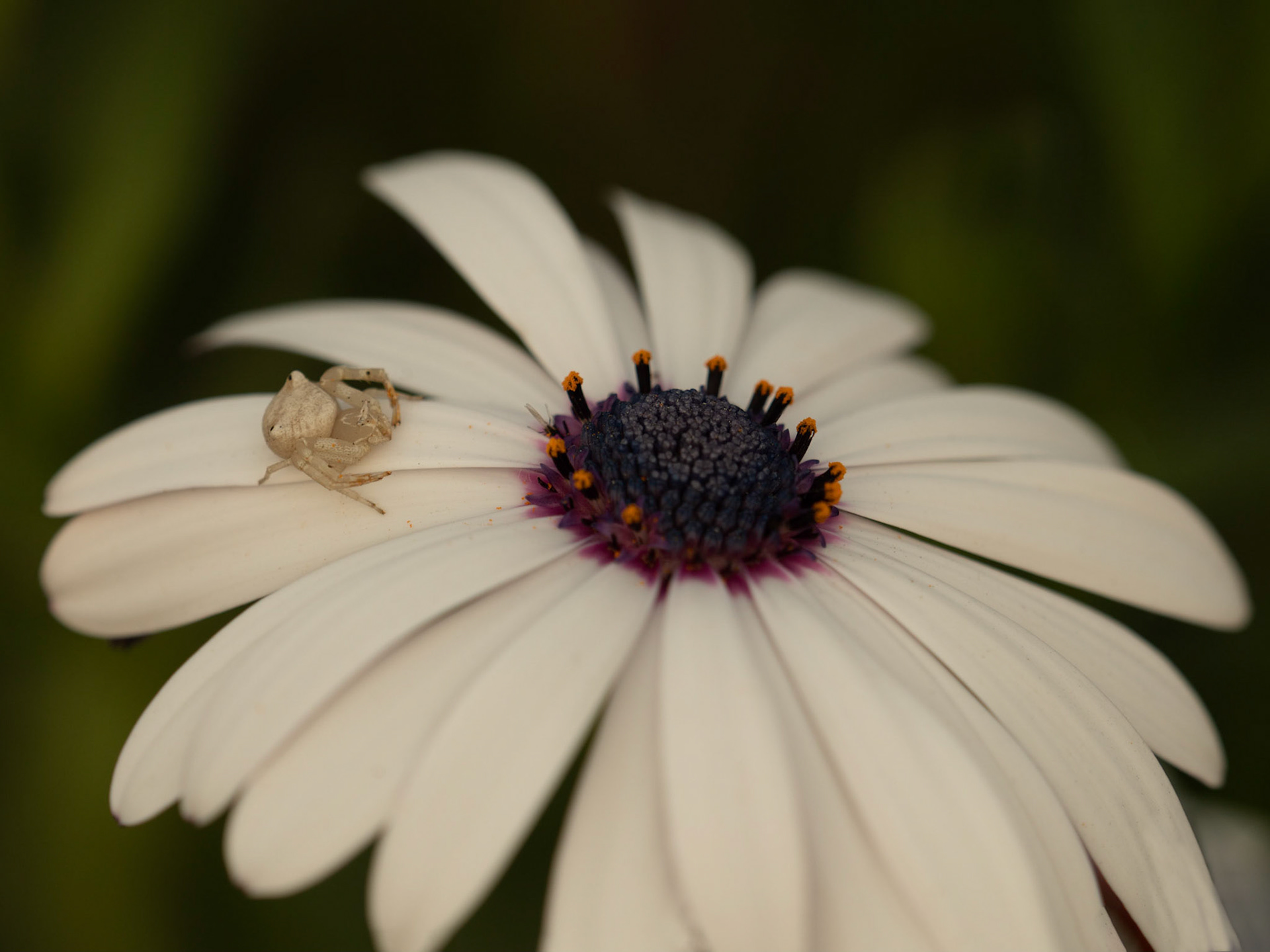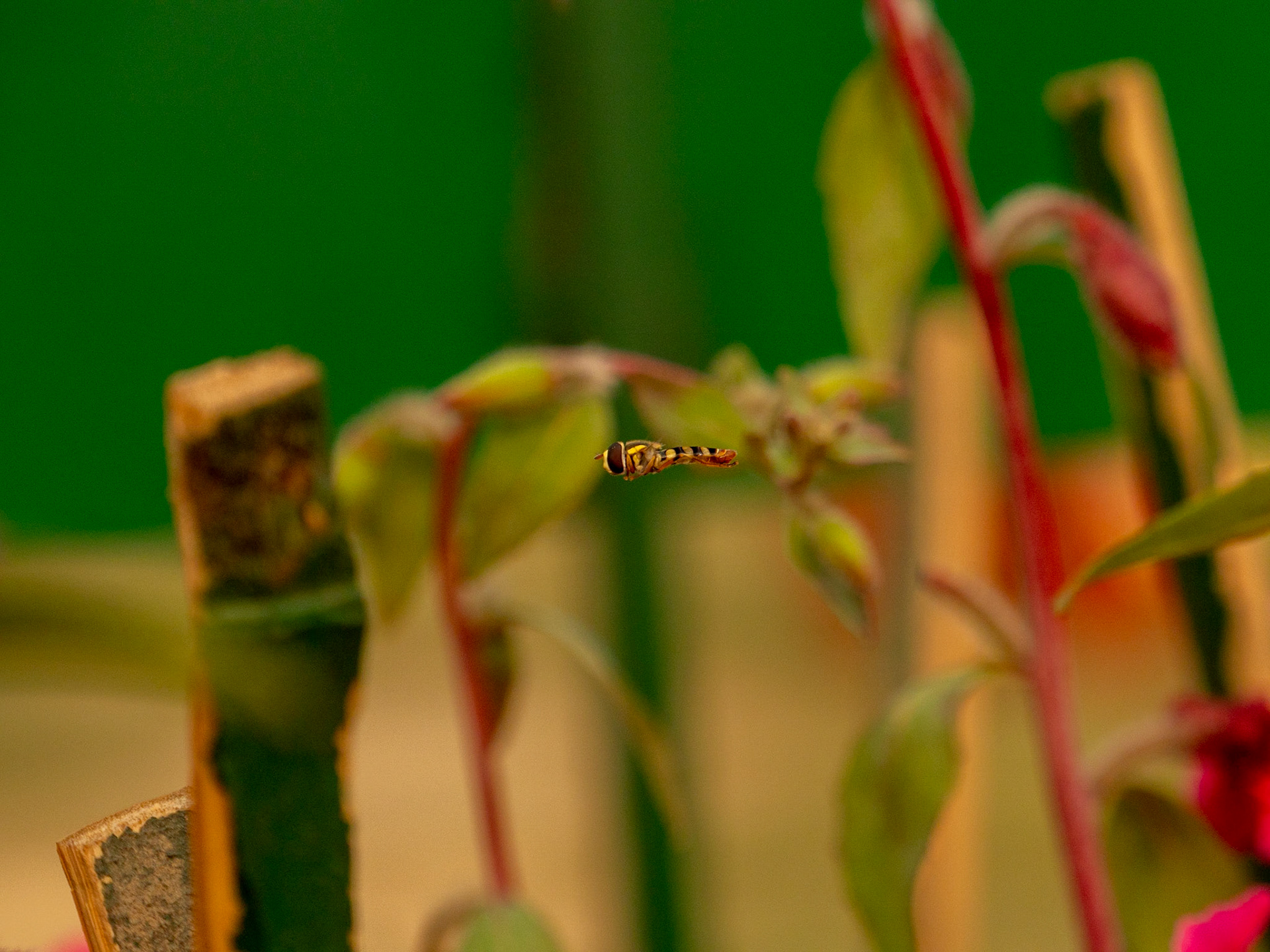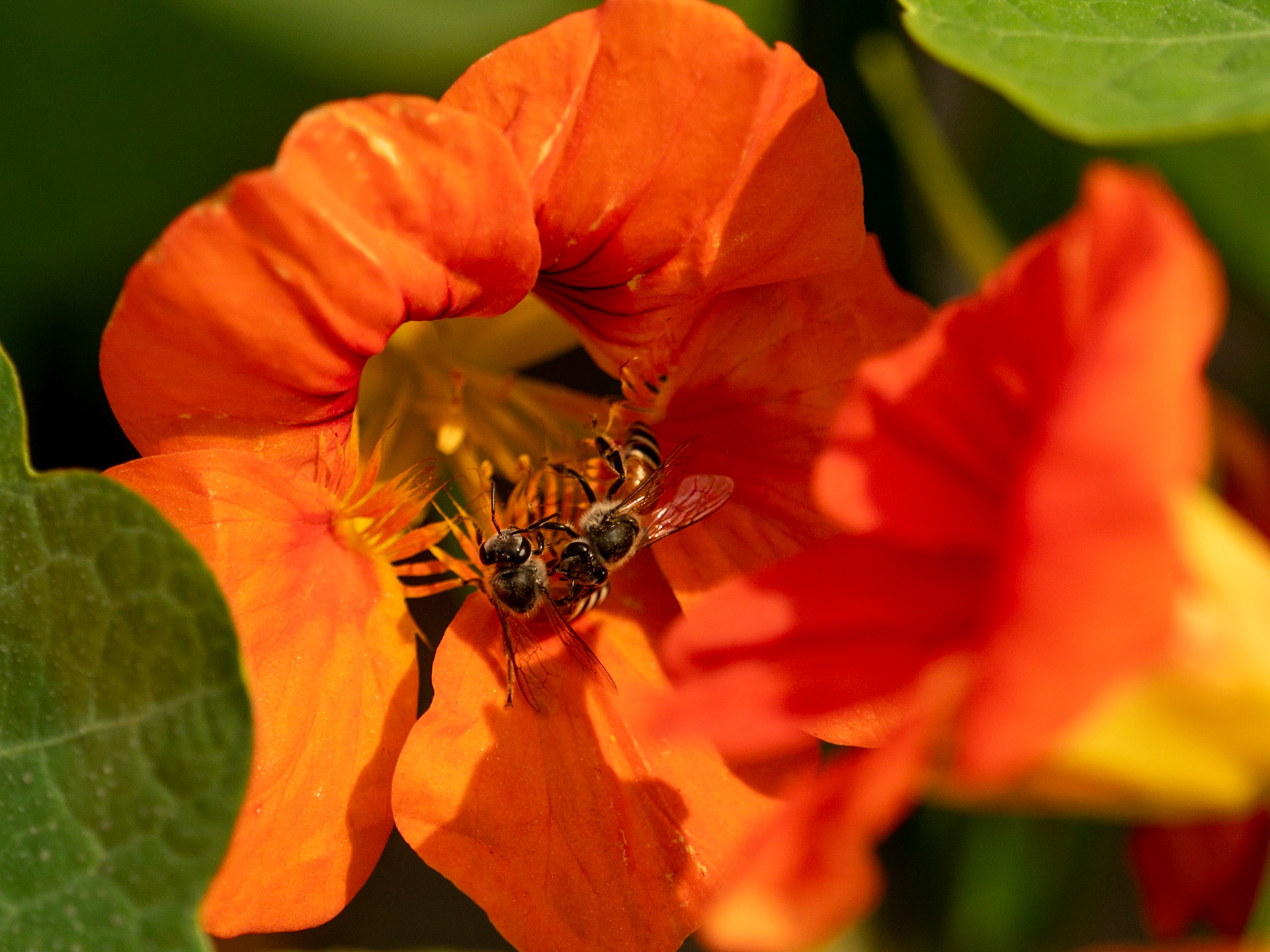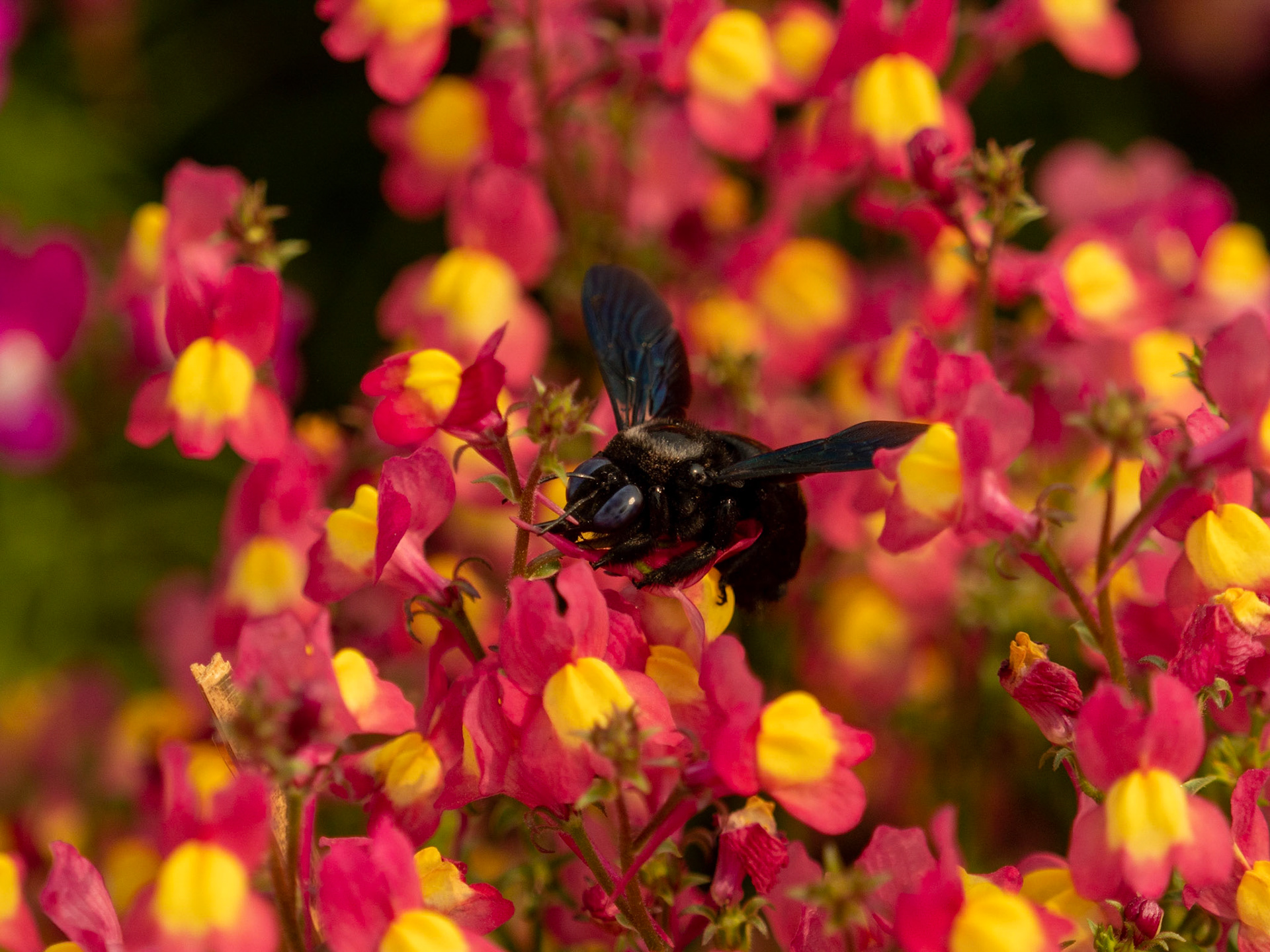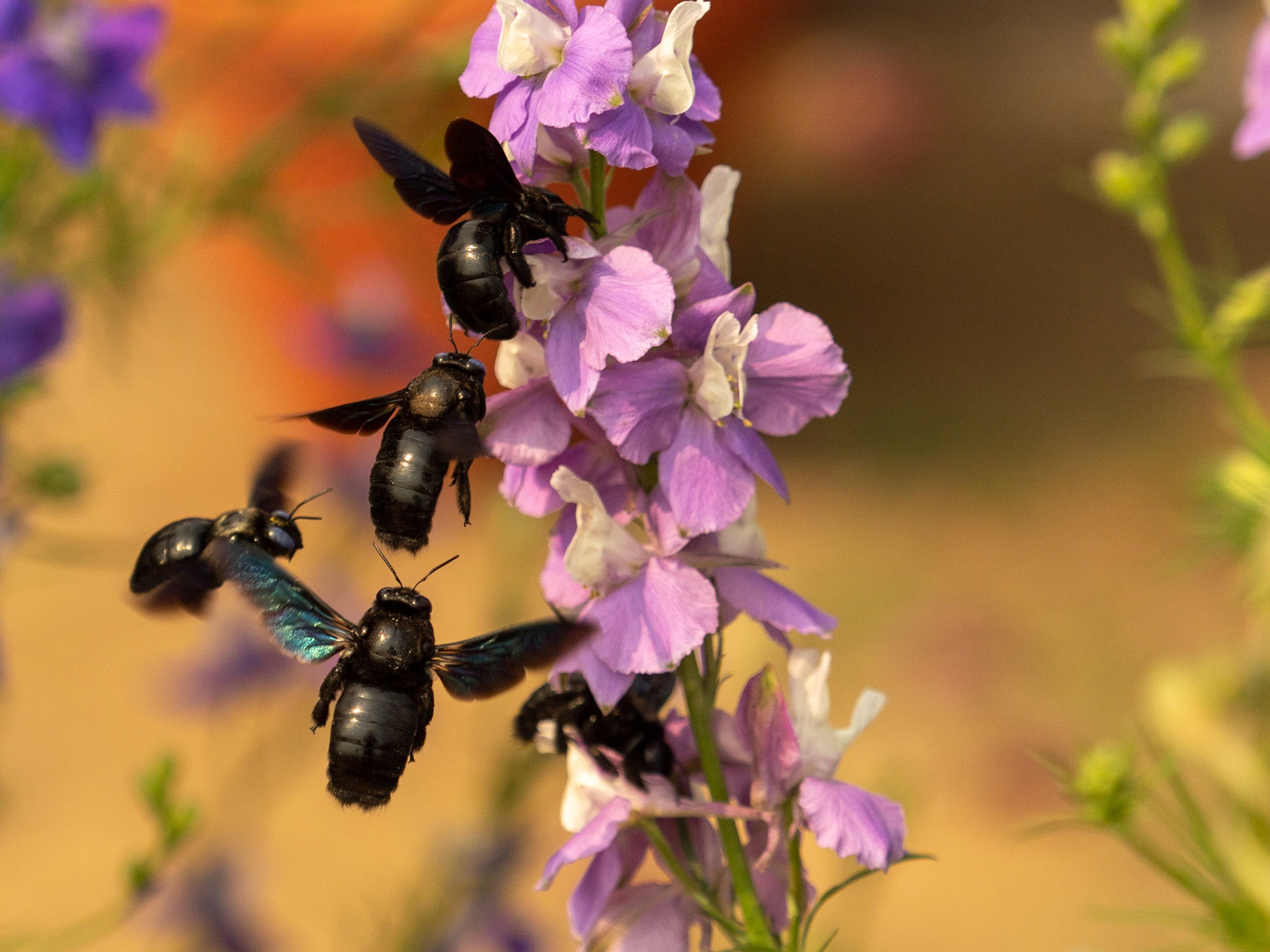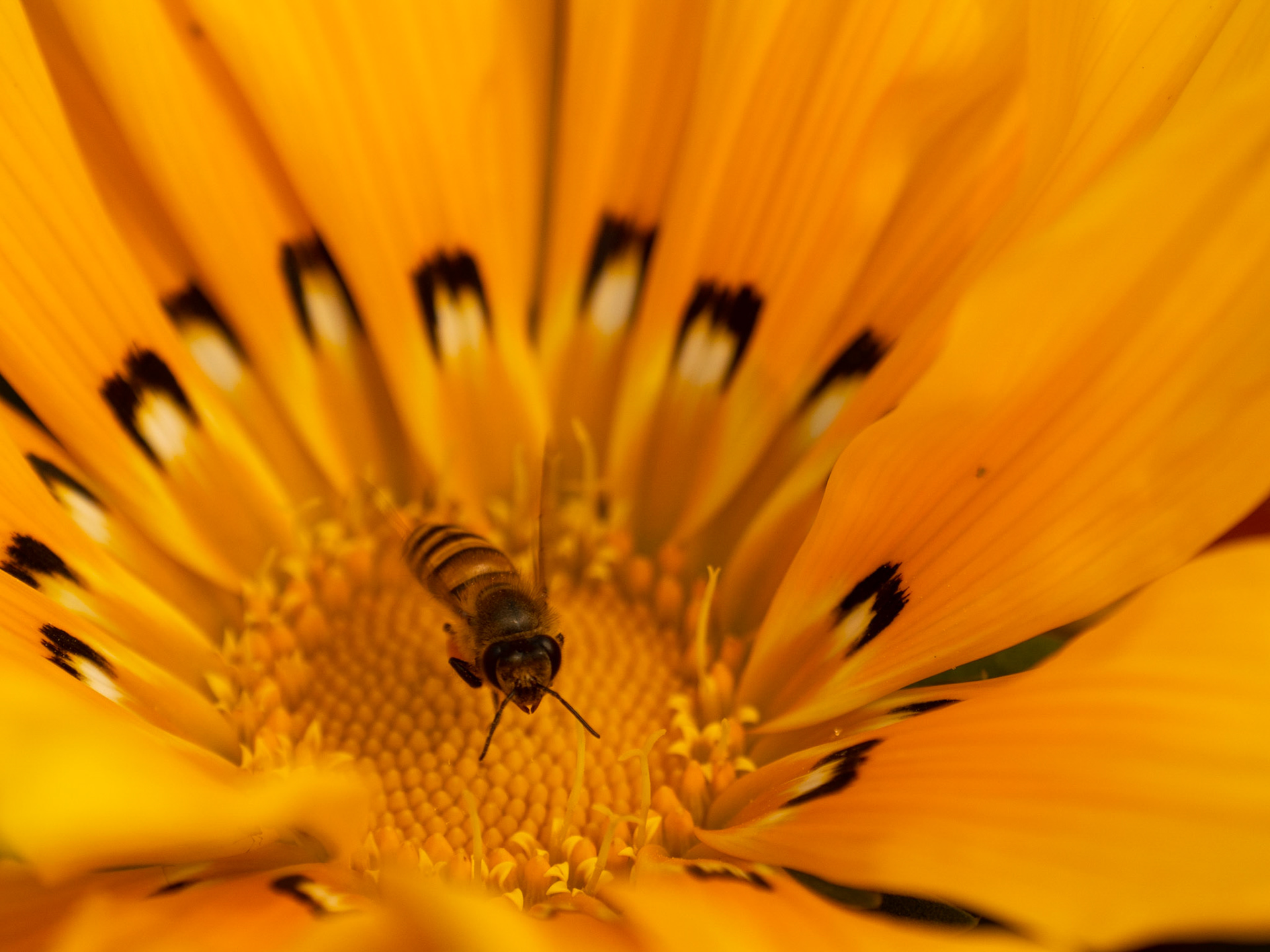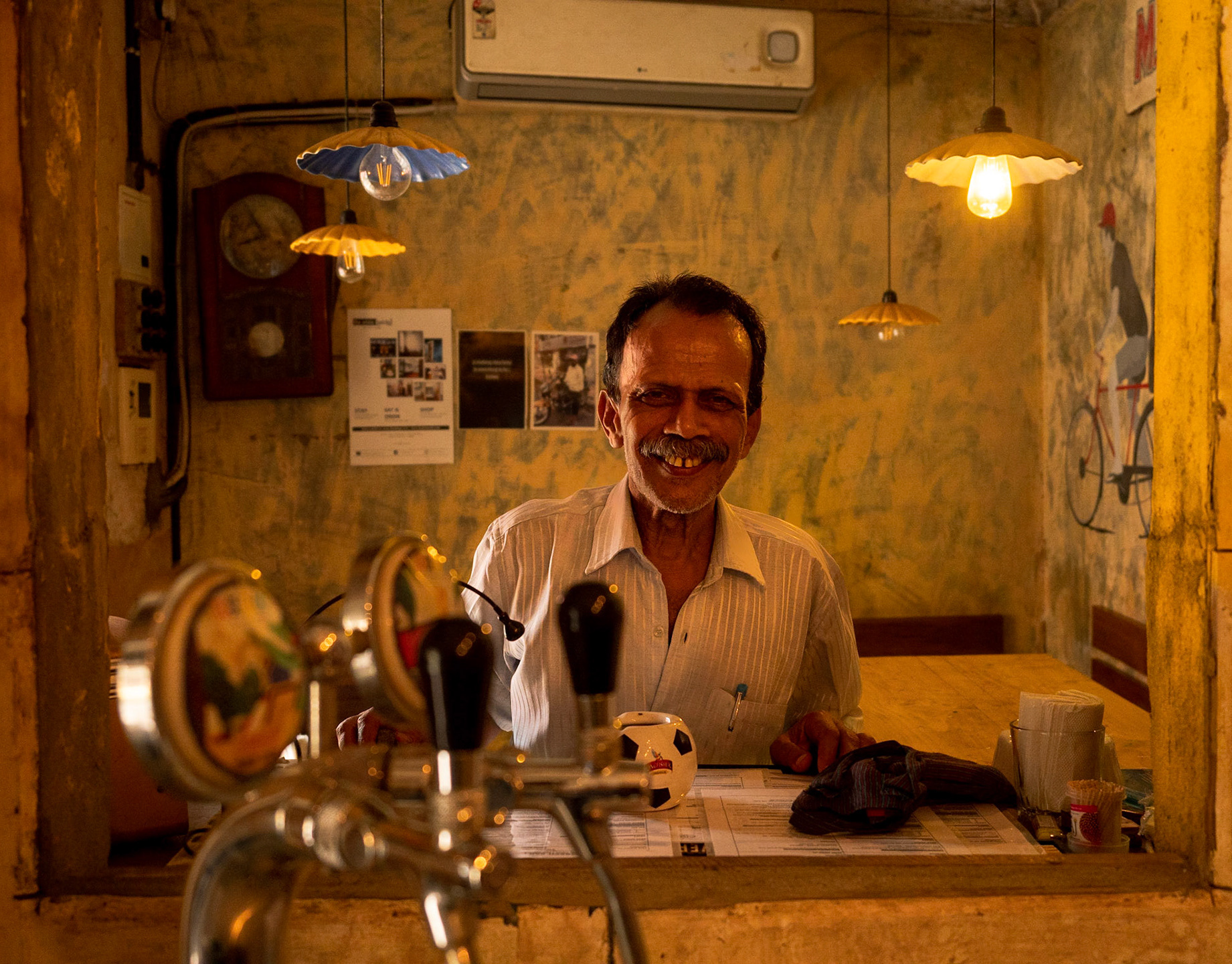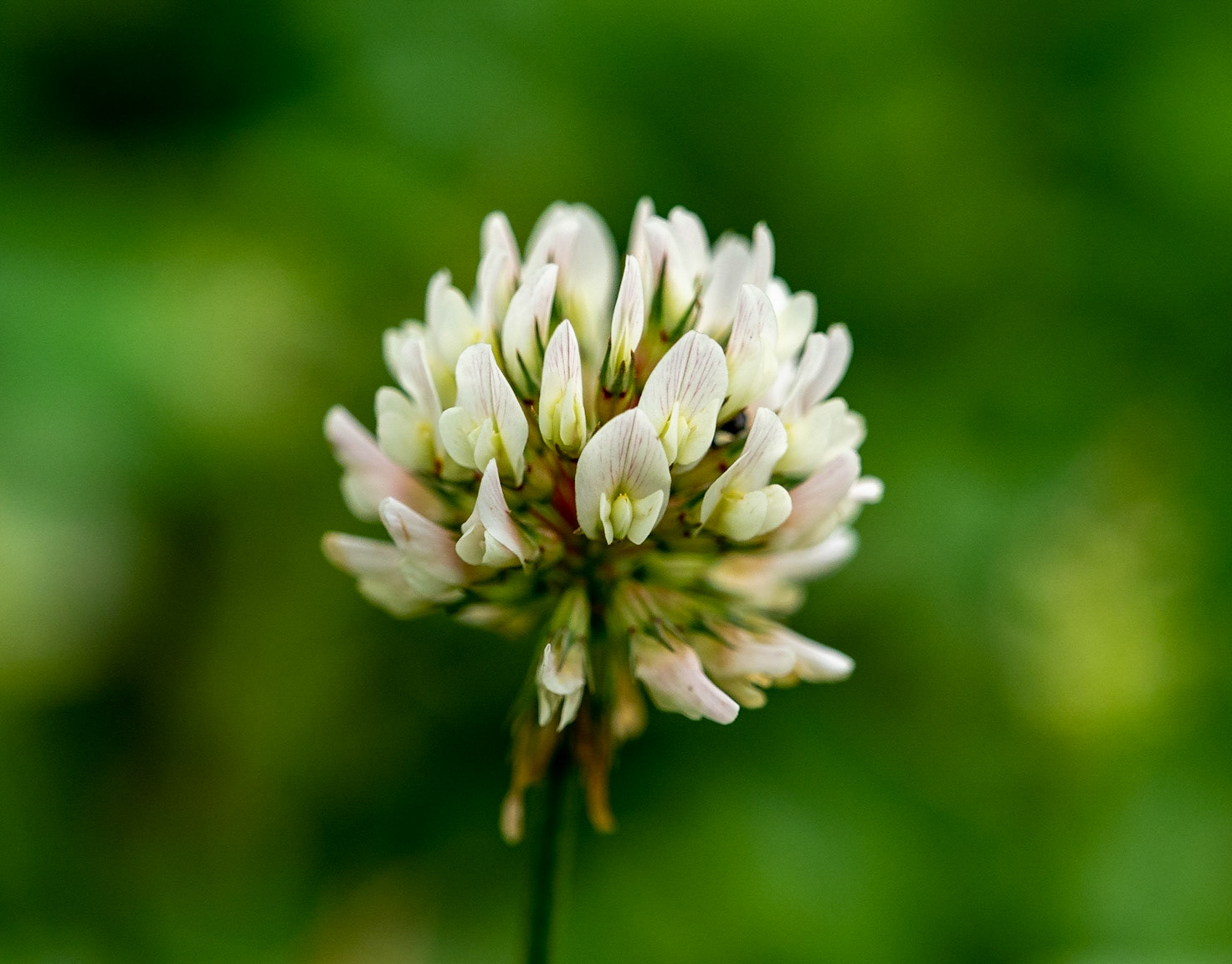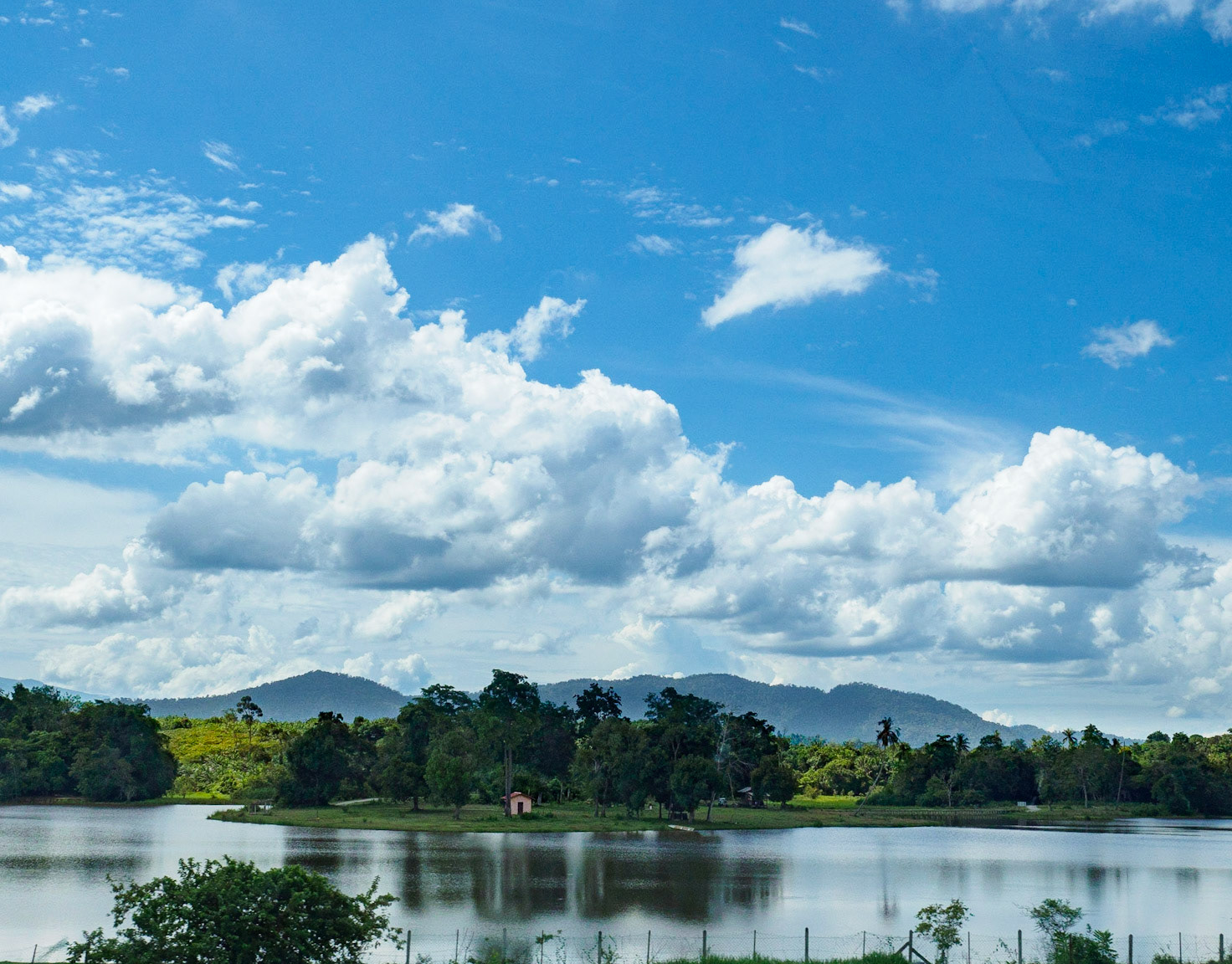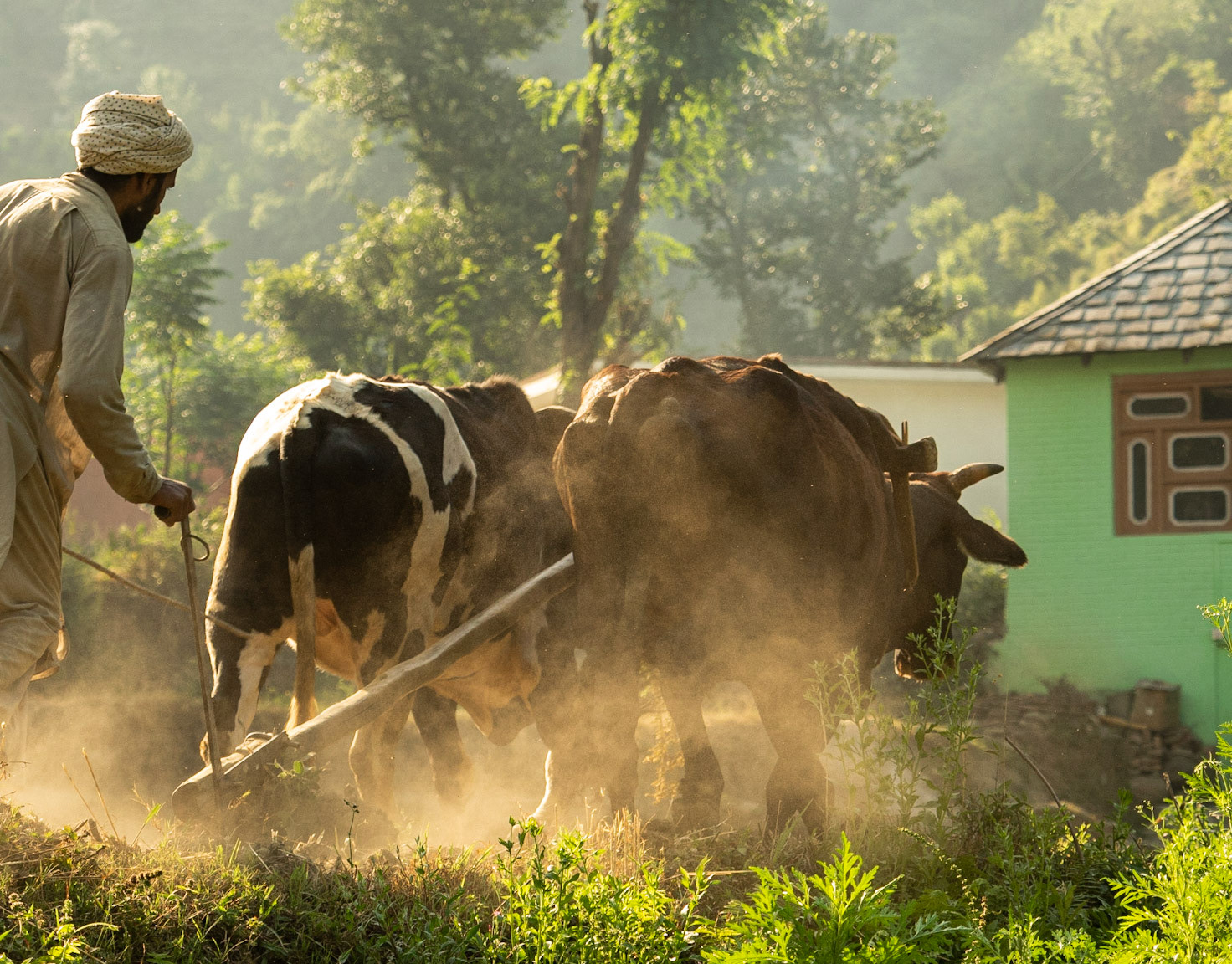
Found in Himachal Pradesh (India), tucked away in a bush, this one was scary.
Caught in it's unflinching glare, my palms were sweaty, I could barely stand my ground. I kept my distance, held my breath just about long enough to get this shot before I retreated.
I know spiders are territorial, but given my experience with them I dont usually get stared down. This one was different.
I'm glad I stepped back though - becuase I started seeing the world around me again, I realised i was 8 inches from a rock snake! To this day, I do not know if he was more surprised at seeing me move, or I of him!

Three insects that are hard to photograph in the wild - ants, spiders and caterpillars.
Ants just keep running around all over the place, traversing a bush in under a minute; spiders are notoriously shy and territorial. Caterpillars - well there are just plain busybodies. Always hungry, always moving up and down a stalk or a leaf looking for their next snack.
This one was especially difficult to photograph - all those furry setae (the hair of a caterpillar) made it incredibly difficult to get a good look at her face, while she of course, was studiously intent on steaming off to hide and grab something more to eat in peace.
I shall deem this one of my more tenuous photos - I was delicately balanced at the edge of a cliff, one foot on a (presumably) discarded anthill, sweat streaming down into my eyes, all the while ignoring the wasp-like mosquitoes that decided I made a sumptuous buffet table!

Rufous Legged Grasshoppers

I'm not a morning person, but if I keep spotting birds like this sitting around, I may have to get myself an alarm clock!
I don't know the exact name of this bird. I learnt though, that she's part of a clan generally called Old World Sparrows and falls into the category of Perching Birds (which is kind of evident here).
She was staring down at a valley as she perched at the crest of a hill. My assumption is that the promised worms hadn't yet awoken, 'cos she sat there for far too long and look very unhappy about things.

Oriental Latrine Fly

This guy sure was a busybody! It took me a dozen tries to get him face-on towards the camera.
While "cute" and "fuzzy-wuzzy", the hair (called setae) are actually quite prickly and pierce the skin easily (much like the spindles of a cactus plant). Hence I needed to stay away from those while cajoling Mr. Lappet to pose. He didn't comply :(
I'd seen a similar caterpillar after metamorphosis - it had turned into a beautiful moth with an extremely leaf-like appearance, which made it extremely difficult to spot in the wild. I'll add that photo on once I find it.
Meanwhile, I'll leave you with this - the body segments of a caterpillar are called Somite or Metameres.

Rose Myrtle Lappet Moth Caterpillar

Sylvana Jumping Spider

White-Legged Damselfly

Considered a pest because of this insects ability to infect sheep and wool (known as flystrike), resulting in multi-million dollar losses to the wool industry.
Yet on a golden sunny day after the rains, it makes for a very pretty shot.
I didn’t really consider flies (of any kind) remotely interesting, till I starting seeing photos I took of them. Hopefully you'll discover the same wonder in this ubiquitous creation too.

When you've eaten too much and just want to crawl into bed and snore it off!

Fully grown larva of eleven-spotted ladybird

... at the cafeteria!

Insecta Coleoptera Curculionidae Lixus Iridis

This is a Dandelion Seed Pod. And it makes a great walkabout for ants, beetles and an occasional horsefly.

Nile Crocodiles are large, fearless animals with very strong bites. Despite their size, they are extremely agile in the water and (almost as good) on land. The can take down everything from a rabbit to a full-sized hippopotamus.
While they are the ultimate carnivores, Nile crocodiles can actually survive for years without a meal (thanks to their amazingly efficient metabolism)! Obviously, they don't wait that long - they eat a few times per month or whenever opportunity knocks.
When they do decide to indulge, Nile Crocodiles can consume up to half of their body weight at a time.




All boas are constrictors, but there's only one Boa Constrictor.
"Boa" is a common name for more than 50 constricting snake species; but there's only one big-daddy among them - thus the entire family carries his name.
It's very rare for a species' common and scientific names to be the same (in the case of the Boa Constrictor)... I guess there wasn't much argument around his claim!
Do you know, Boa Constrictors are "ovoviviparous" - meaning the mother holds on to the eggs inside her body until they're ready to hatch, at which point she ejects the live young. And, the baby boas hit the ground slithering! They are independent within minutes of their birth!

A mostly-herbivorous lizard, the Green Iguana is most commonly found in Central, South America - from Brazil and Paraguay to Mexico to as far the Caribbean Islands!

Found across much of Central and South America, the Spectacled Caiman is highly adaptable of it's surroundings.
It can thrive in salt water as well as fresh water. Due to this adaptability the Spectacled Caiman is the most common of all crocodilian species.

Named for the keeled scales on their long tails, the Western Spiny-Tailed Iguana can grow up to 4.5 feet in length!
The crest of long spines extending down the center of their back makes them appear akin to dragons.
These iguanas are excellent climbers, and prefer a rocky habitat with plenty of crevices to hide in, rocks to bask on, and nearby trees to climb.

I don't know the name of this one, but it sure is the picture of me, back from a photo-trek!

Found mostly in Central America, the Green Basilisk is a plumed, helmeted lizard.
The Green Basilisk the largest of the basilisk species, with an average length of 3 feet.
They are omnivorous and eat everything smaller than themselves - insects, small mammals like rodents and smaller species of lizards. For palette cleansing purposes, they'll endure fruits and flowers too :)

The Komodo Dragon is actually a monitor lizard - the largest living species of lizards. It's known to grow to a length of 10 ft in some cases, and weighs up to 70 kilograms!
Komodo dragons hunt and prey on invertebrates, birds and mammals.
It also believed that they have a venomous bite - powered by two glands in the lower jaw that secrete toxic proteins - a theory I was not interesting in corroborating, one way or another!

Caique

Full stretch Paris Peacock Swallowtail

Paris Peacock Swallowtail - Perched on a wall

Also known as the Lime Butterfly or Lemon Butterfly (thanks to their penchance for citrus plants), Lime Swallowtails are "fun" butterflies for me.
They aren't as flighty as other butterflies, and they are easily bribed through fruit platters.
Found all the way from Asia to Australia, I've read that they've even reached areas like the Dominican Republic, Jamaica and Puerto Rico!
I found this one hanging around an outdoor wedding reception, in Malaysia. So, their Wikipedia page needs an update.

Common Sun Skink

